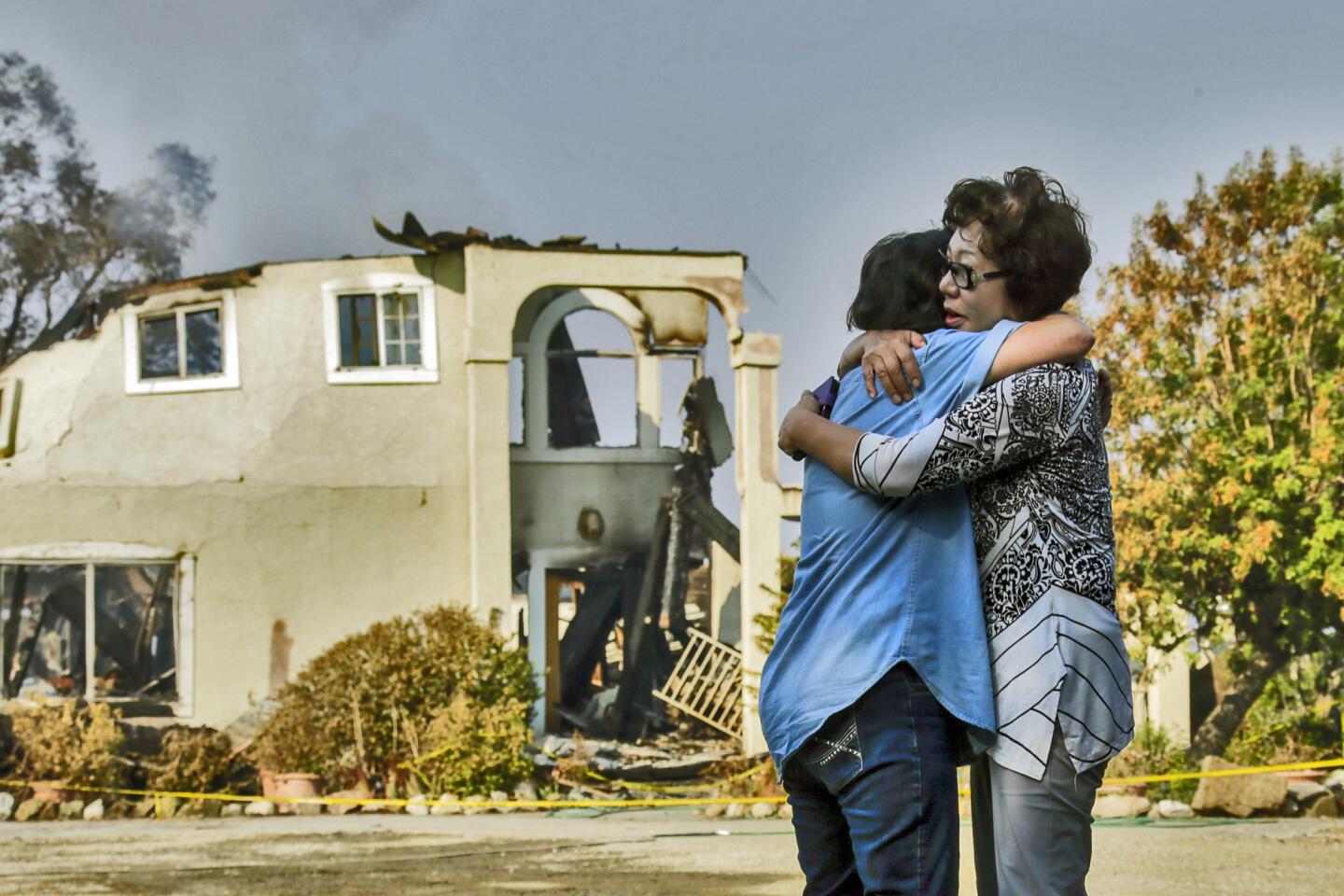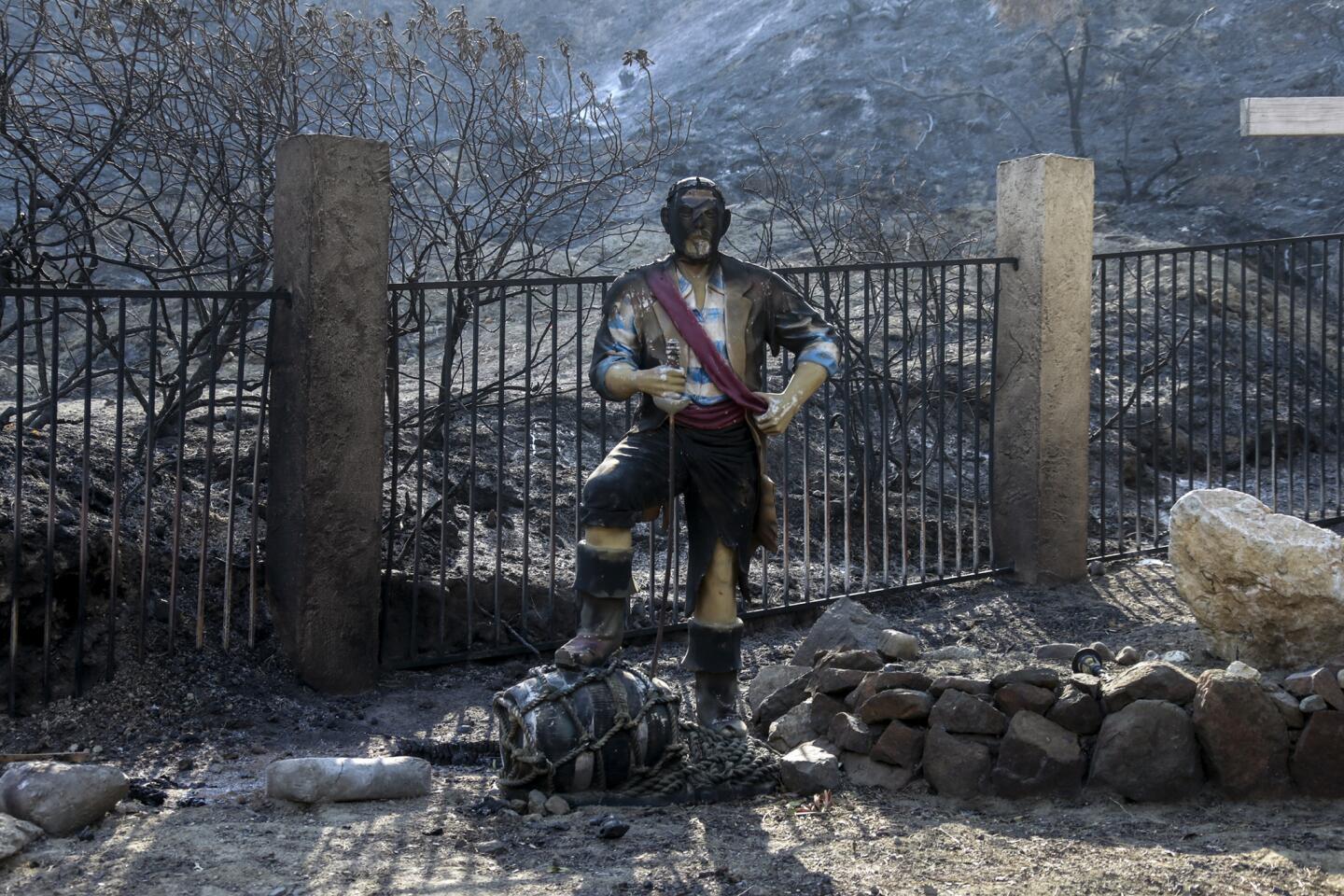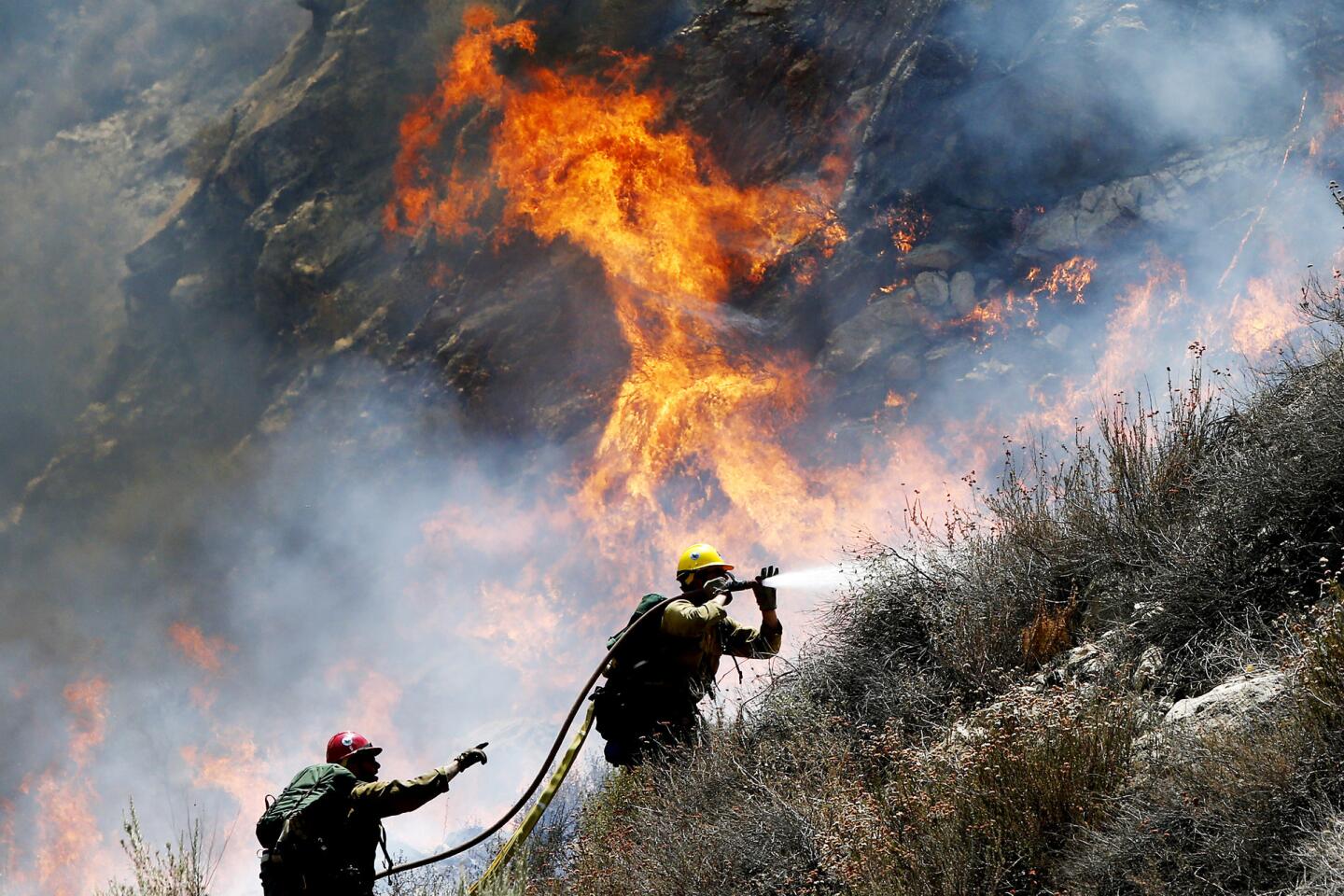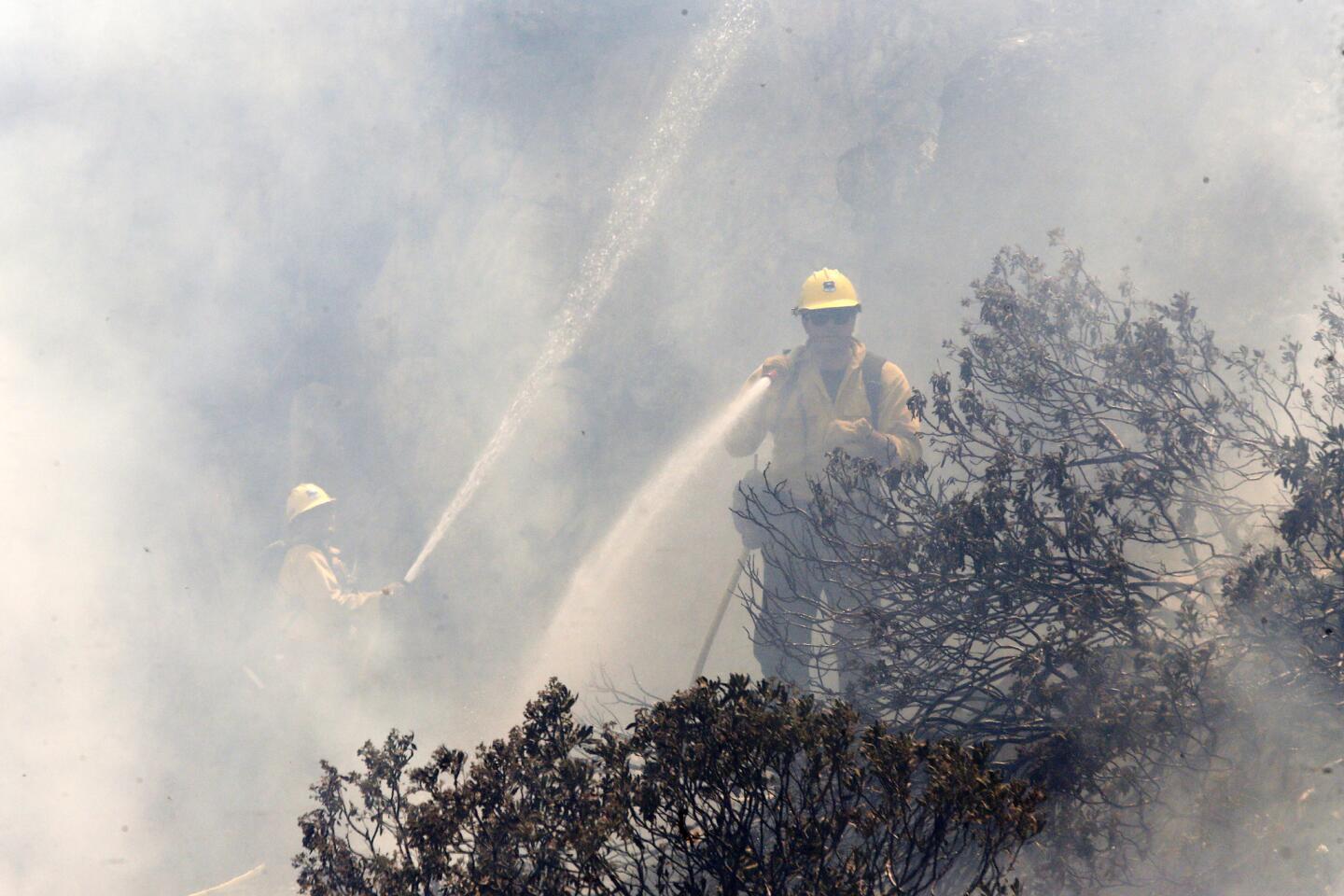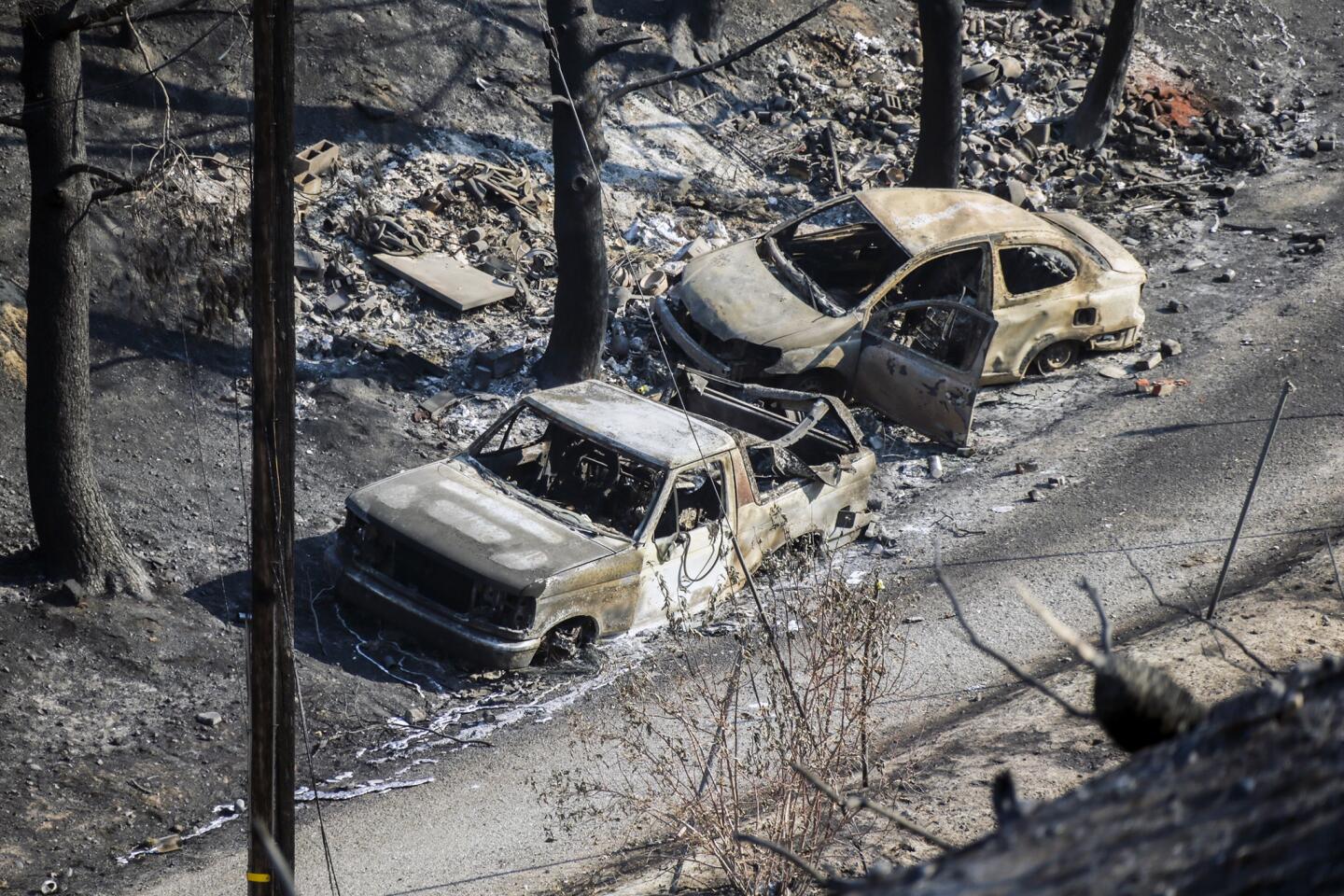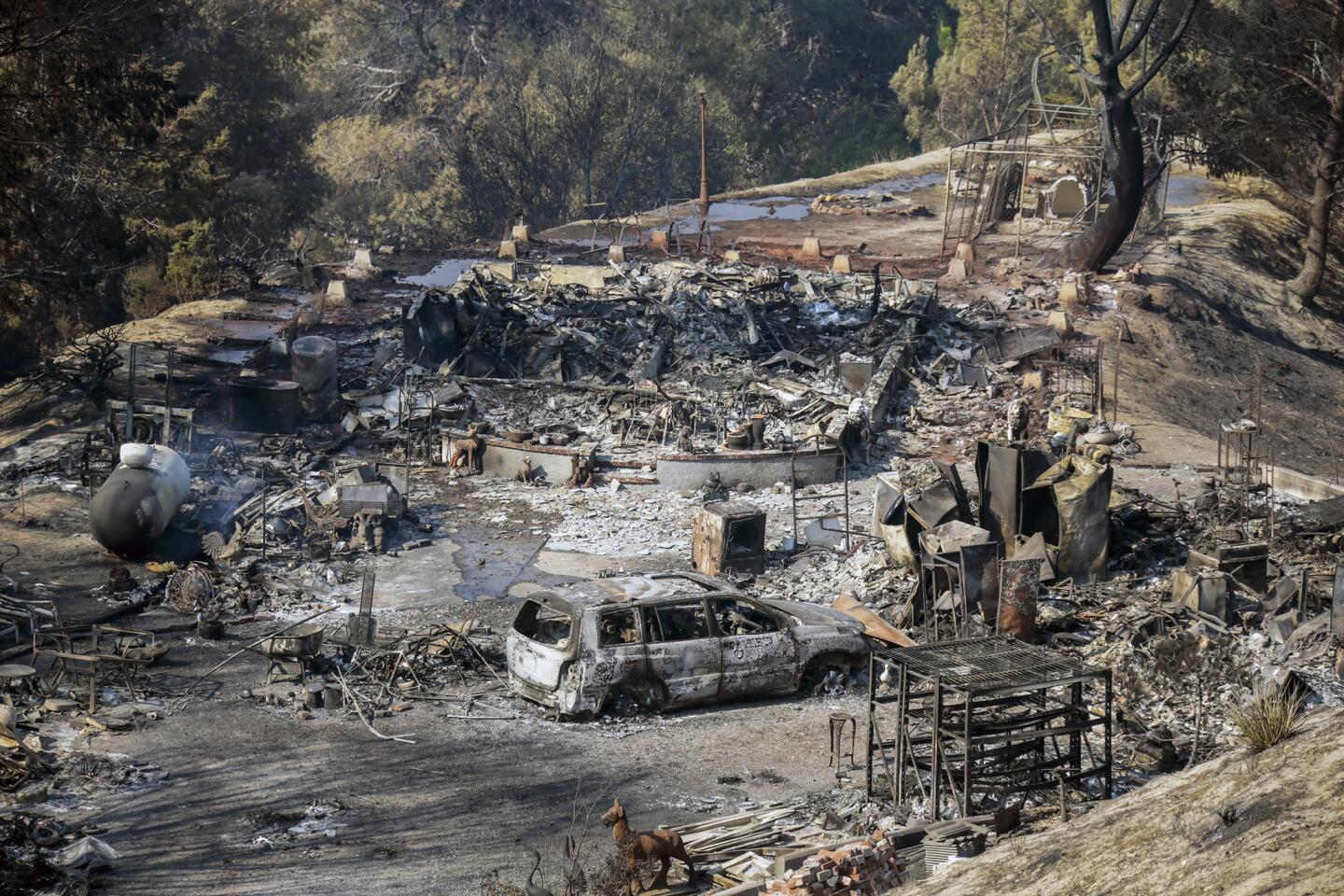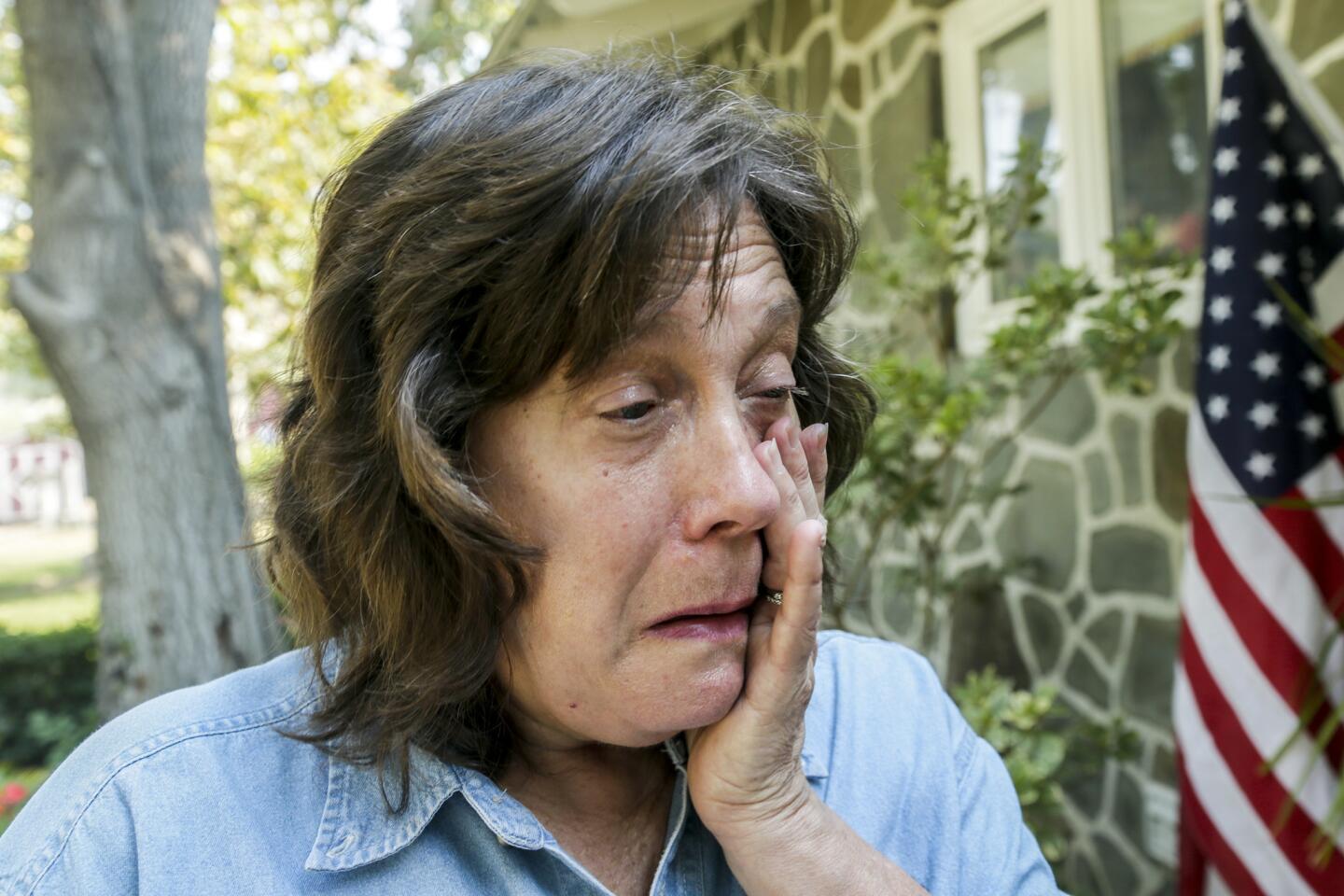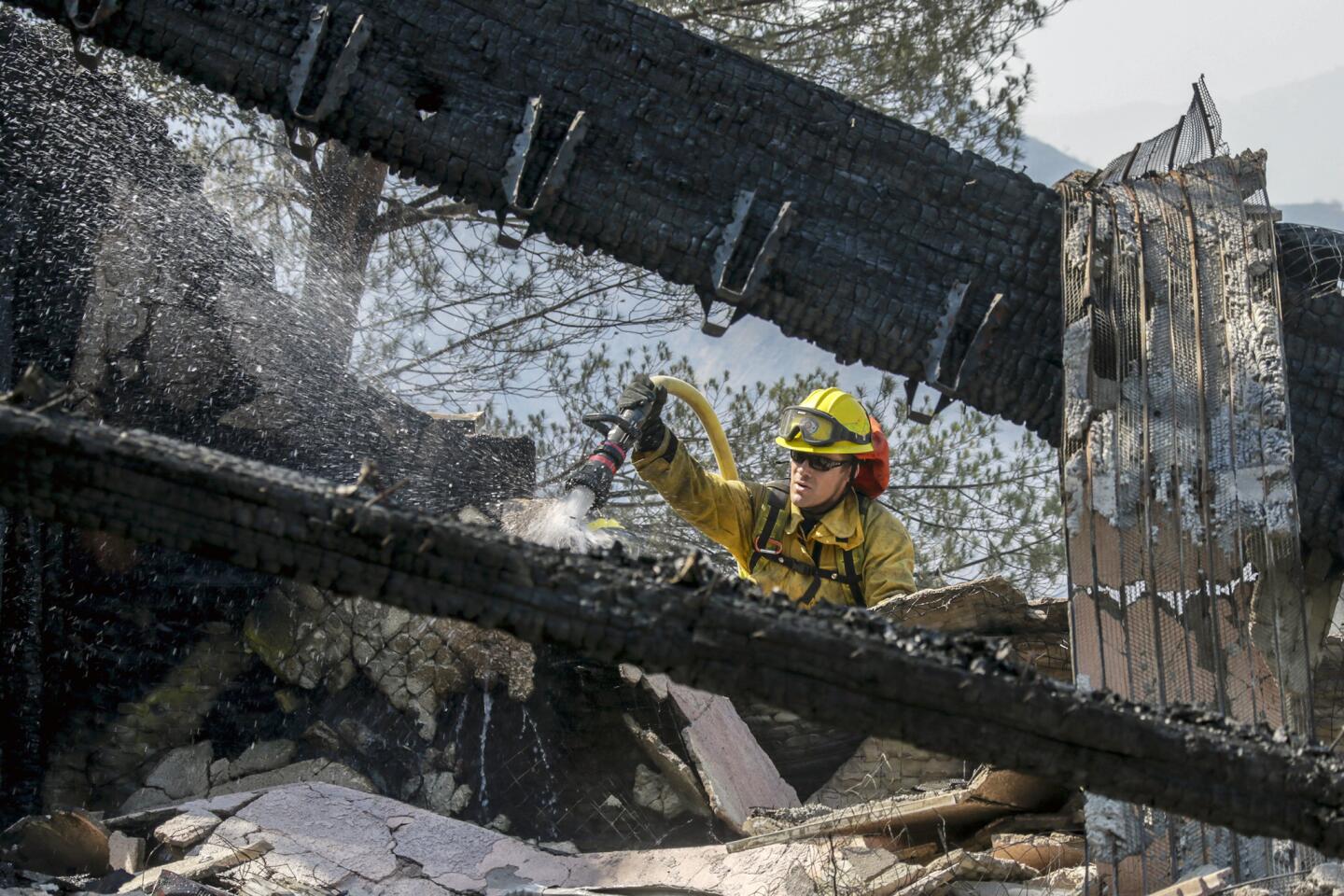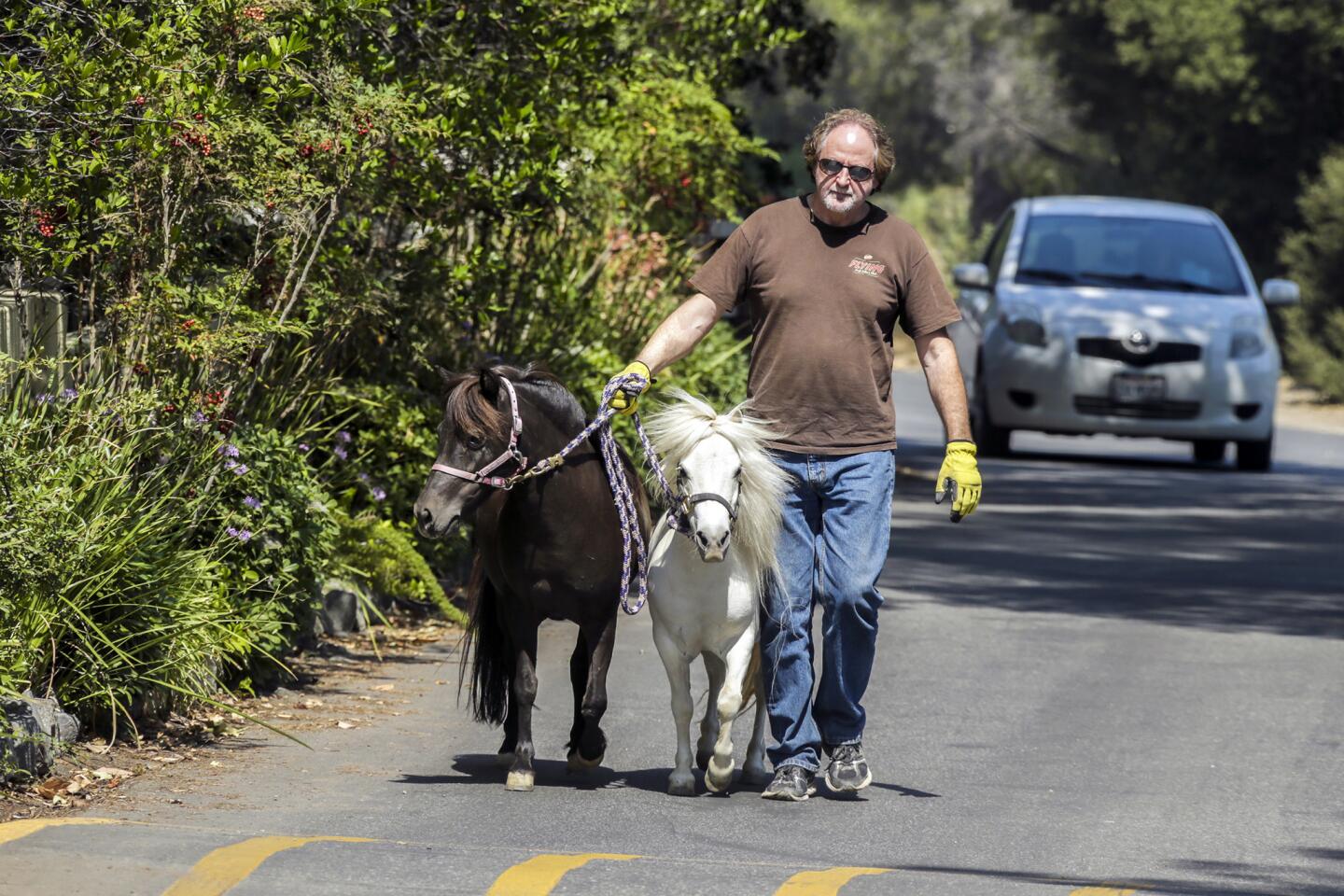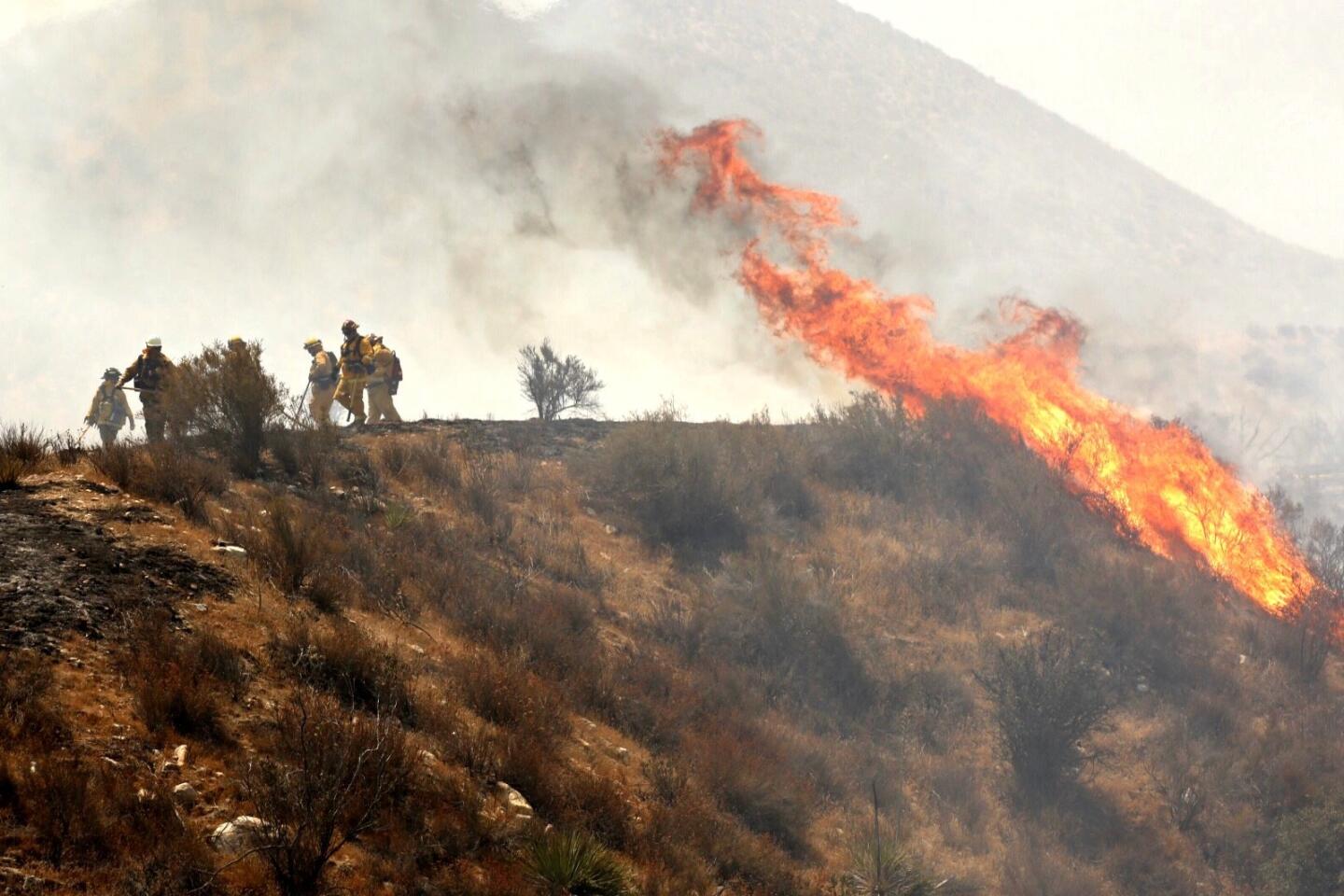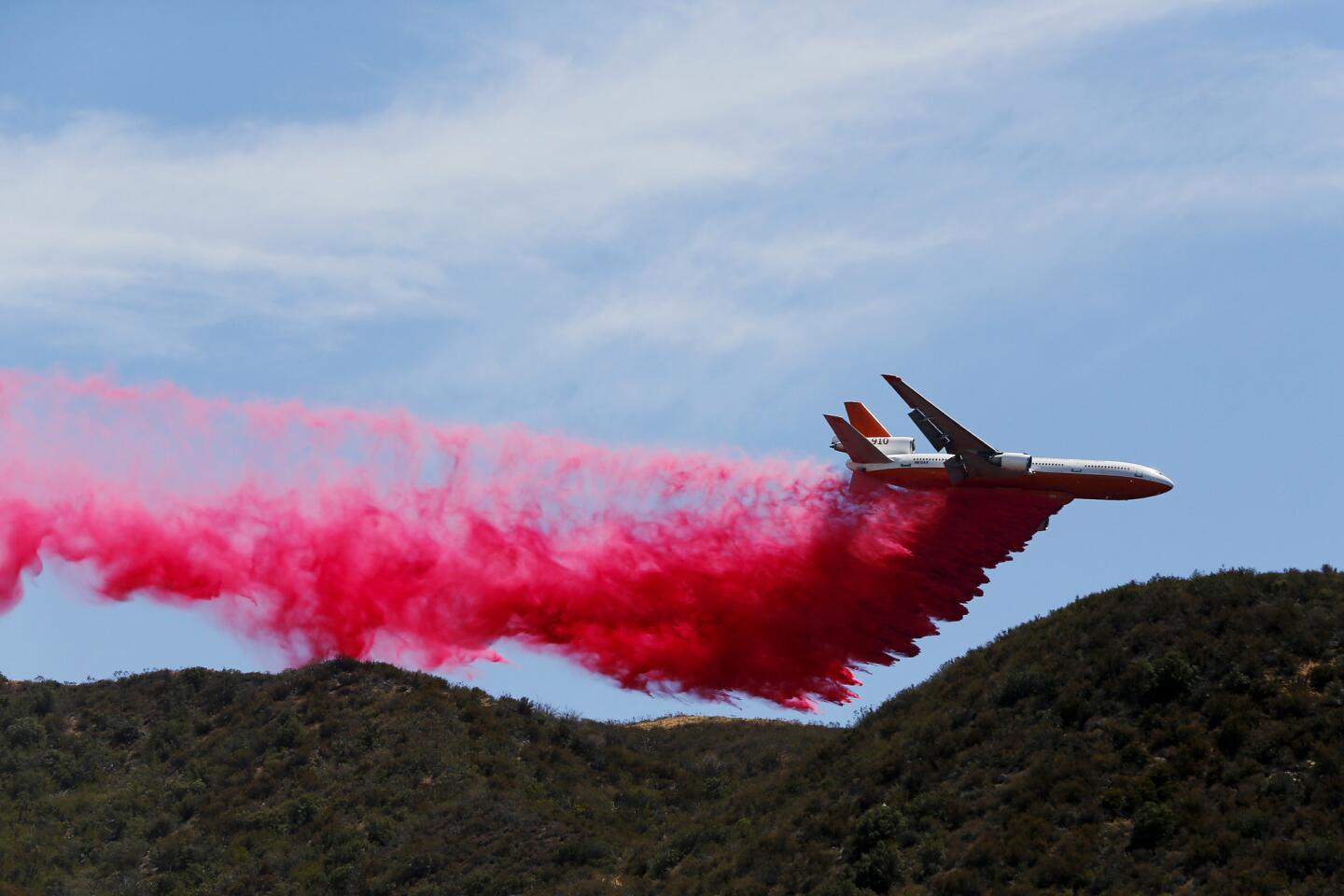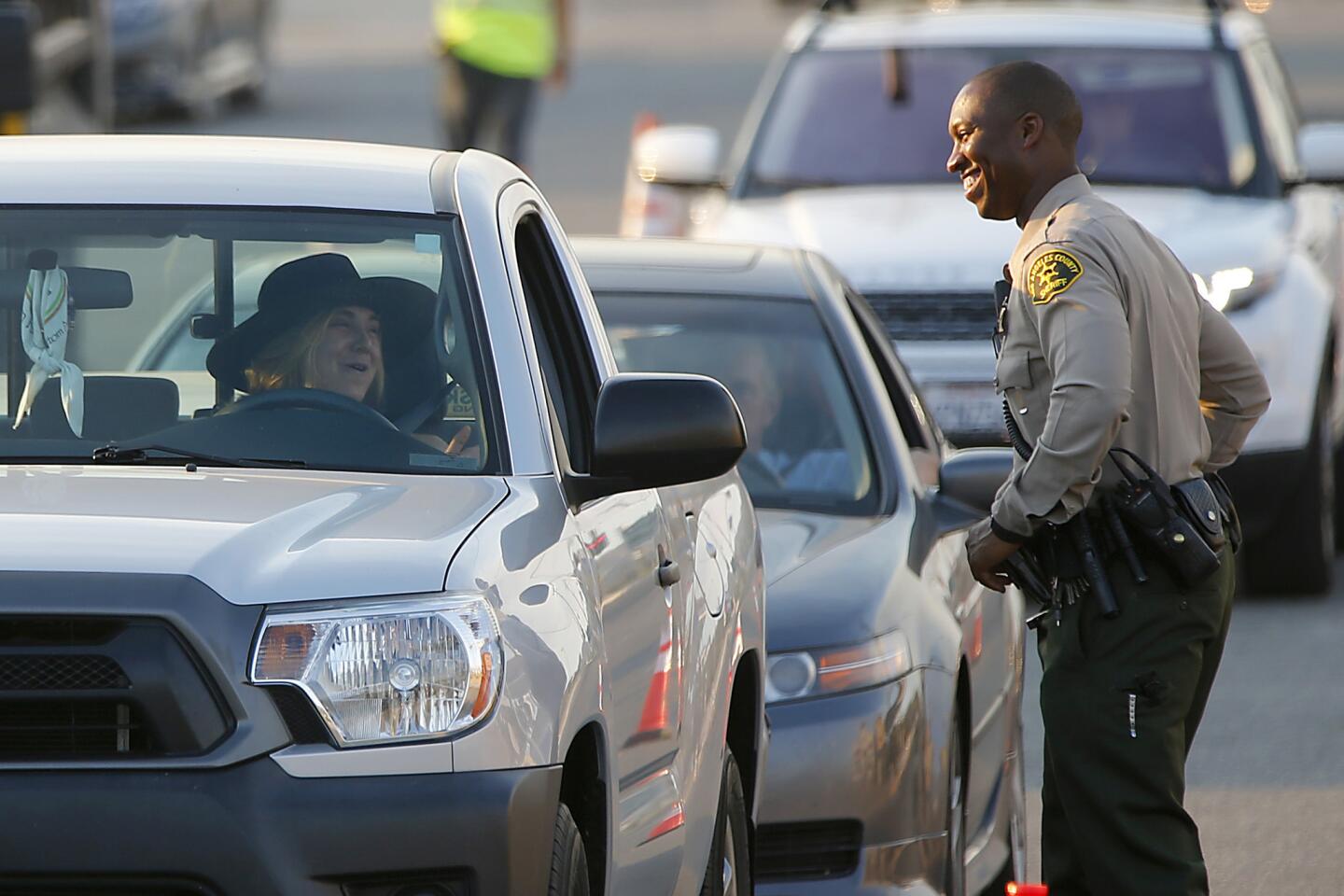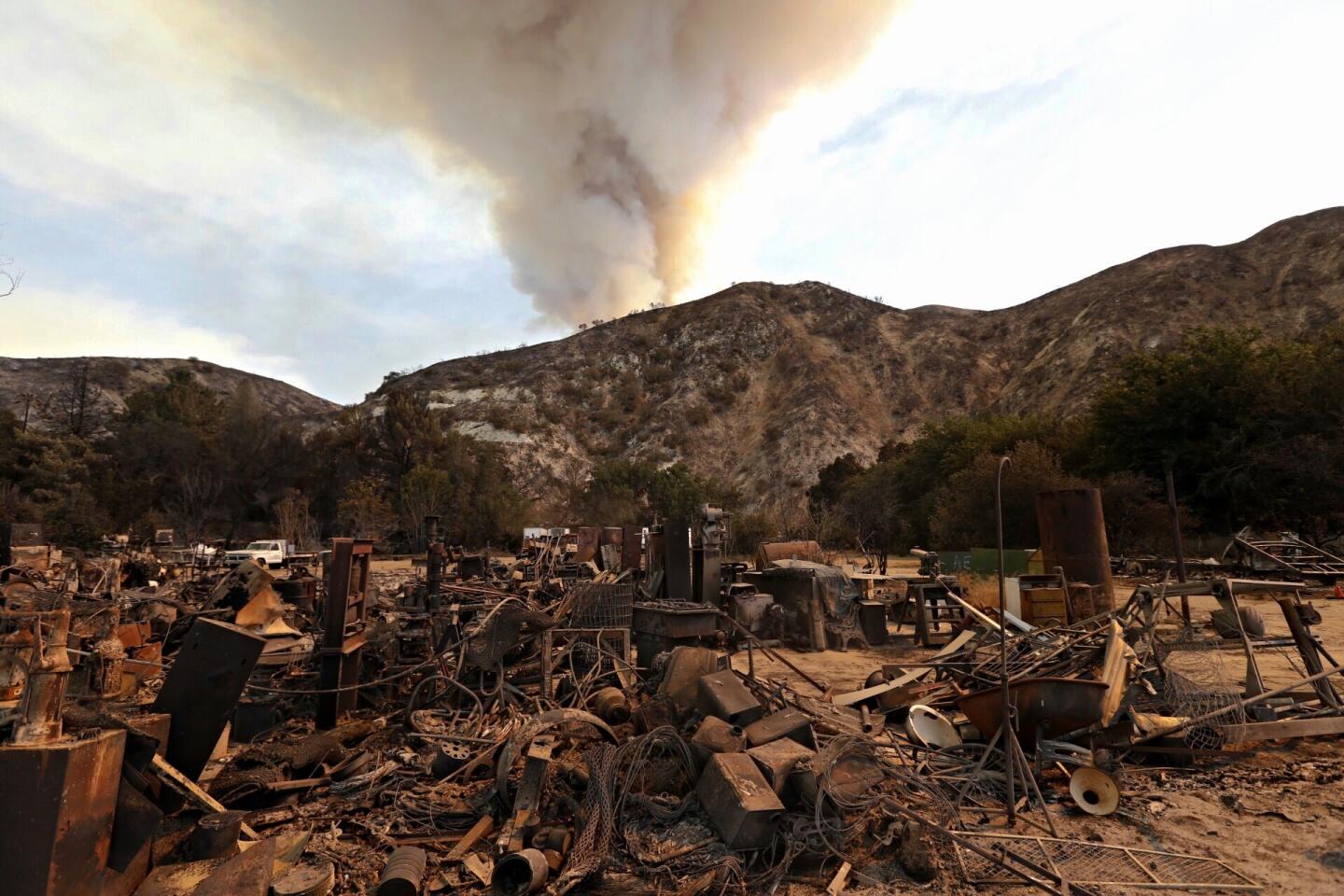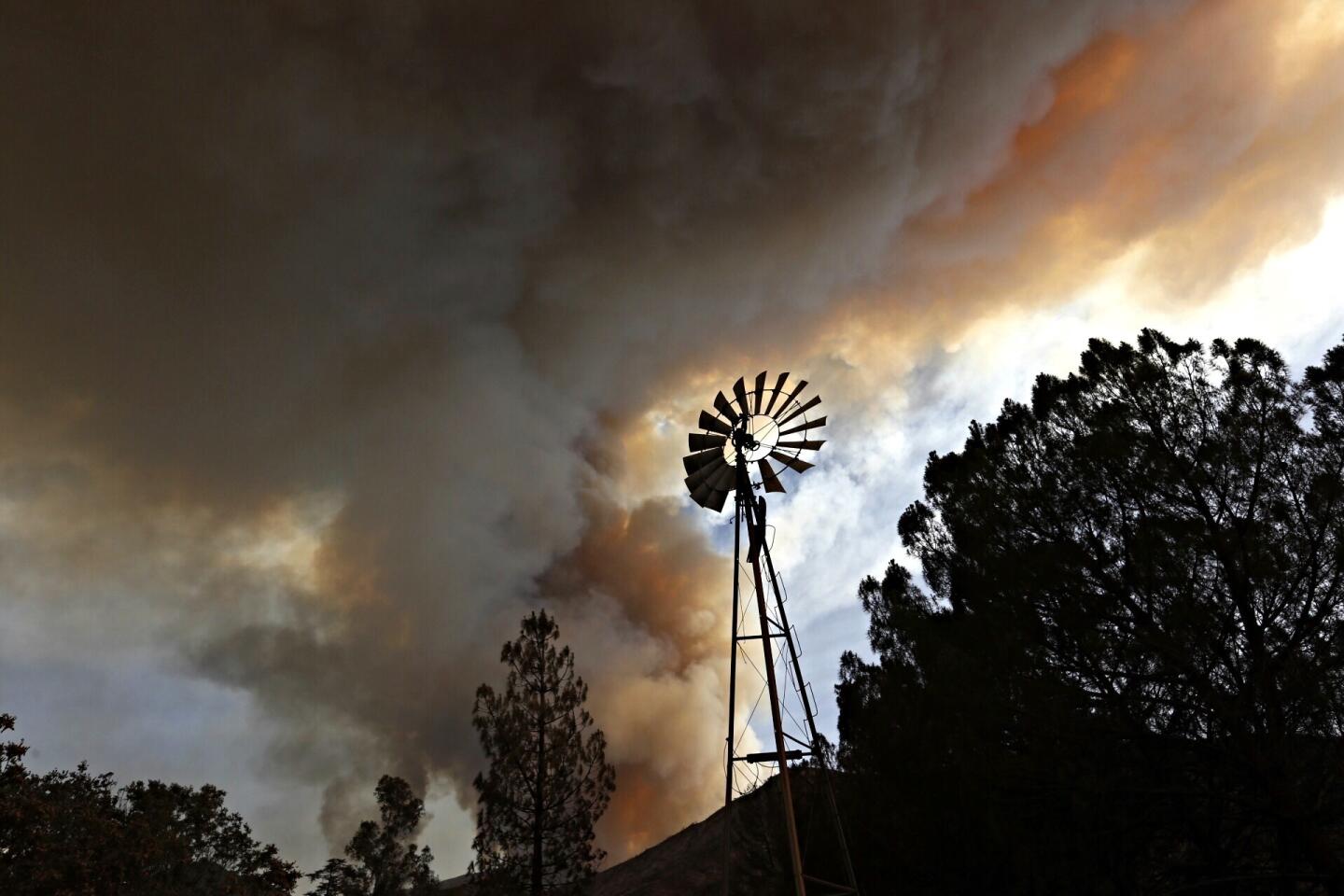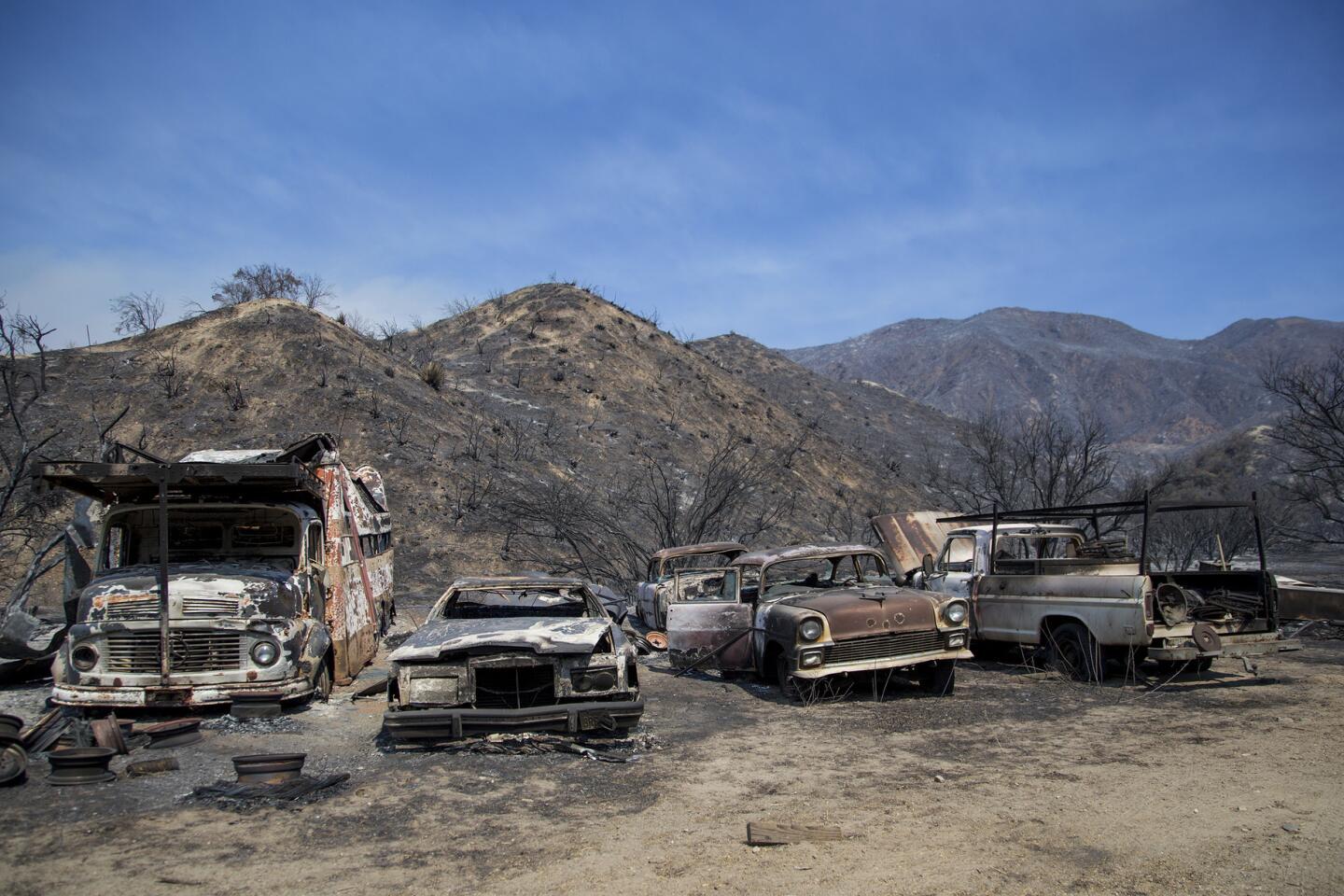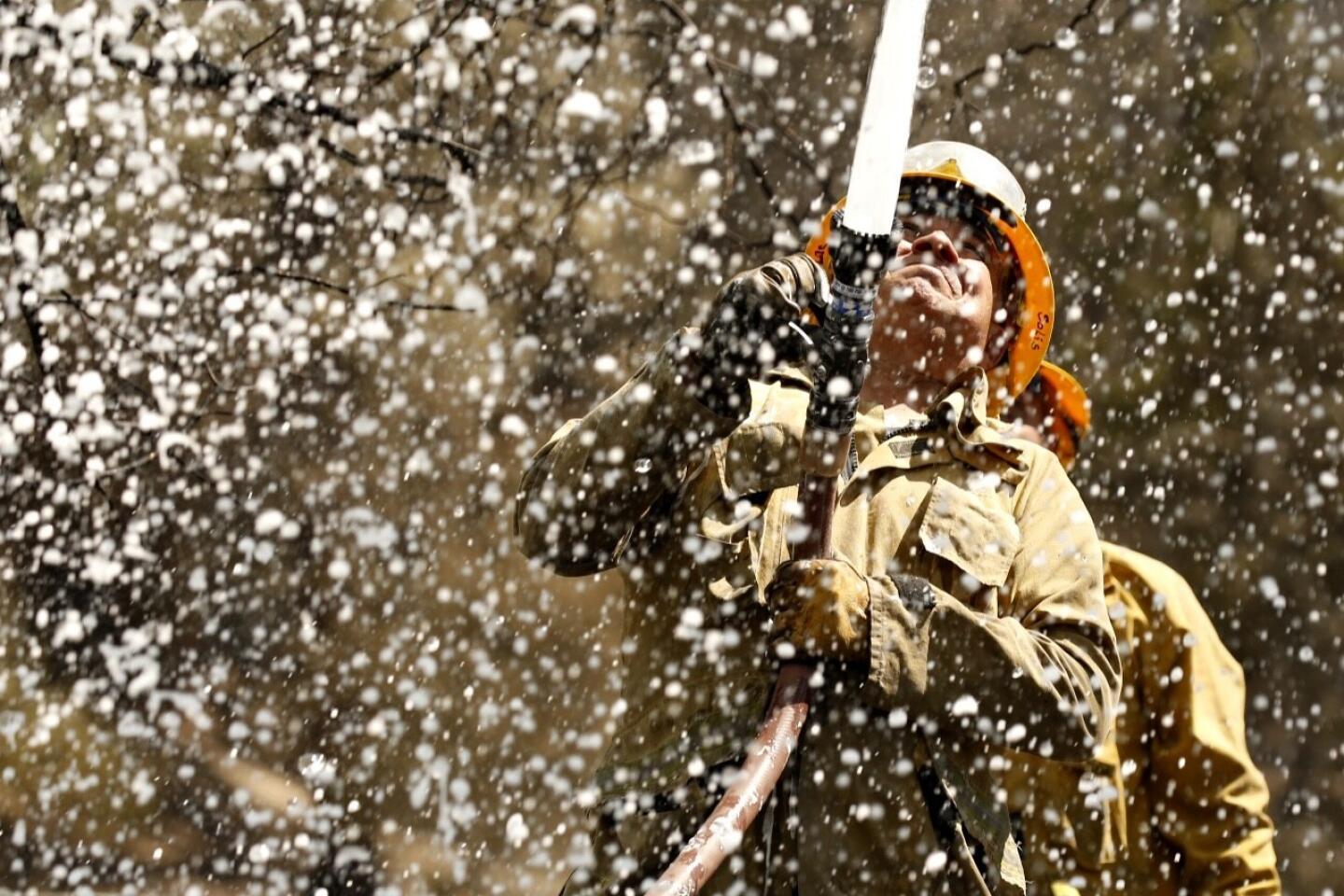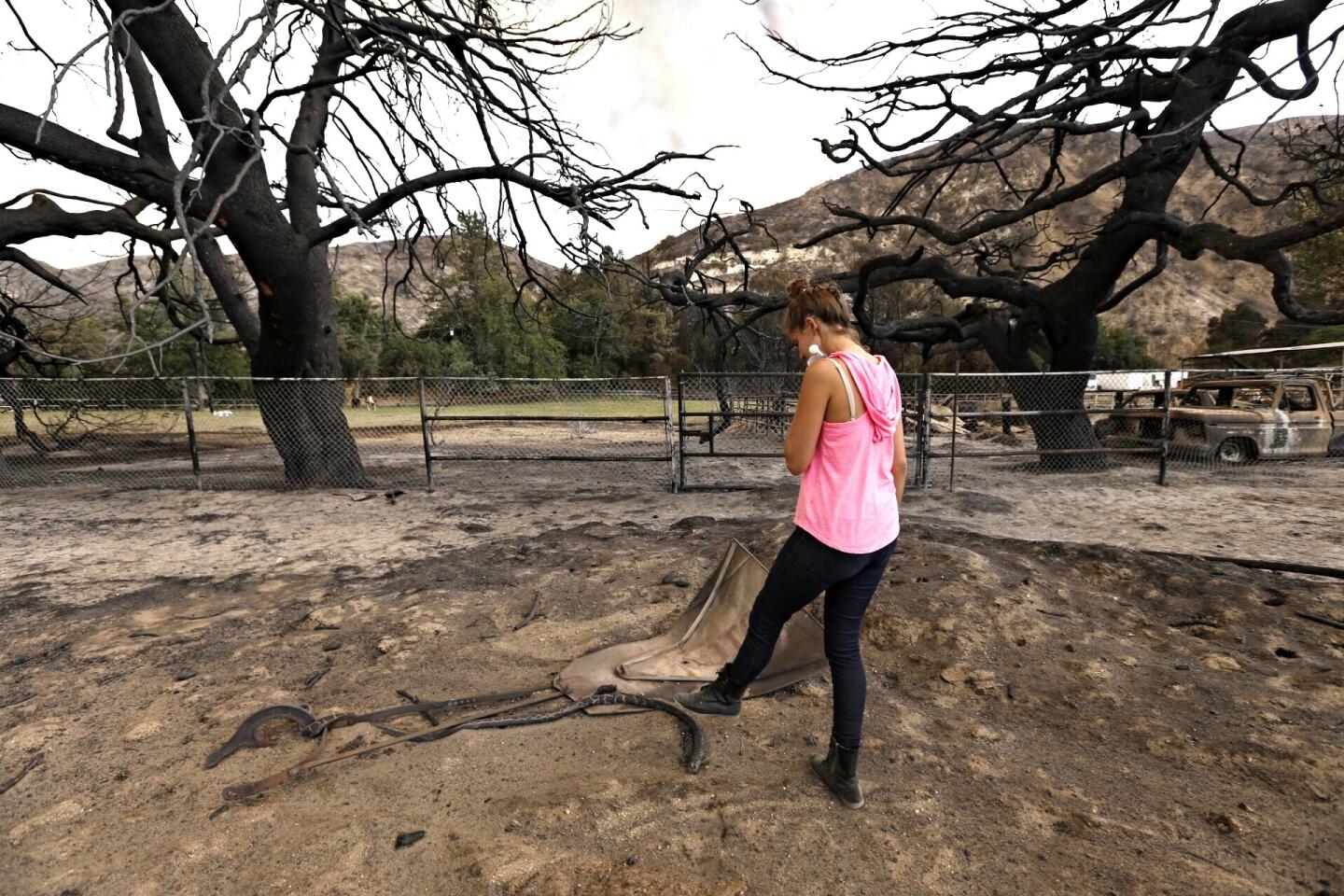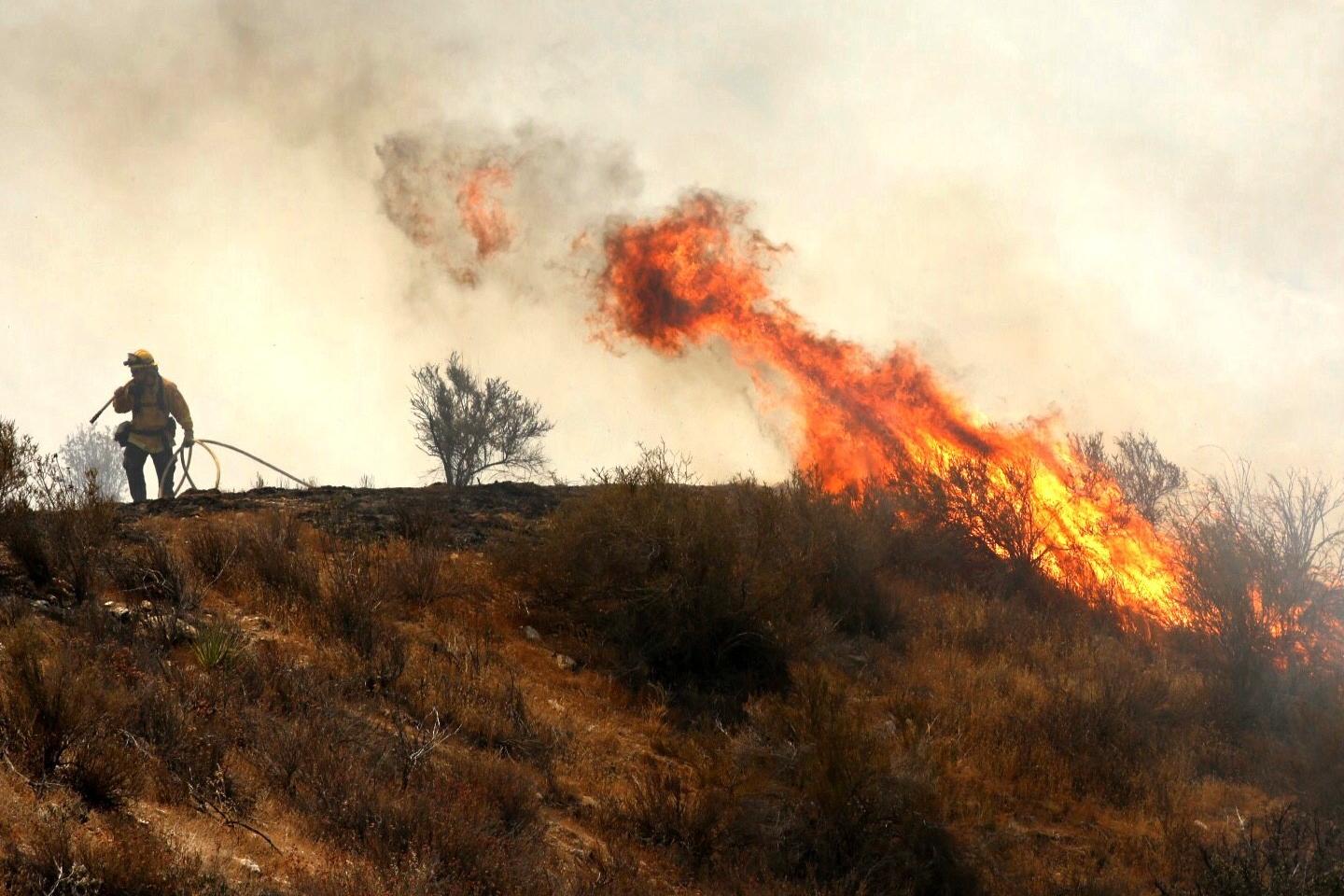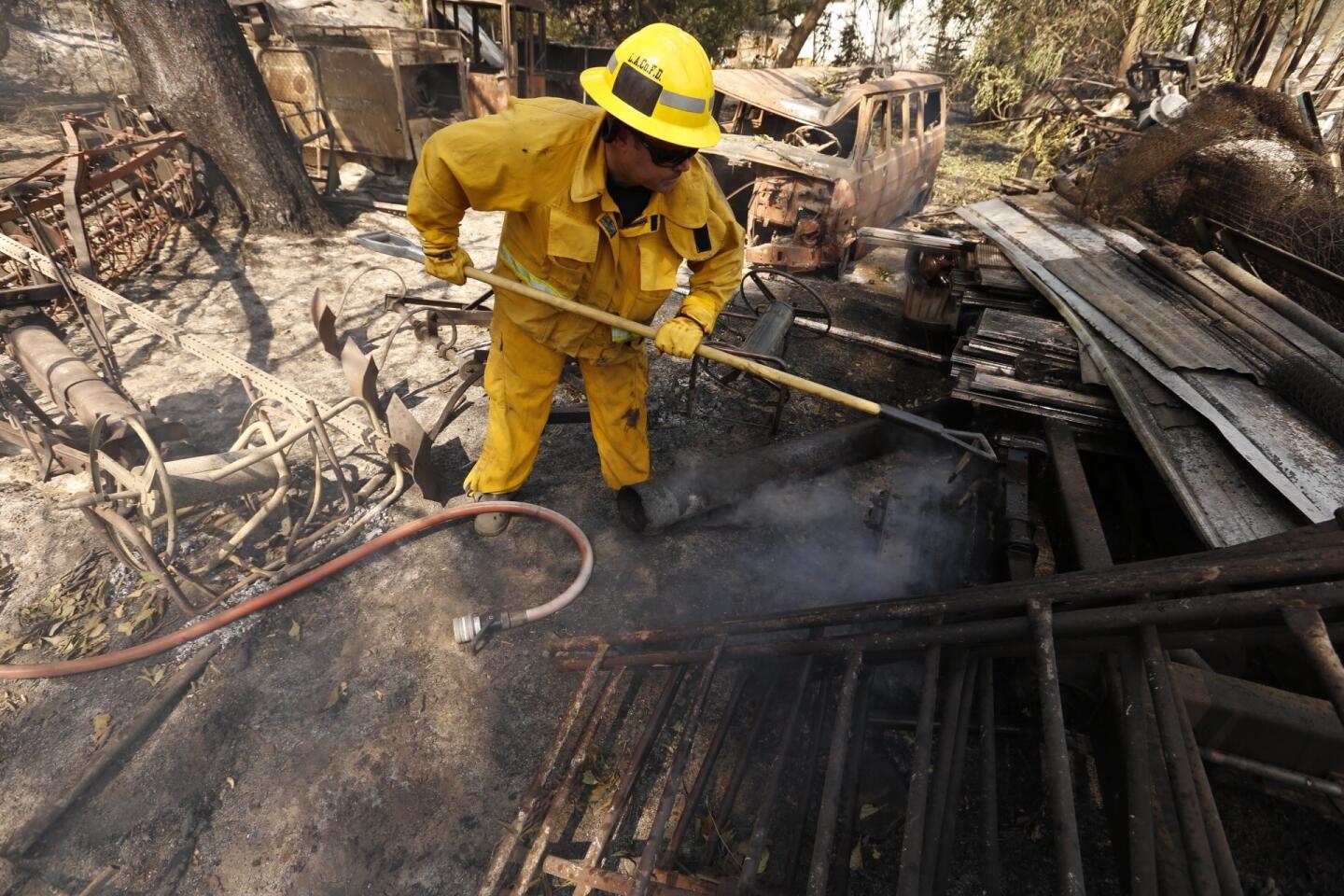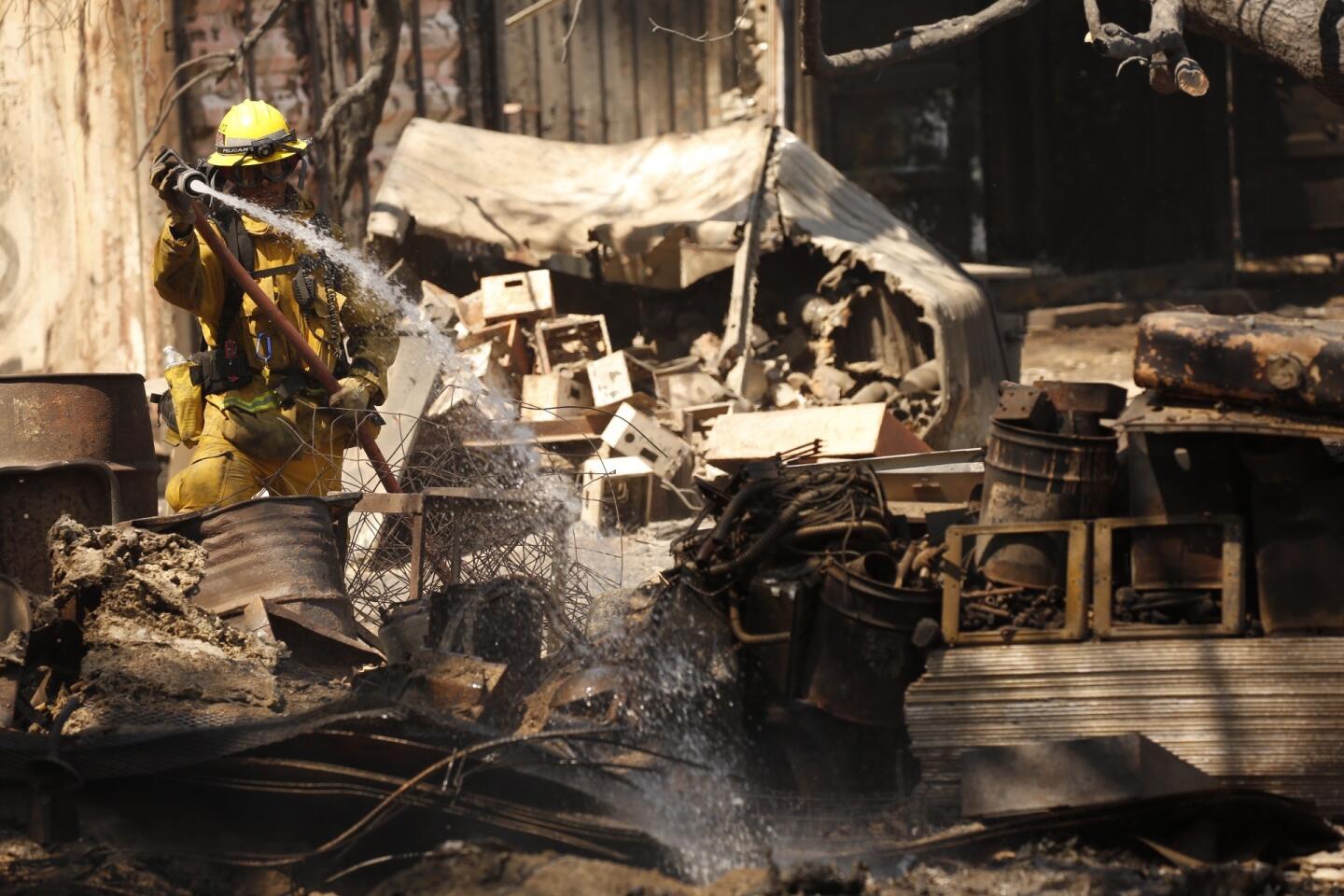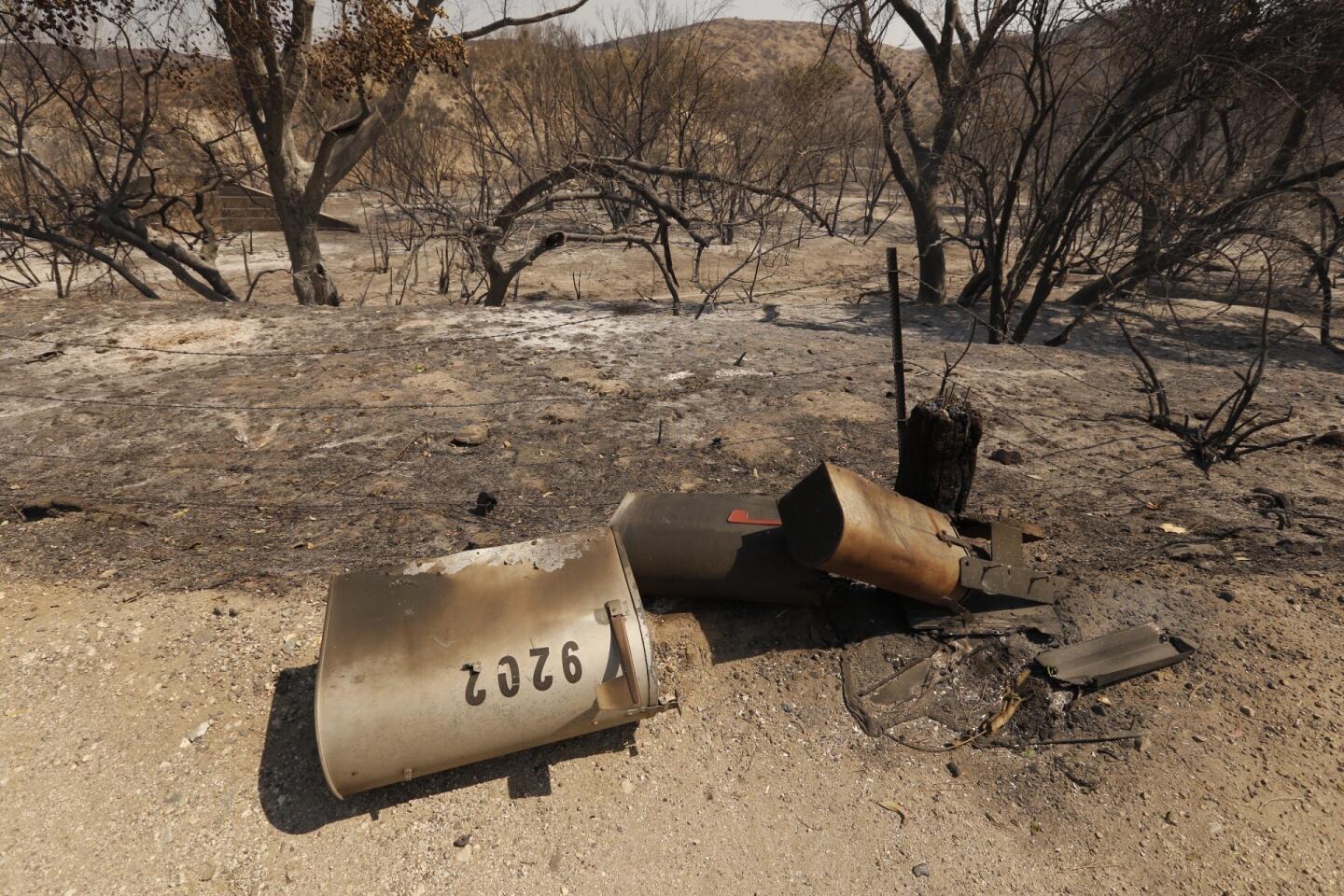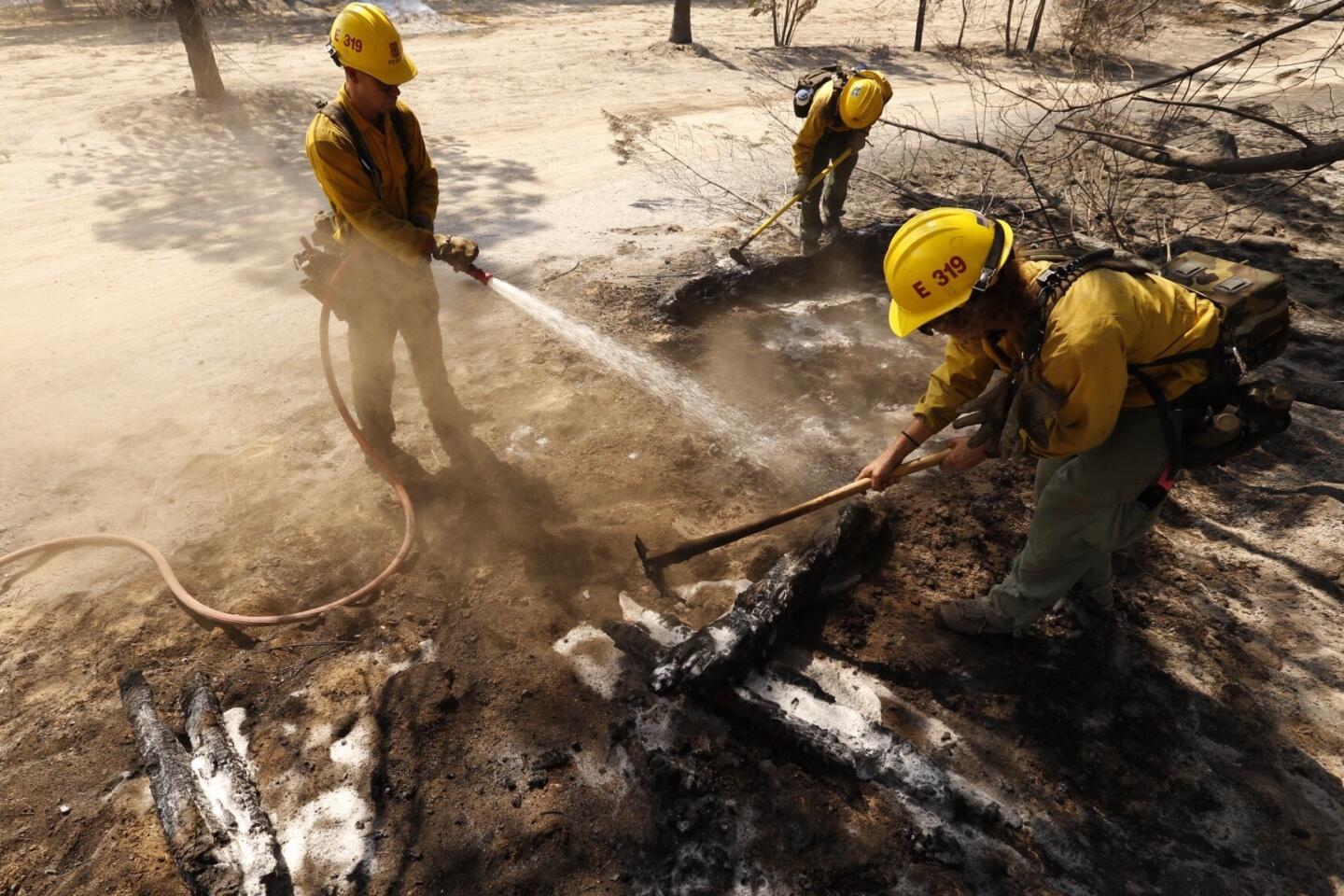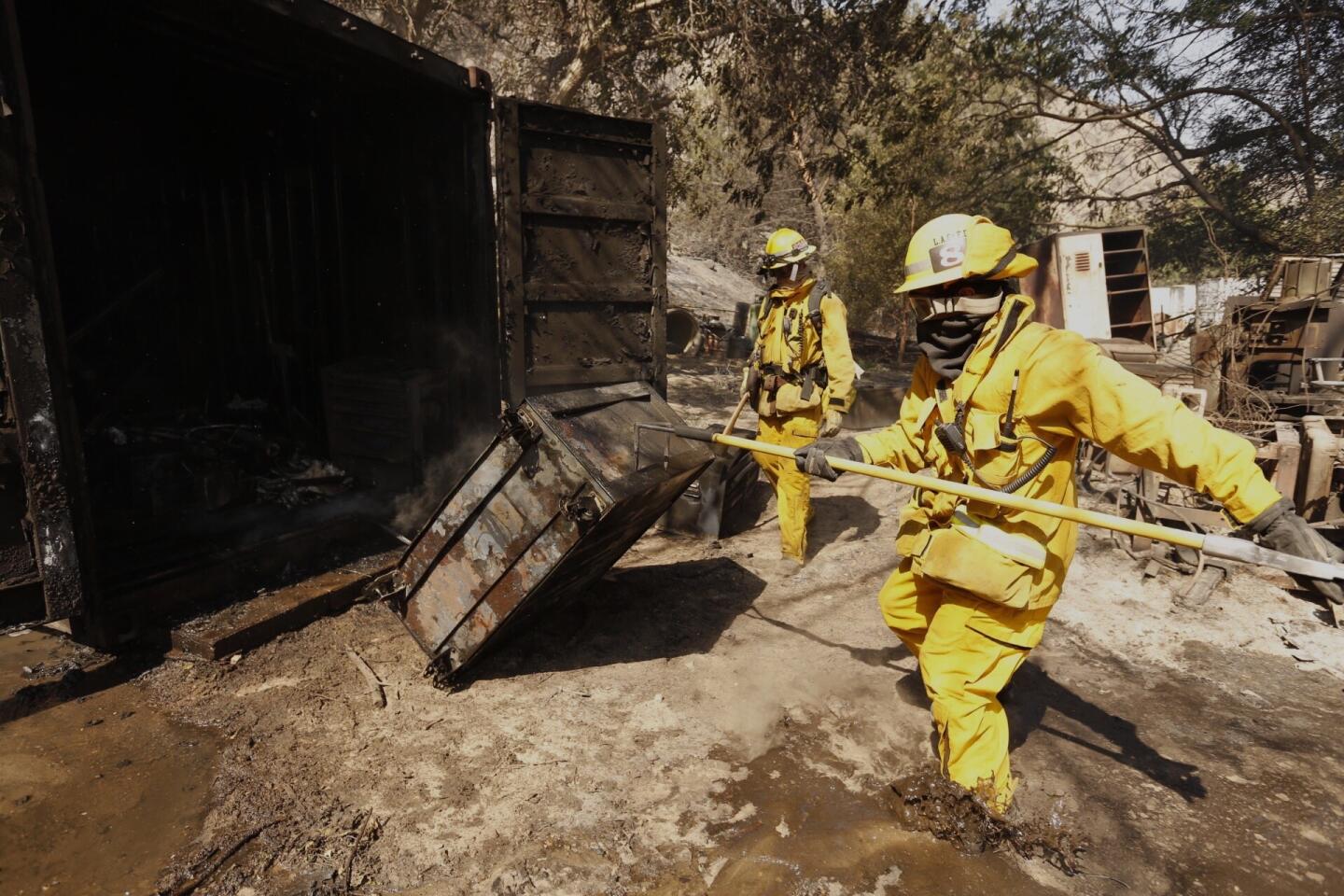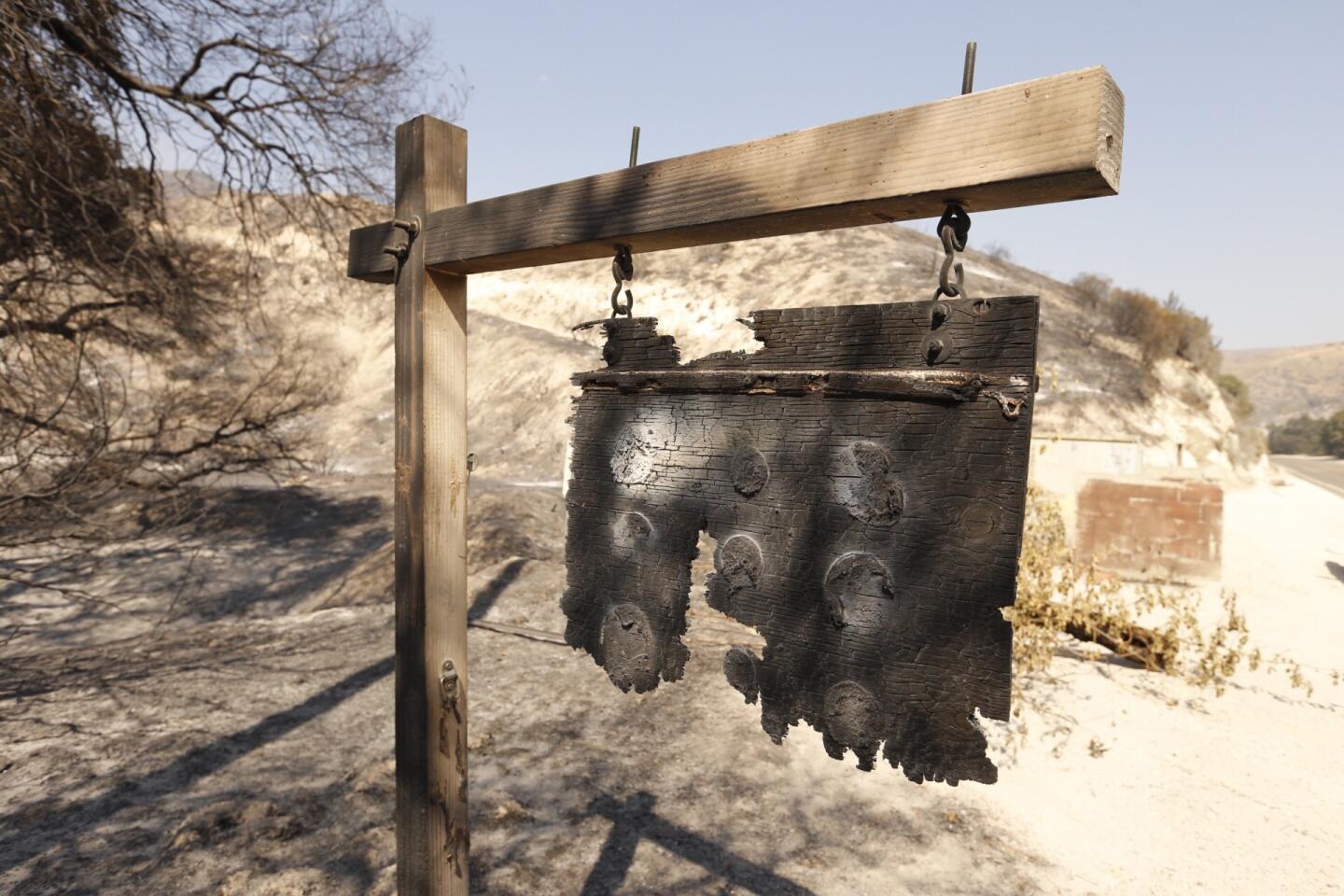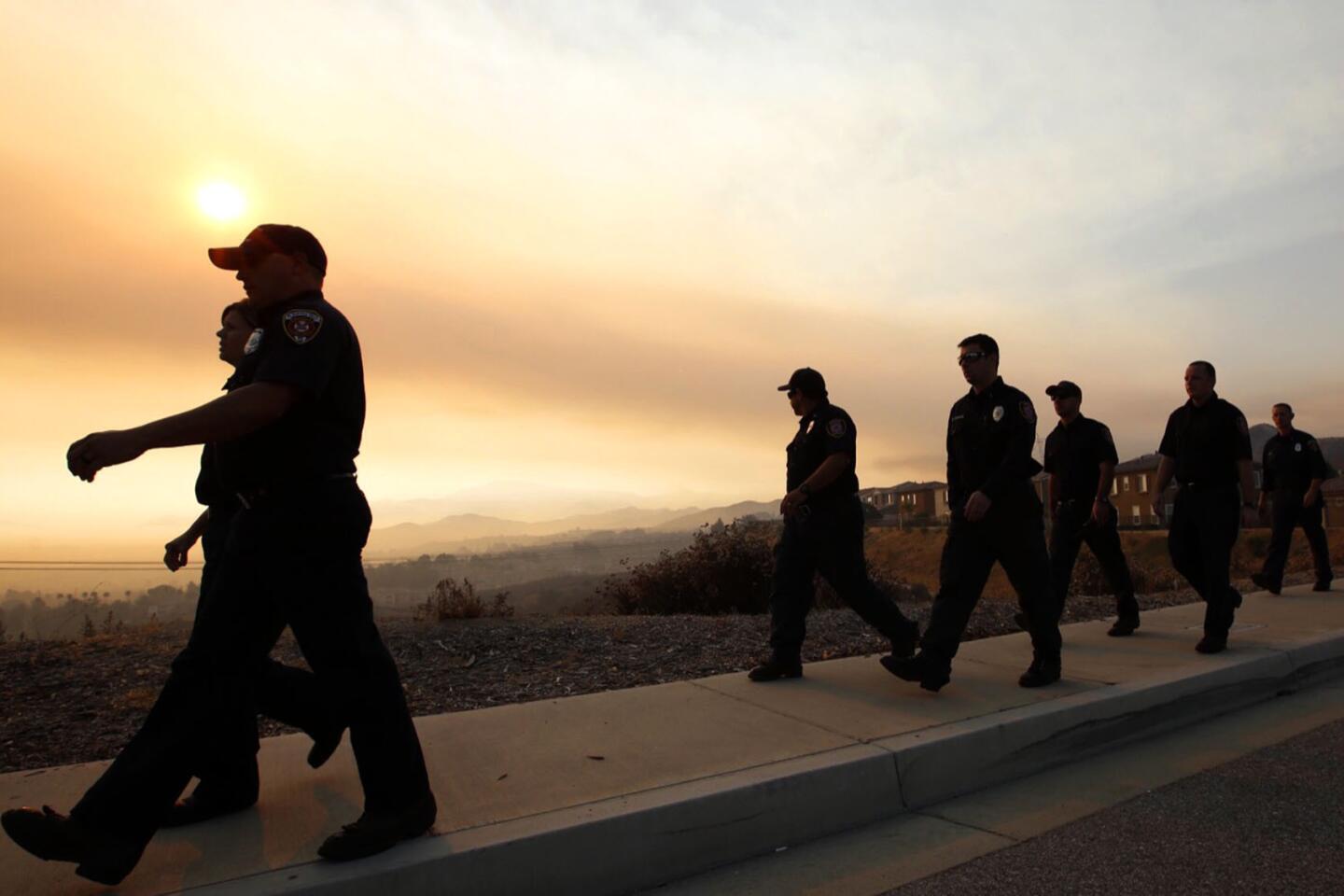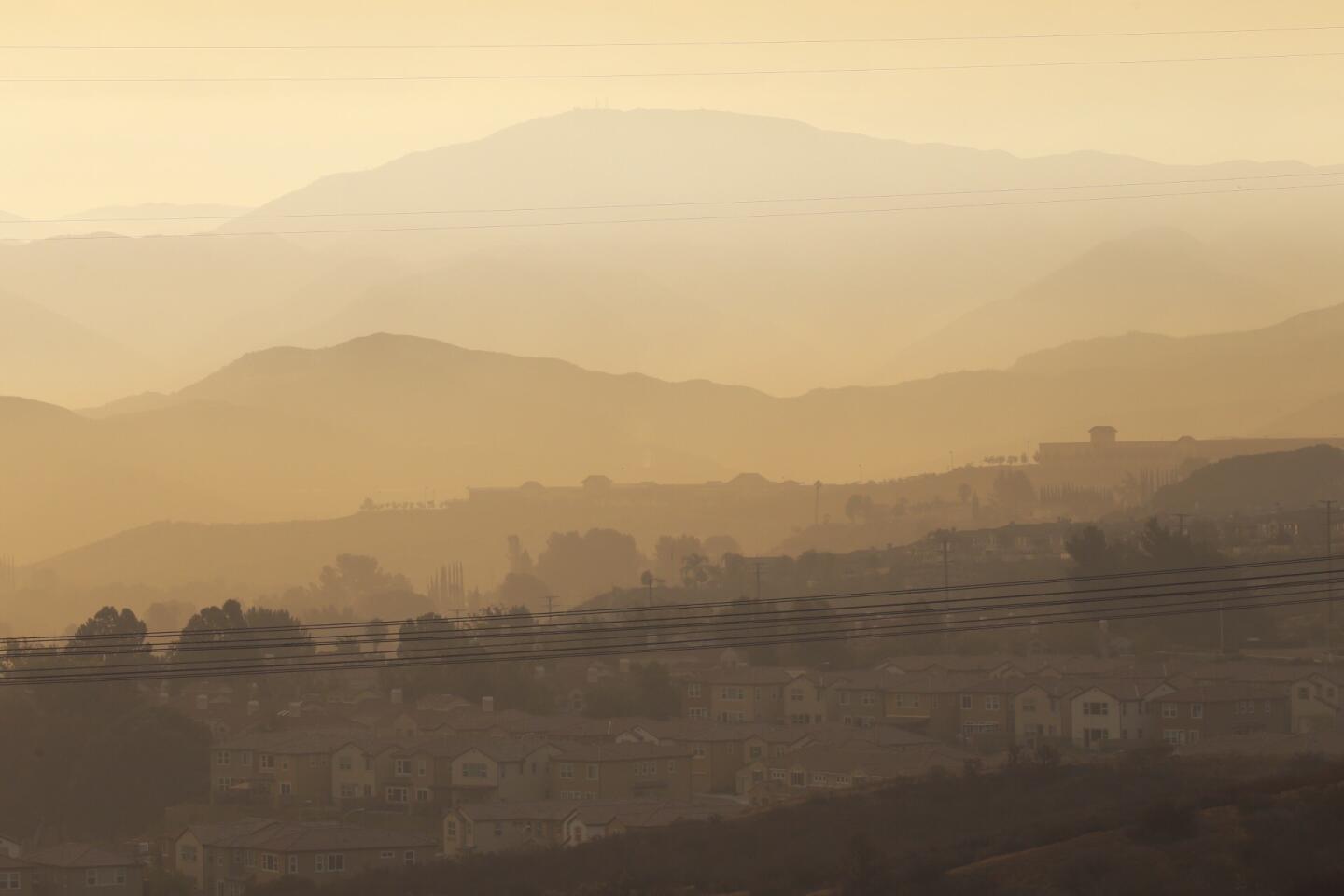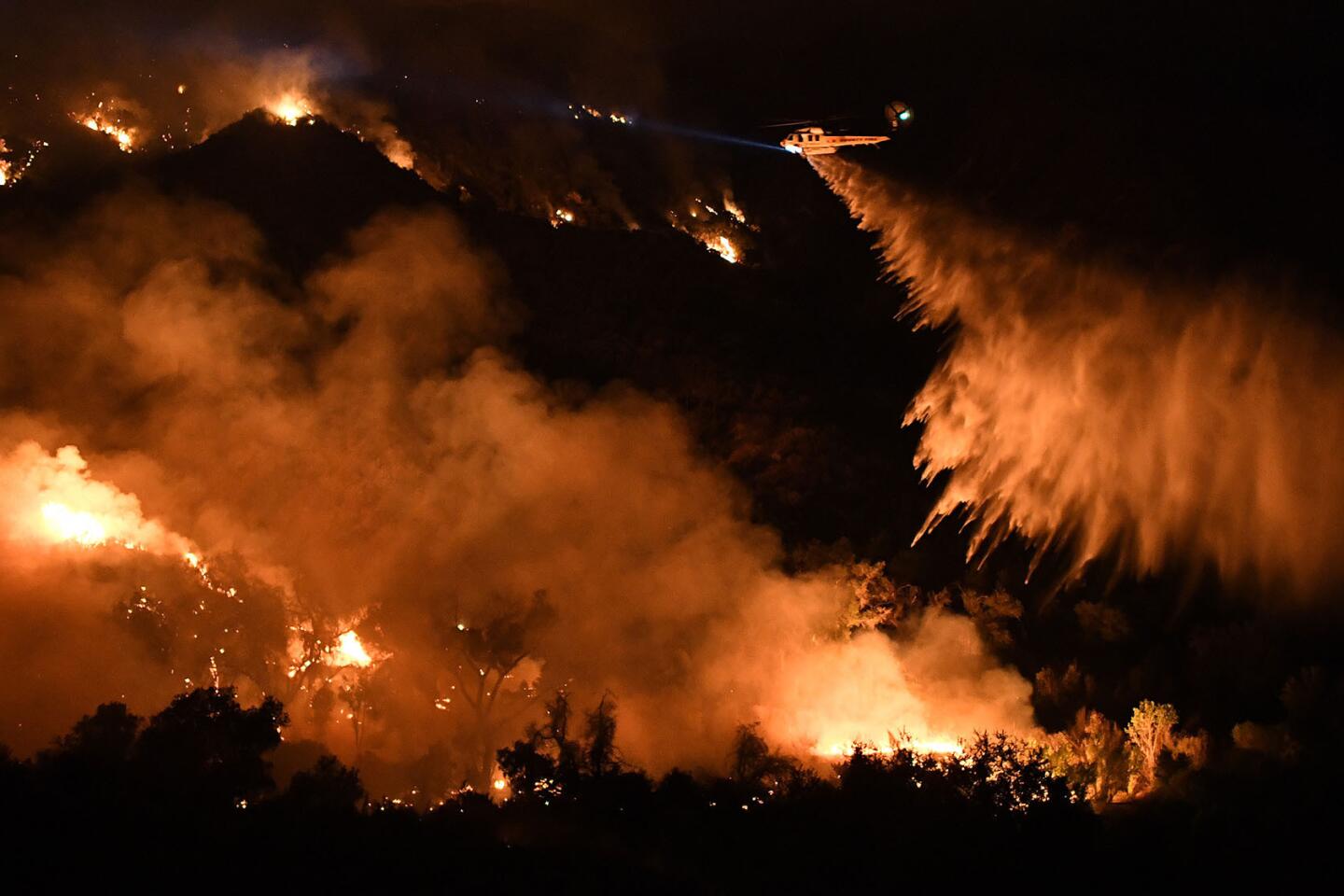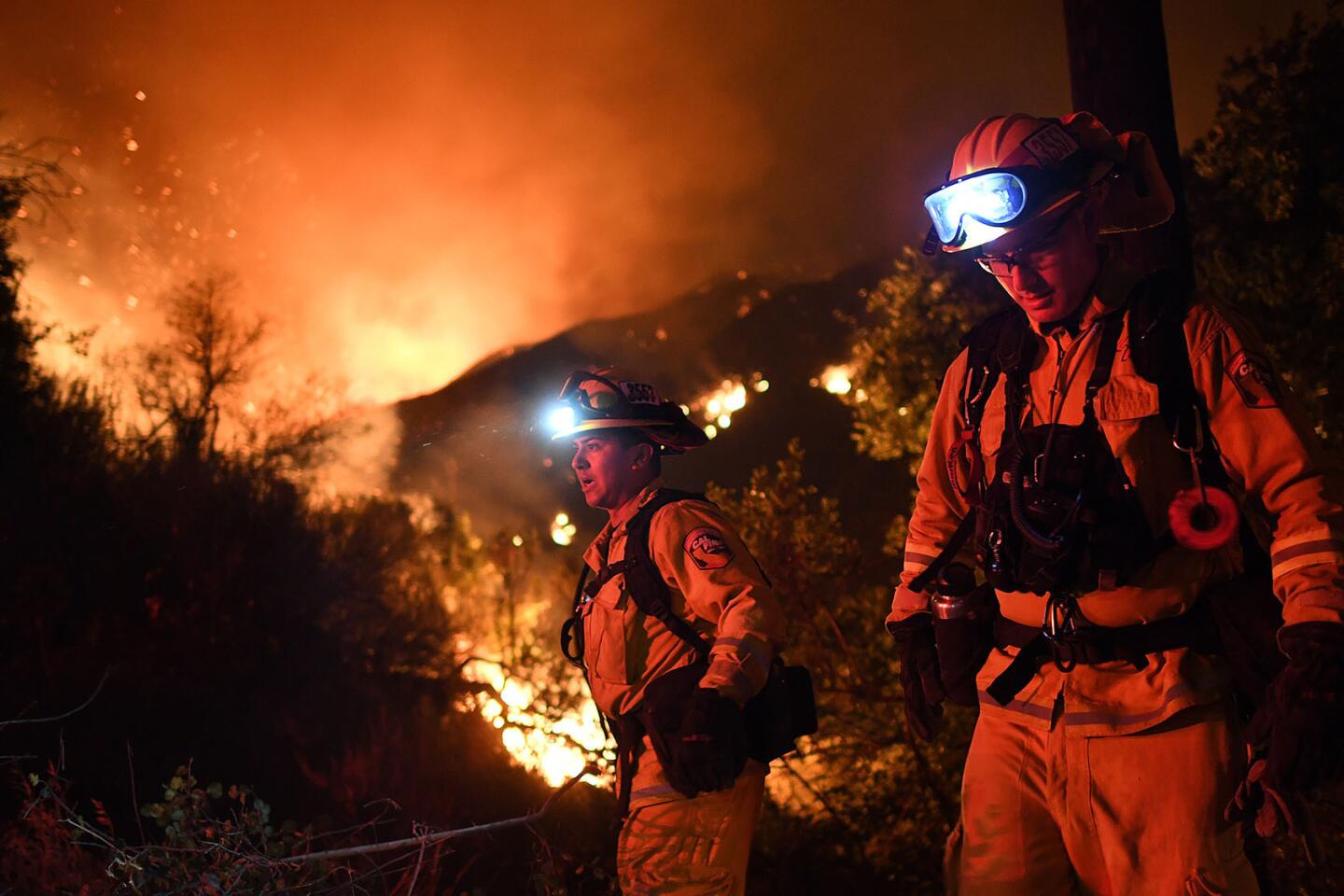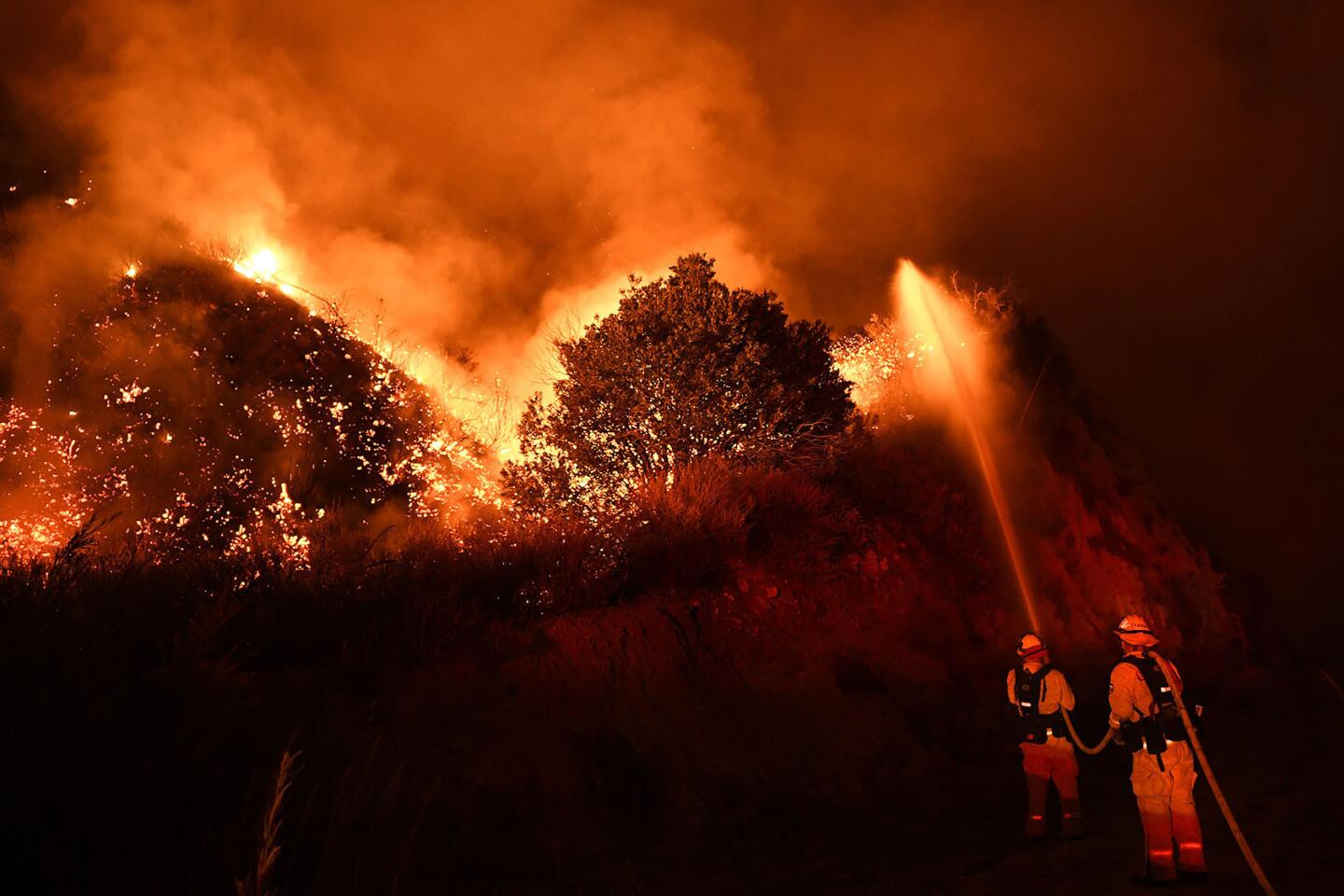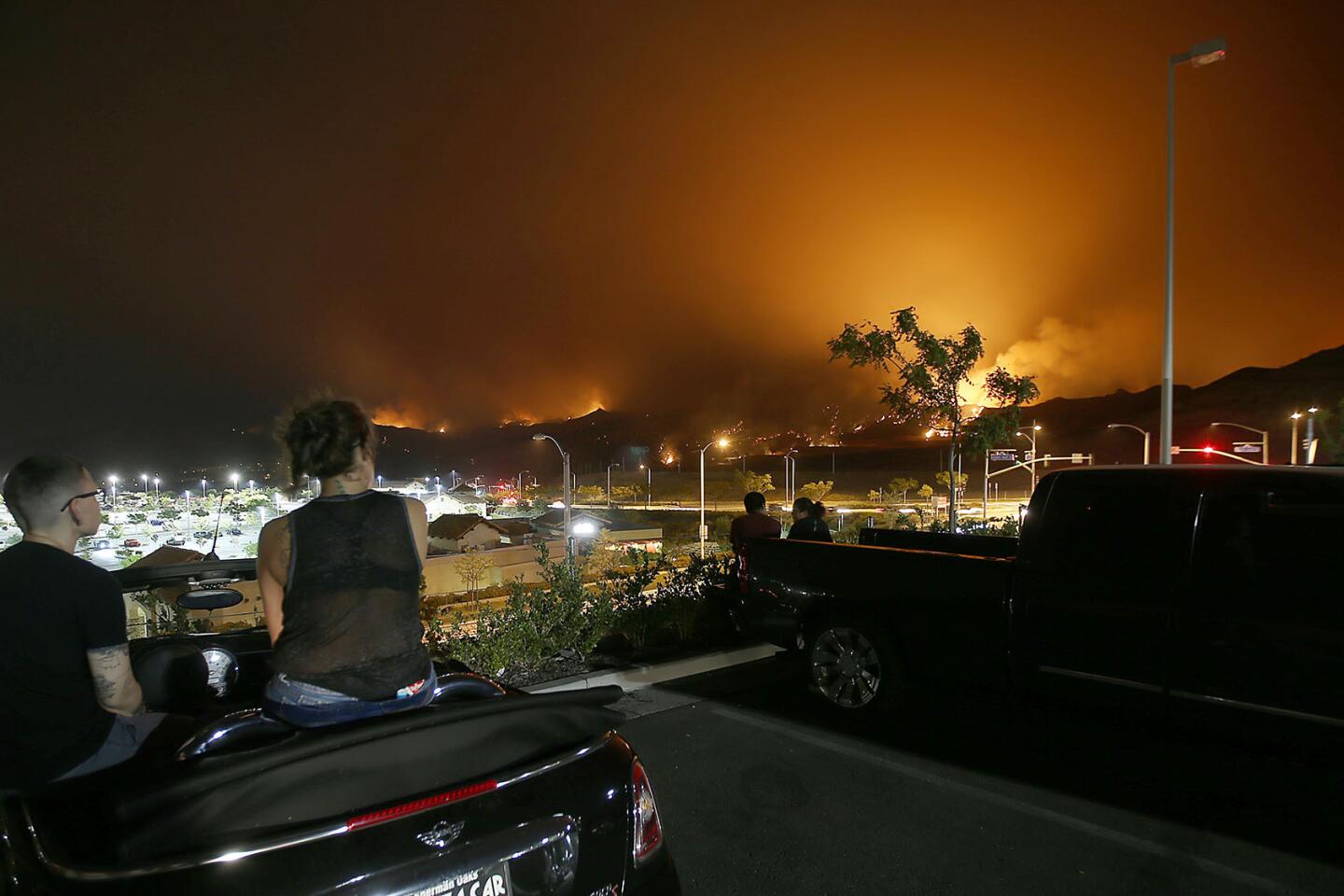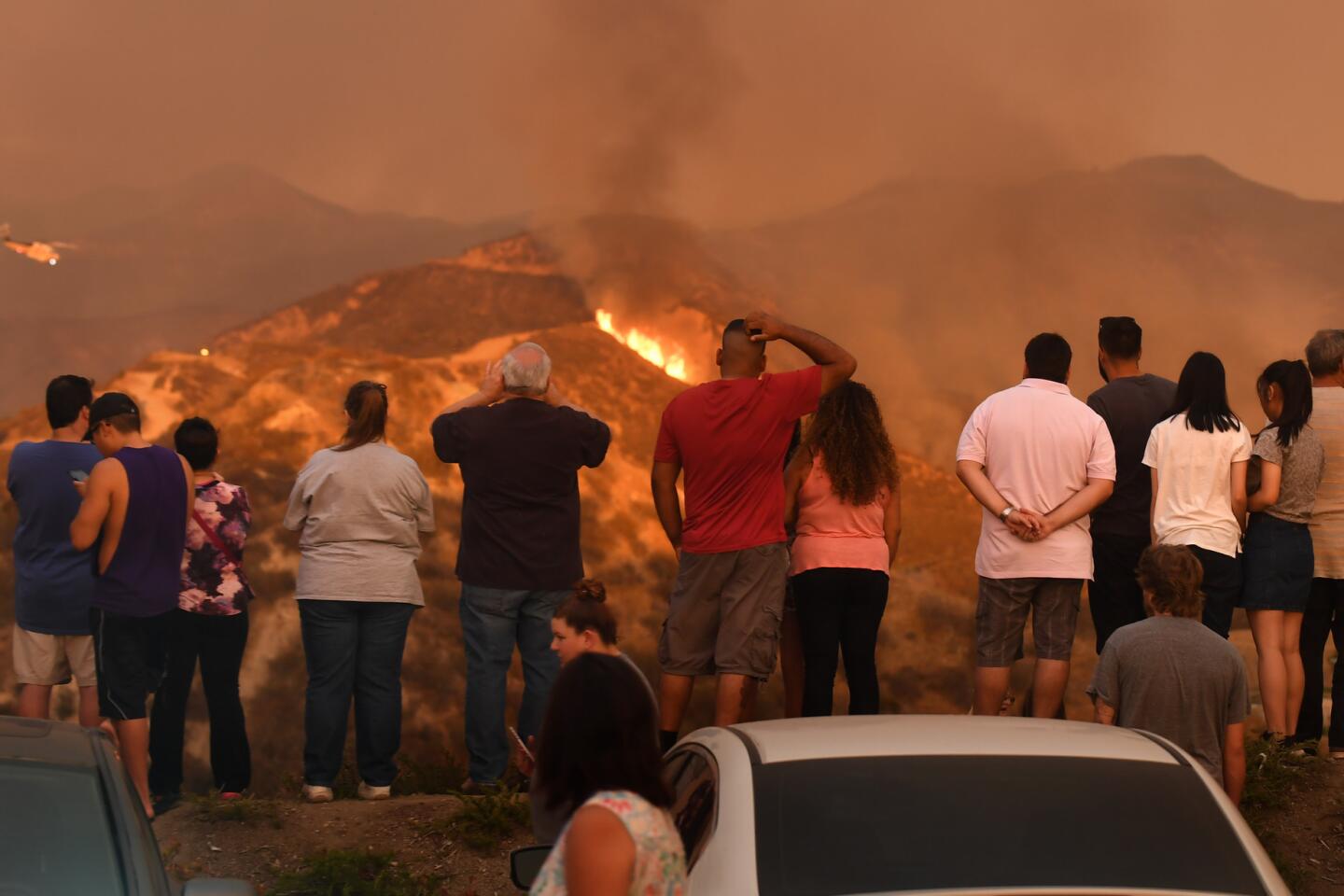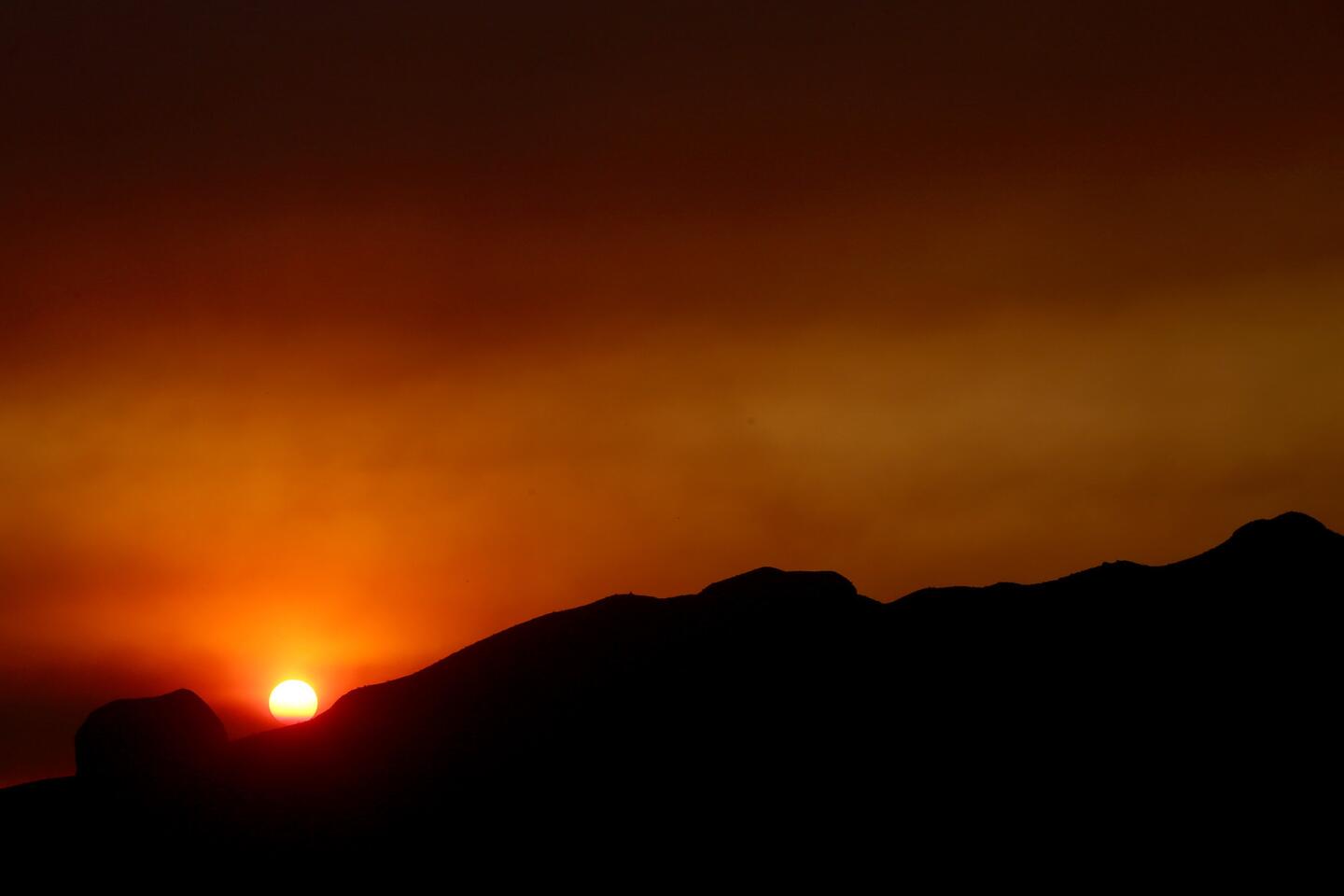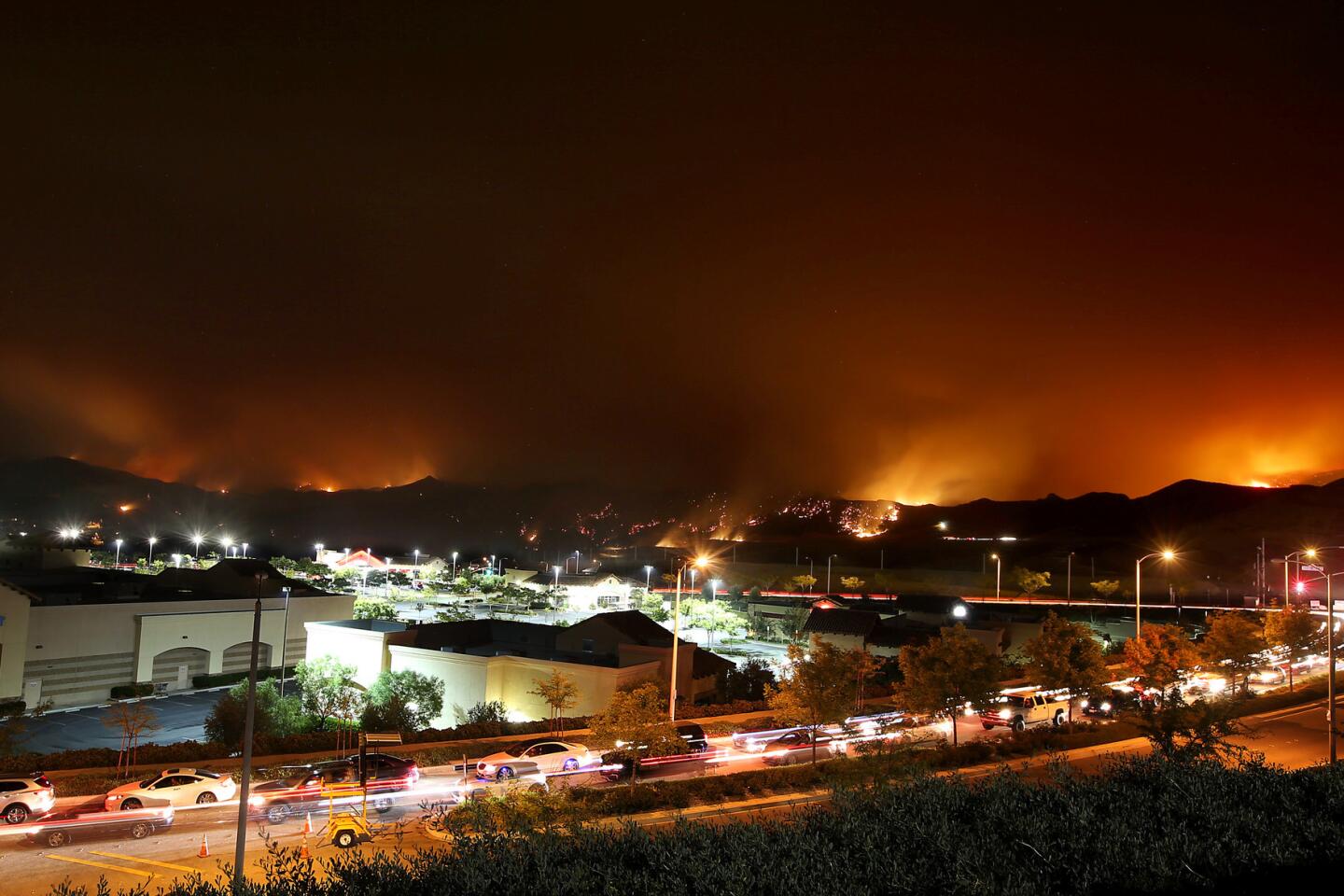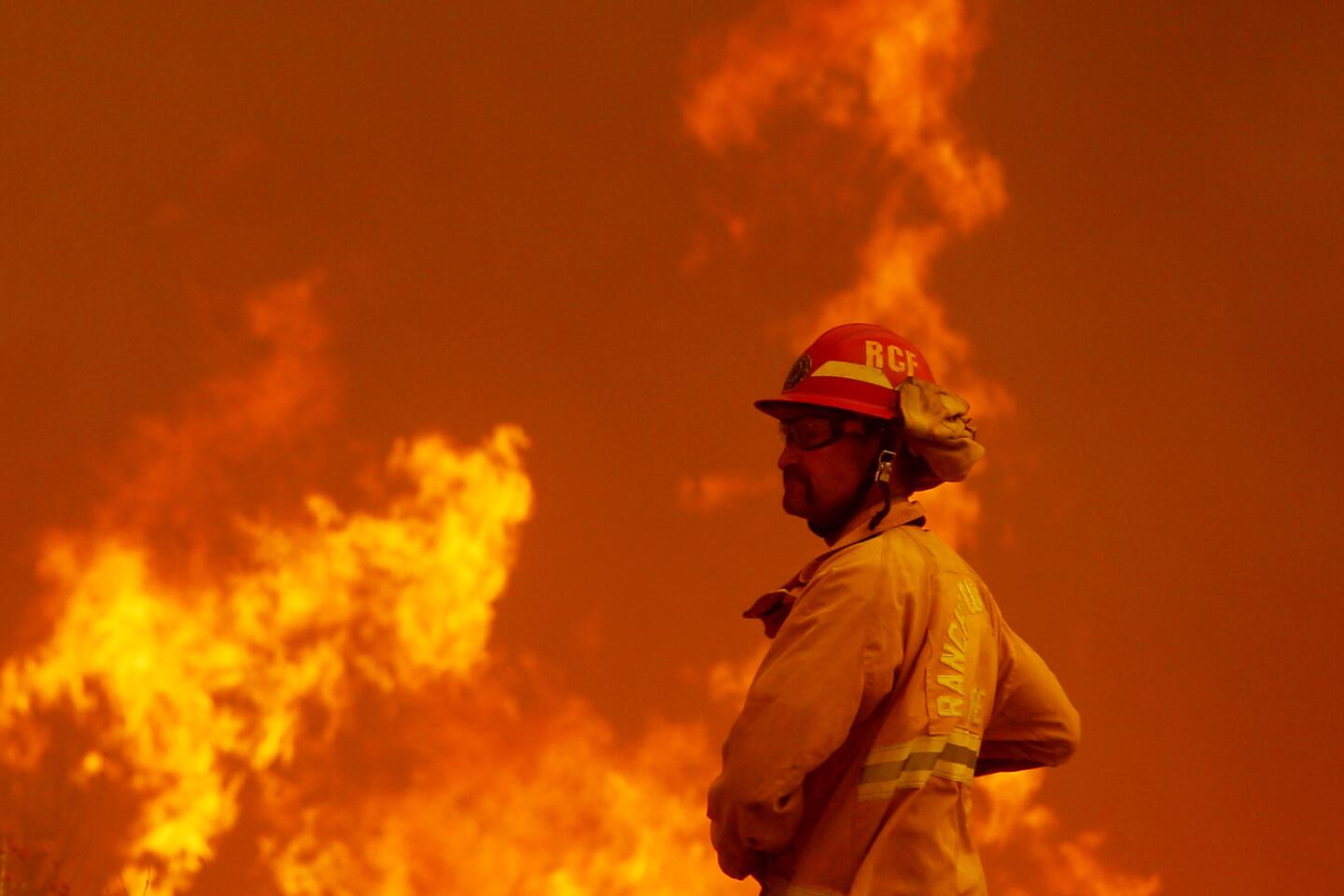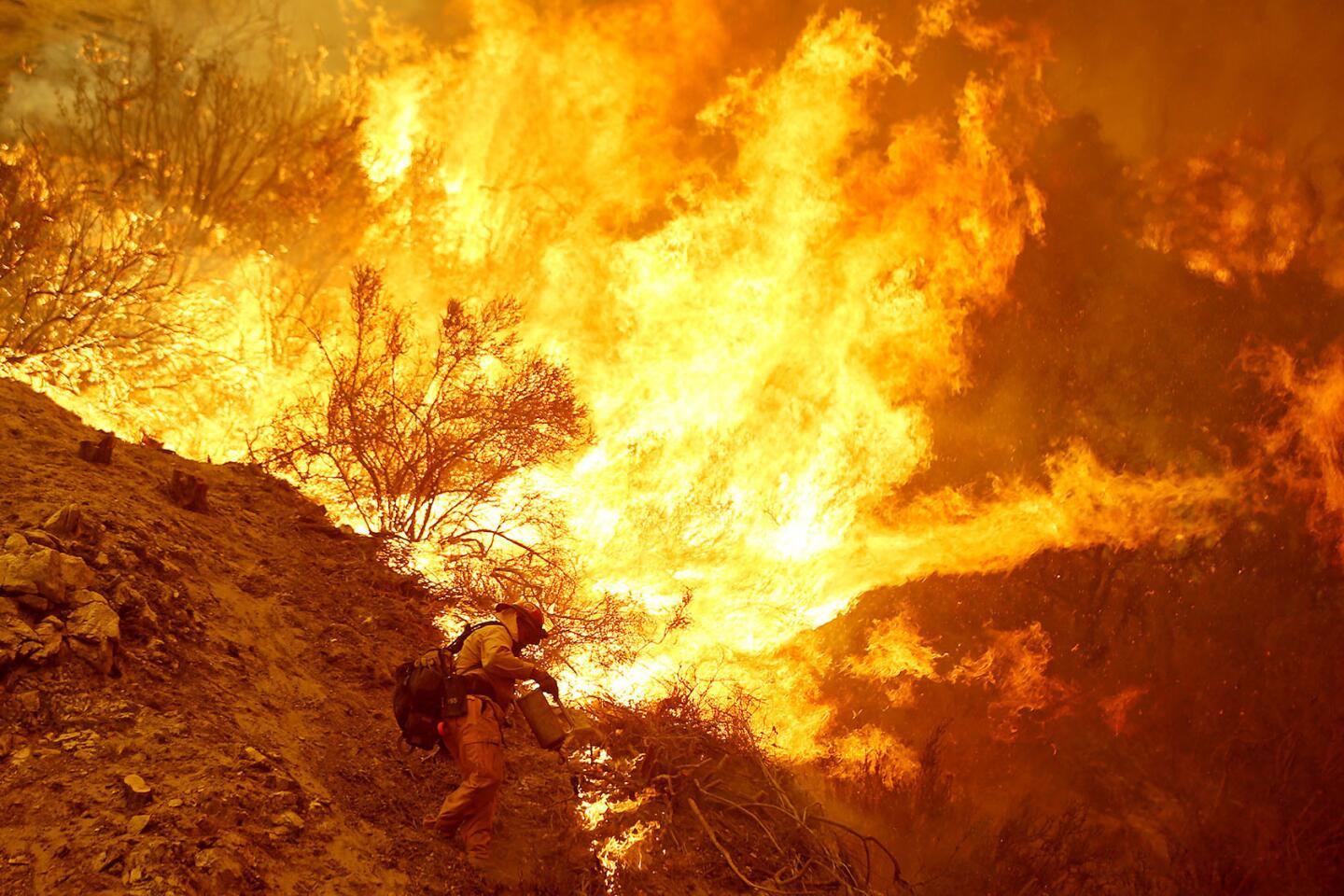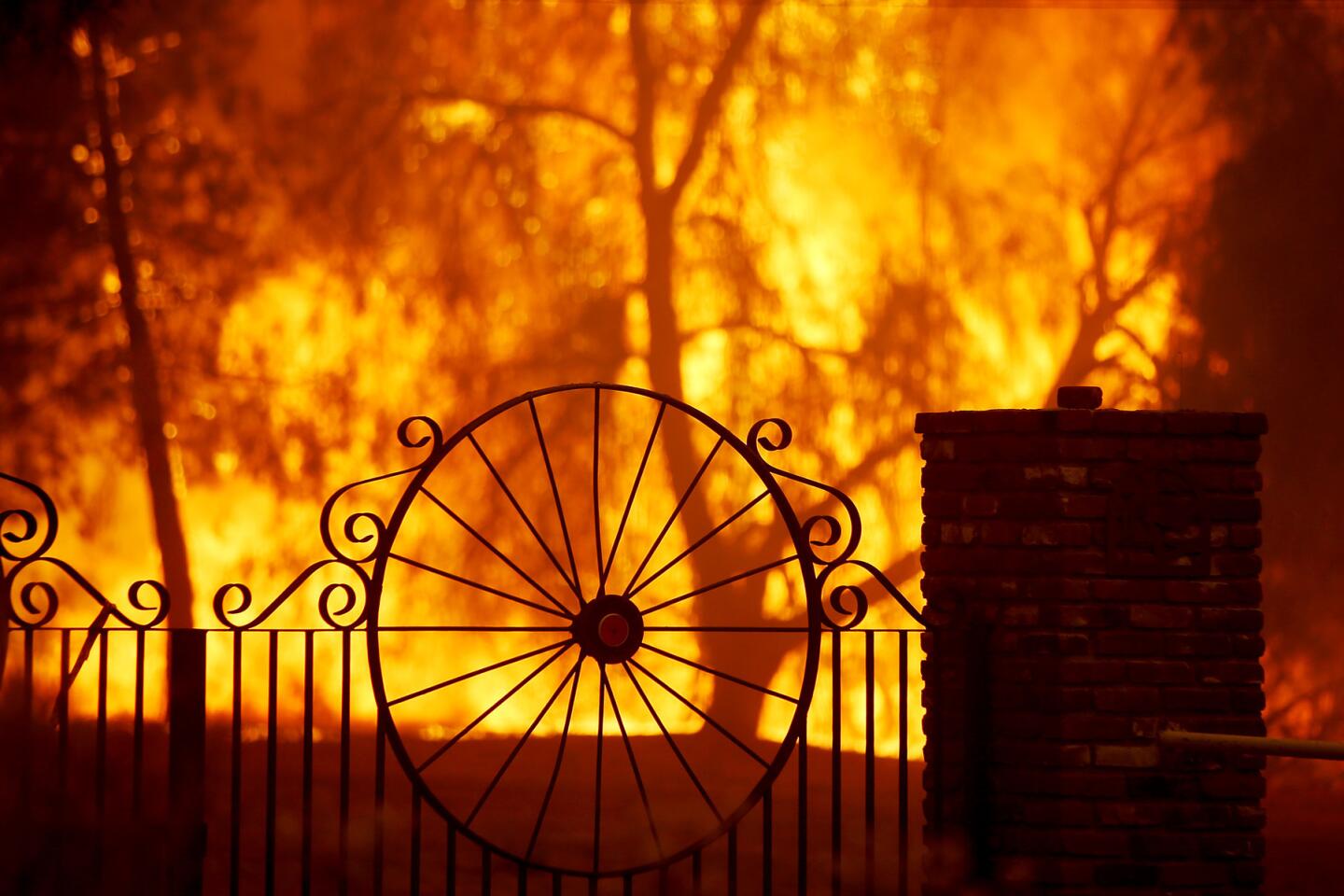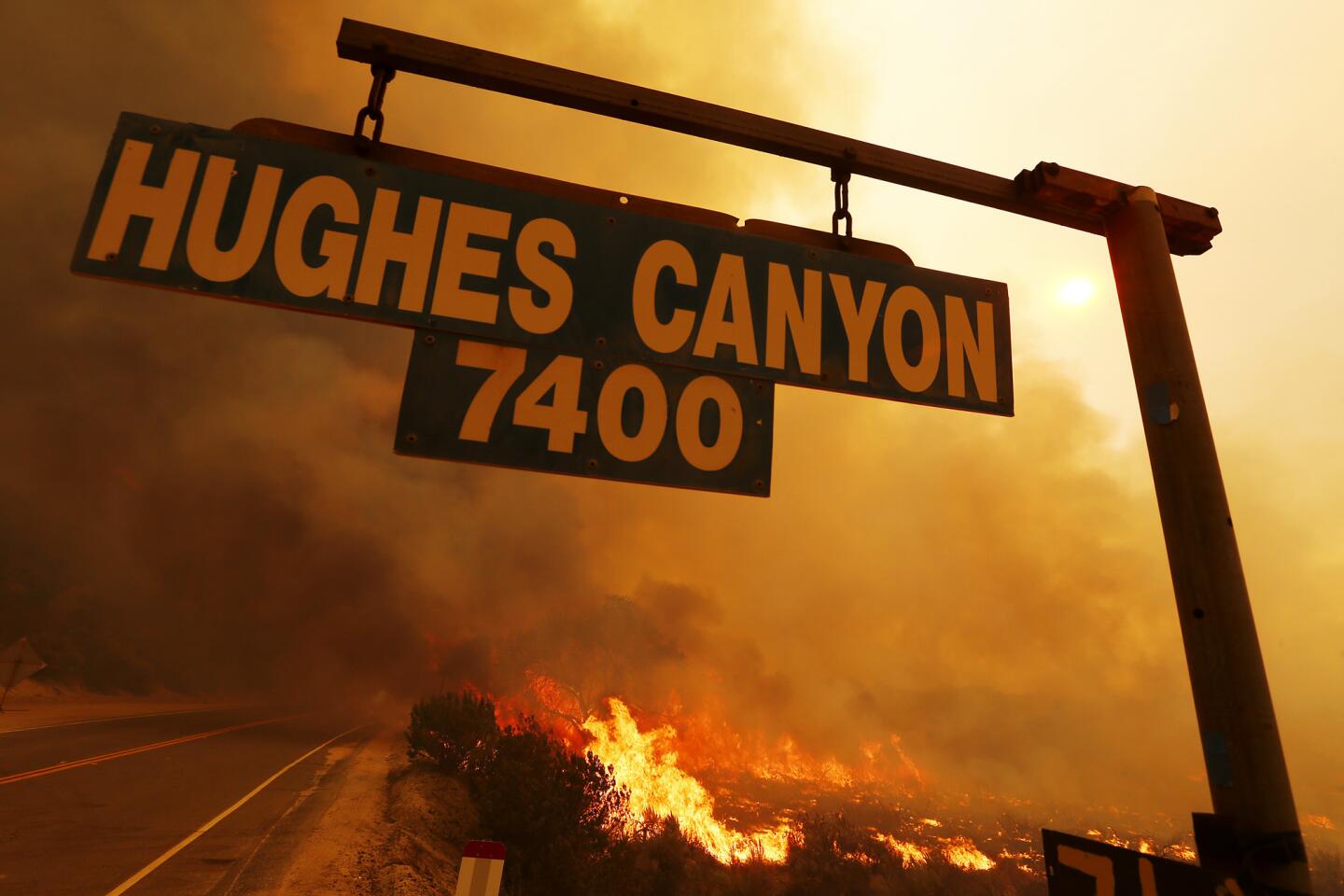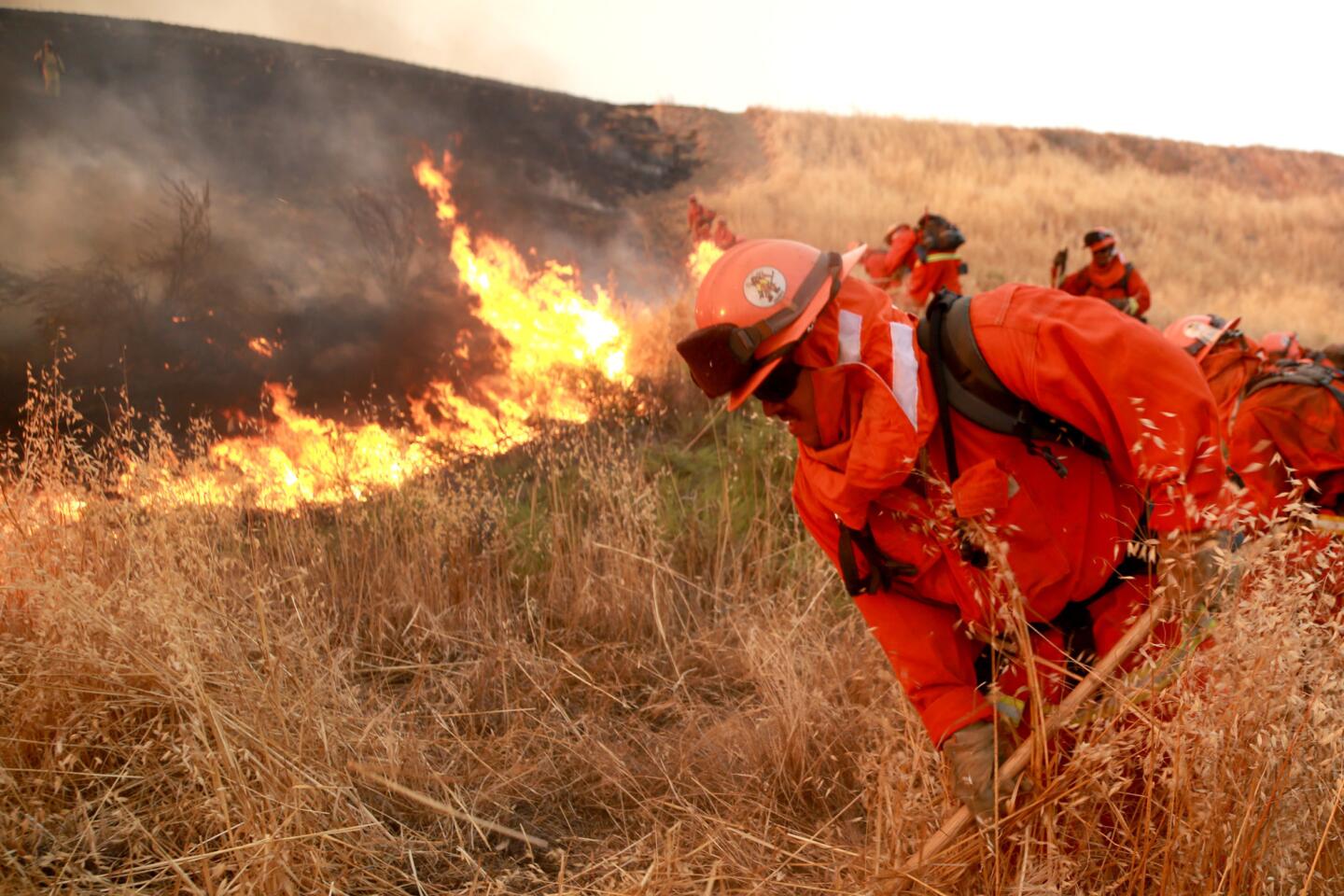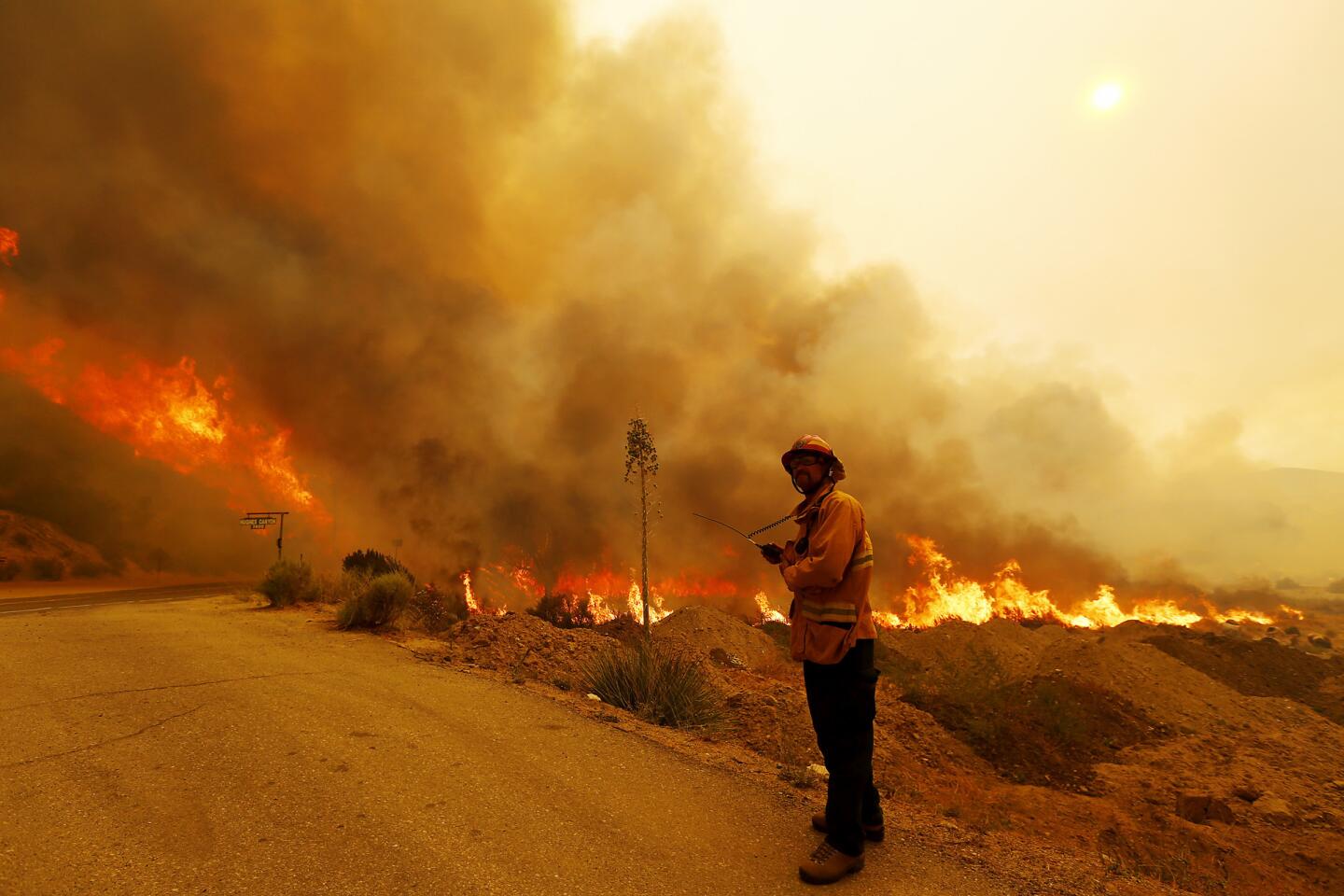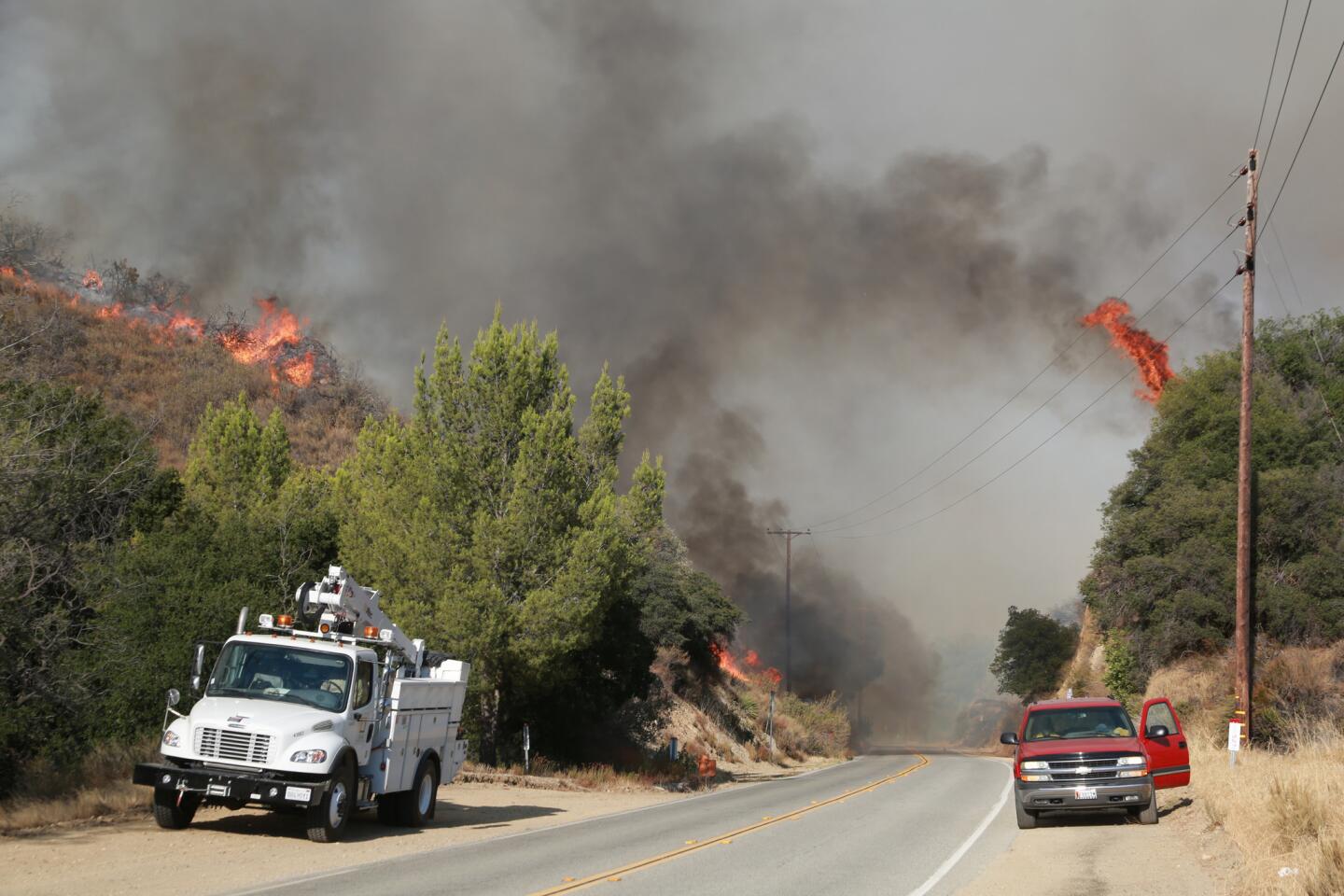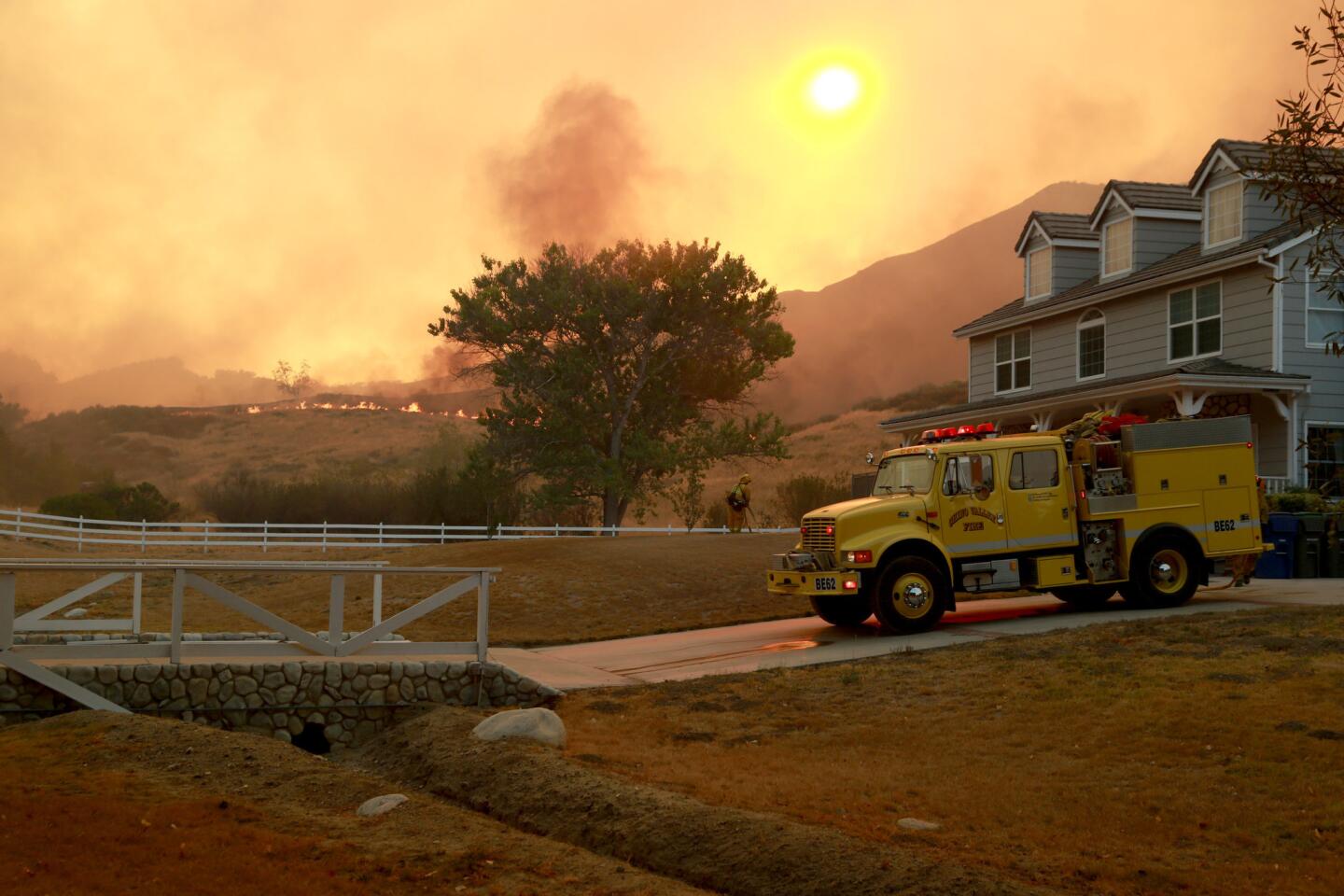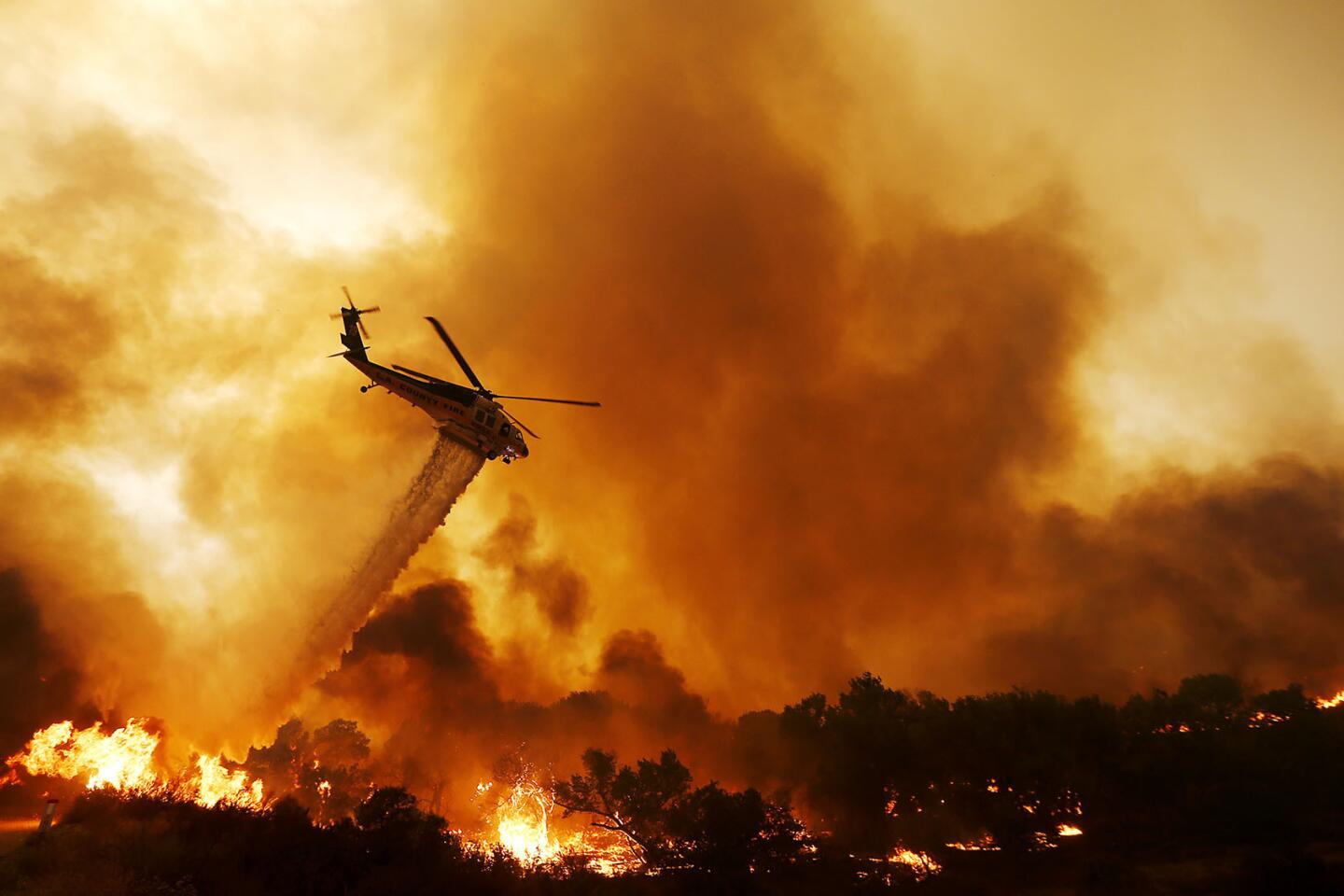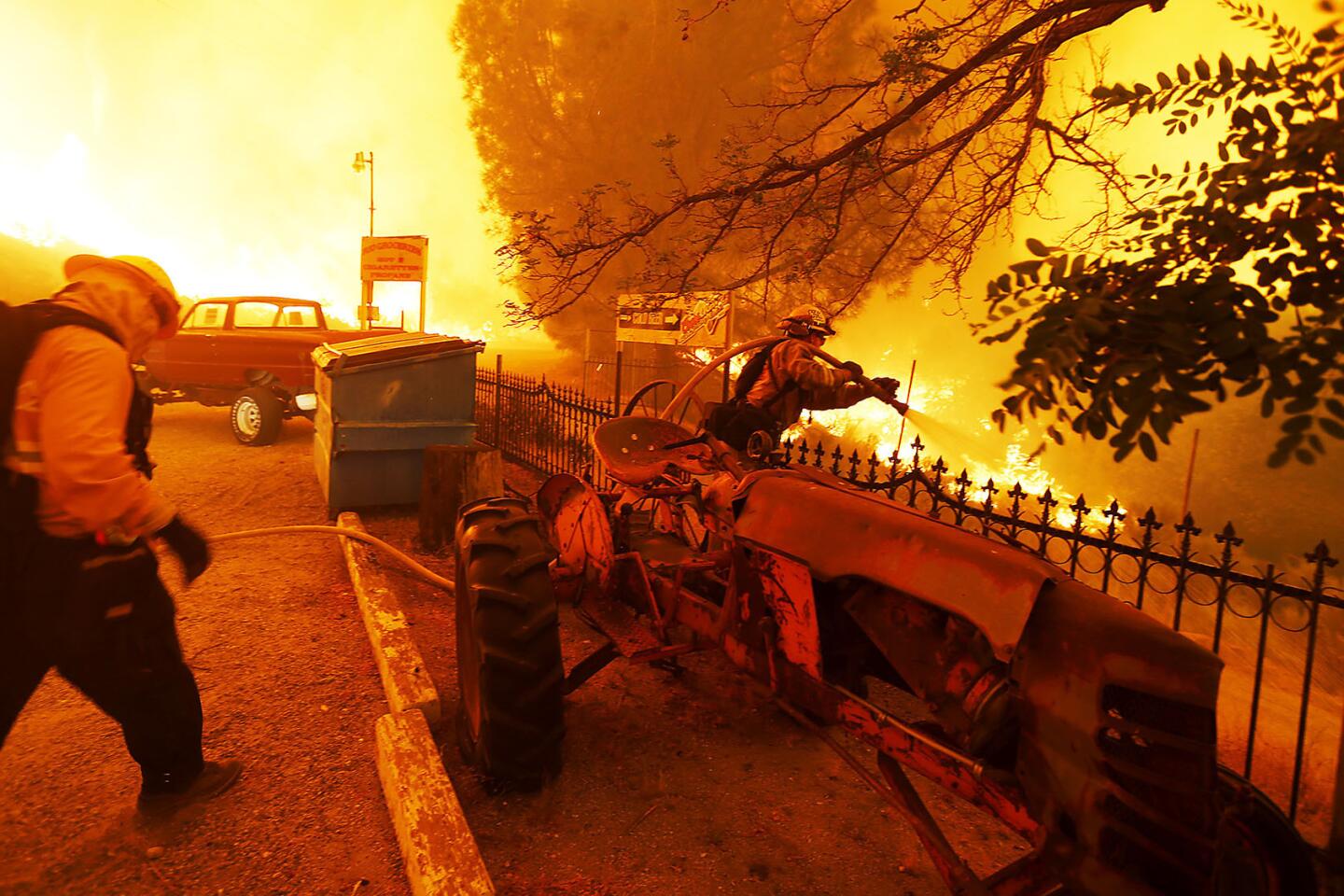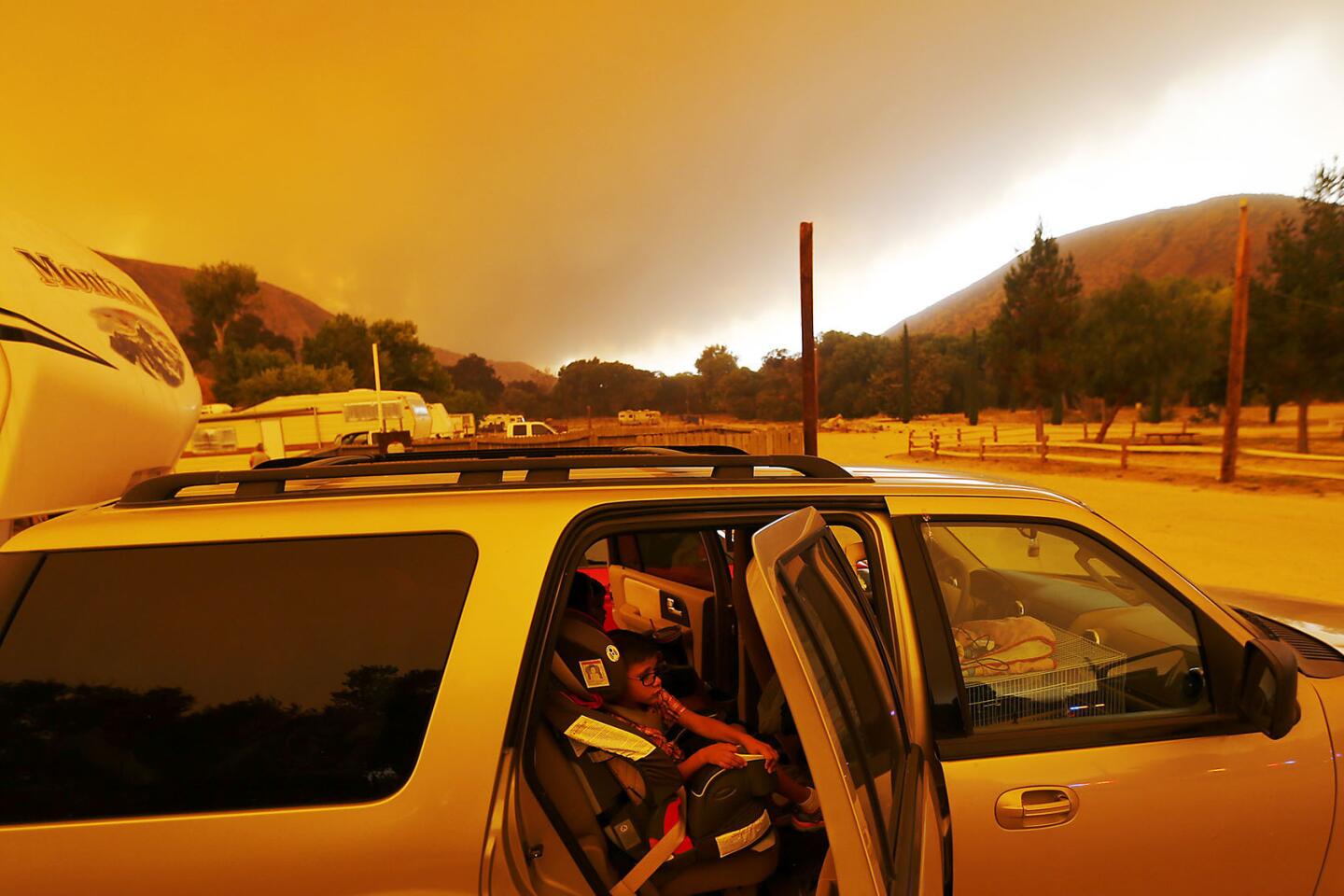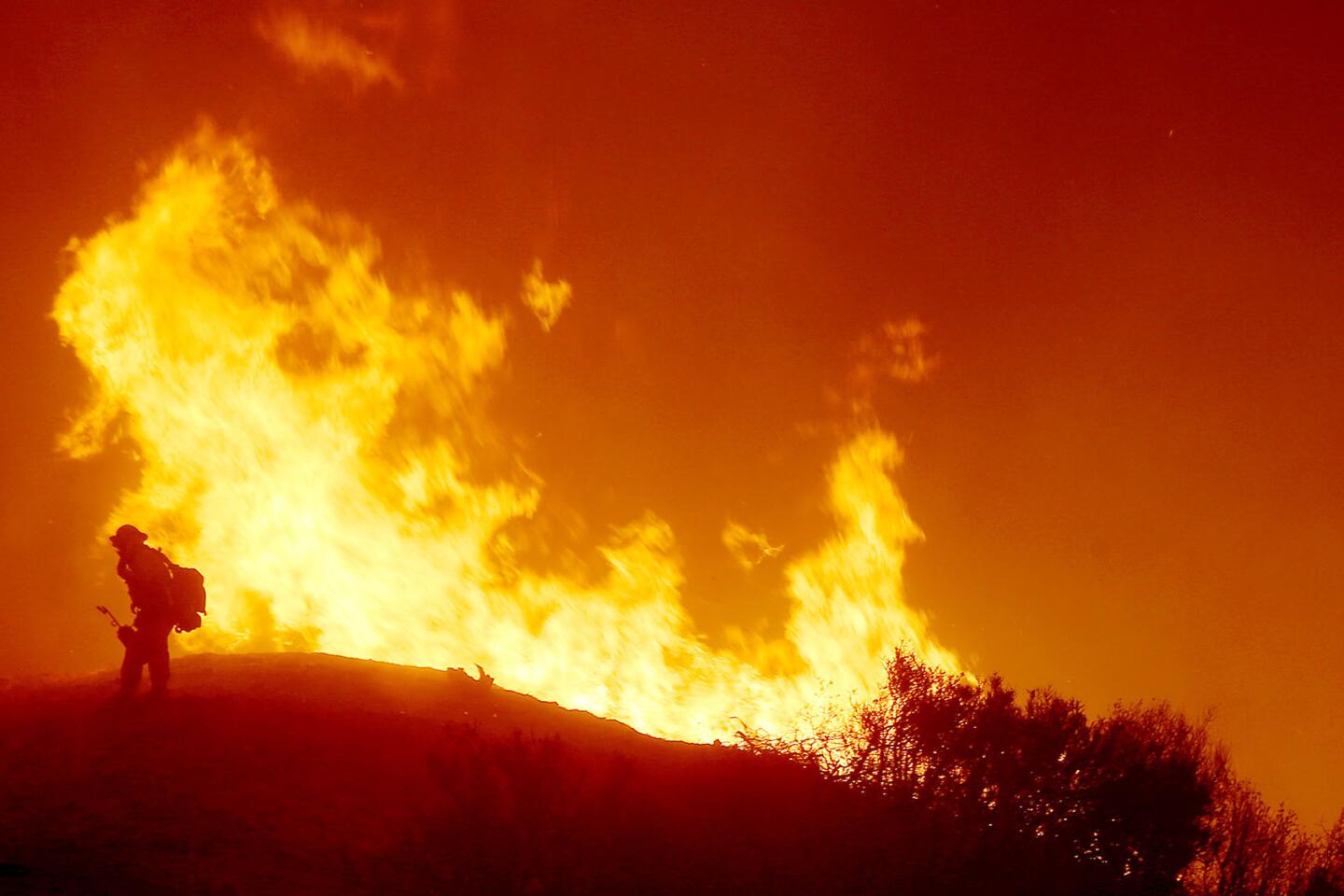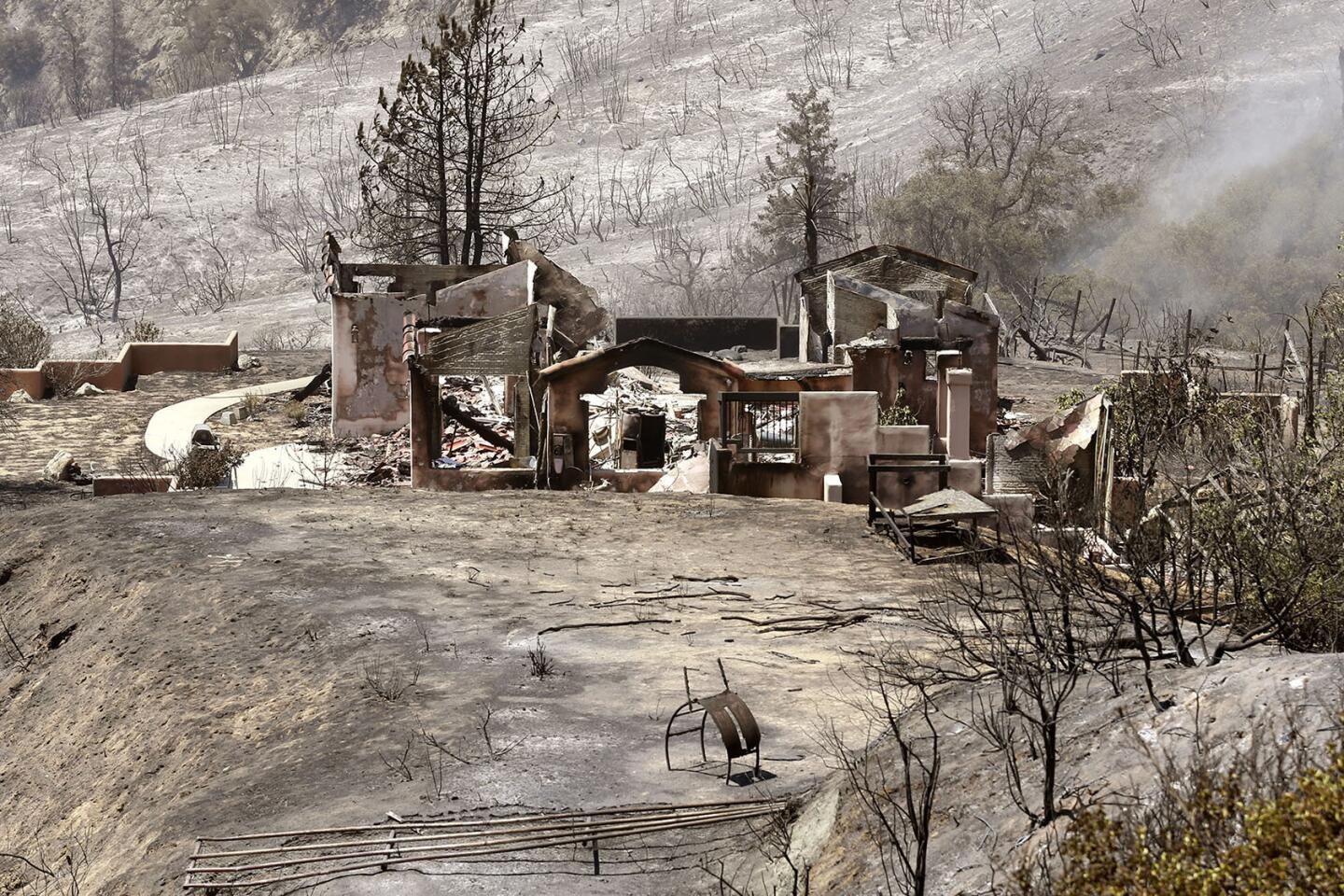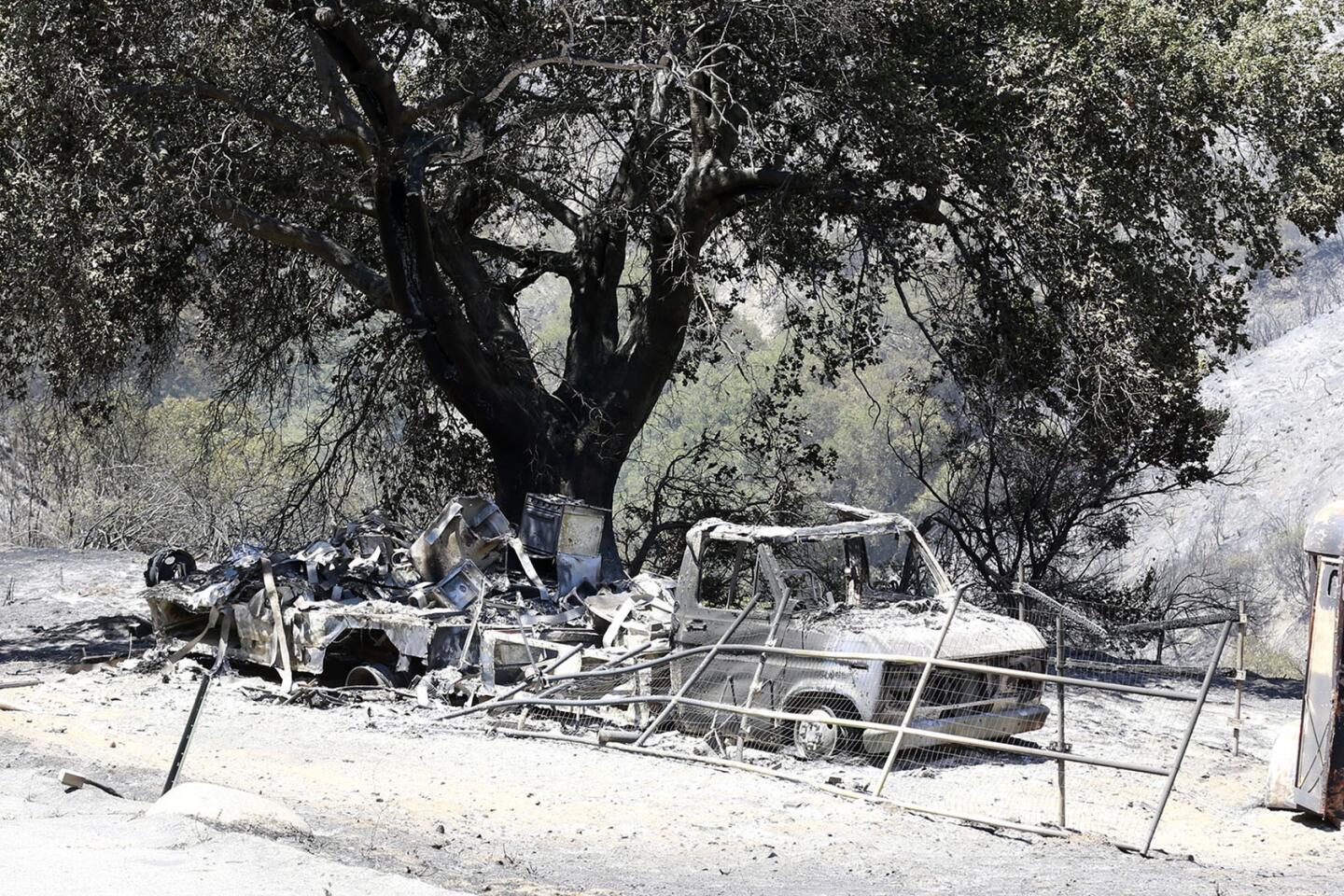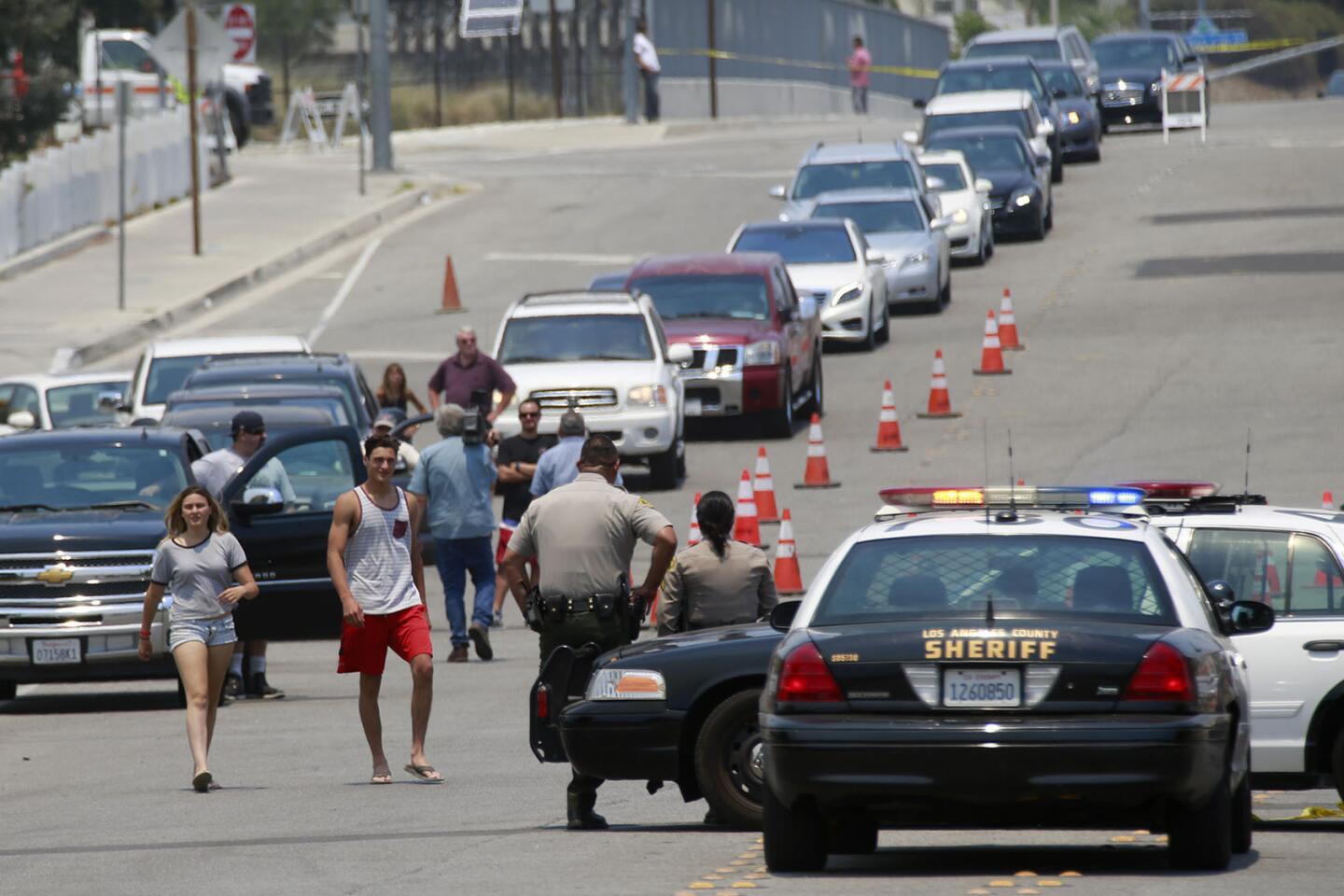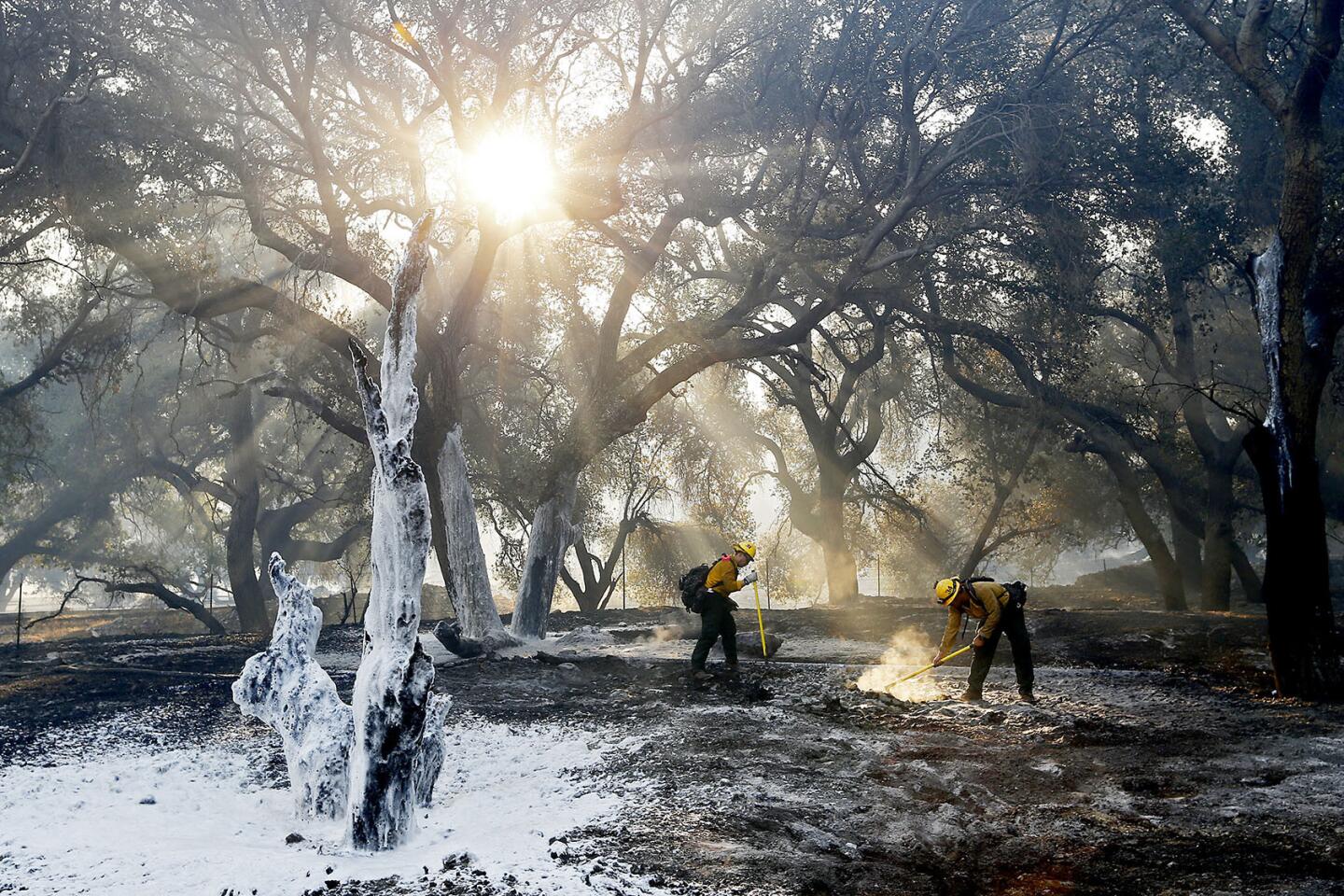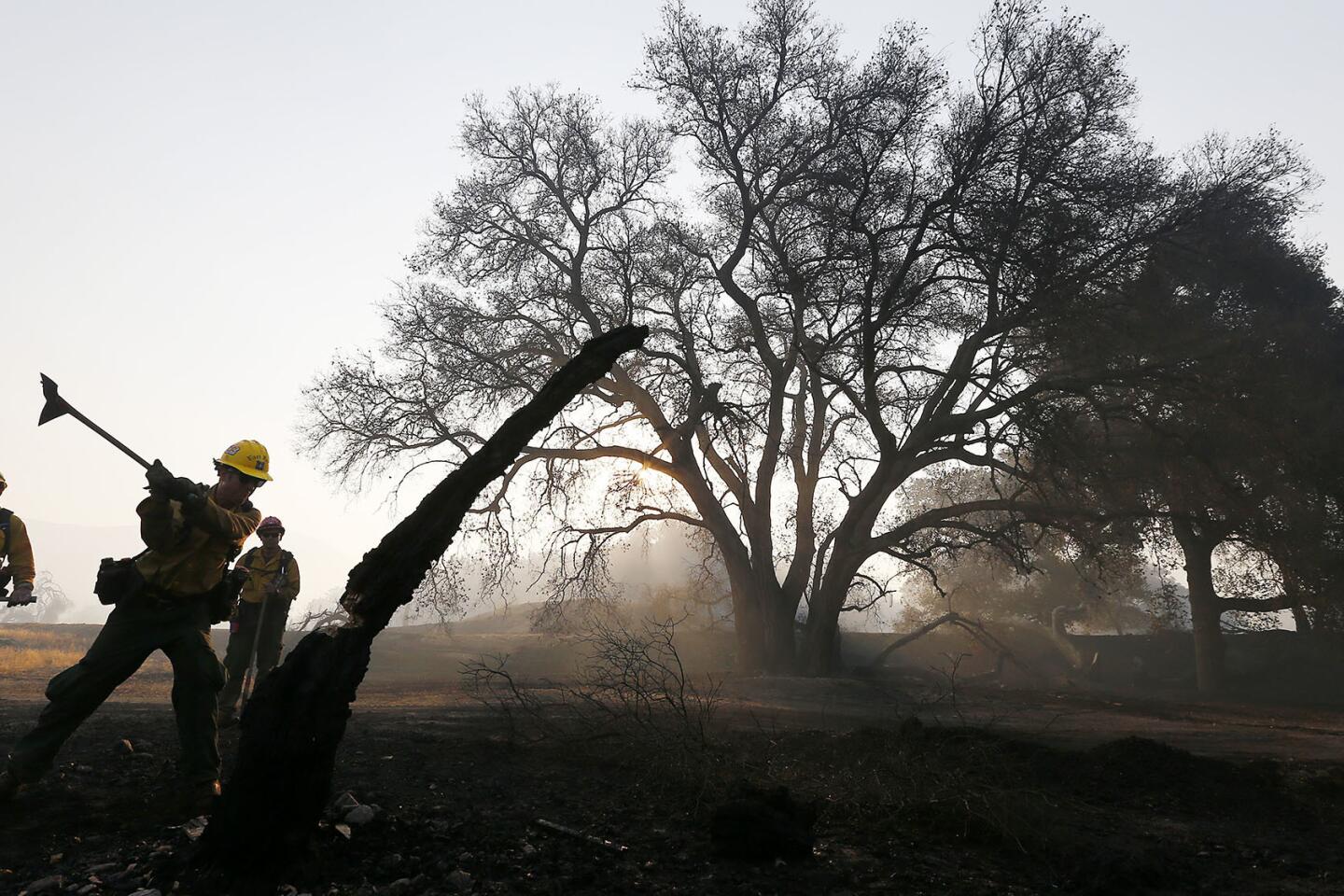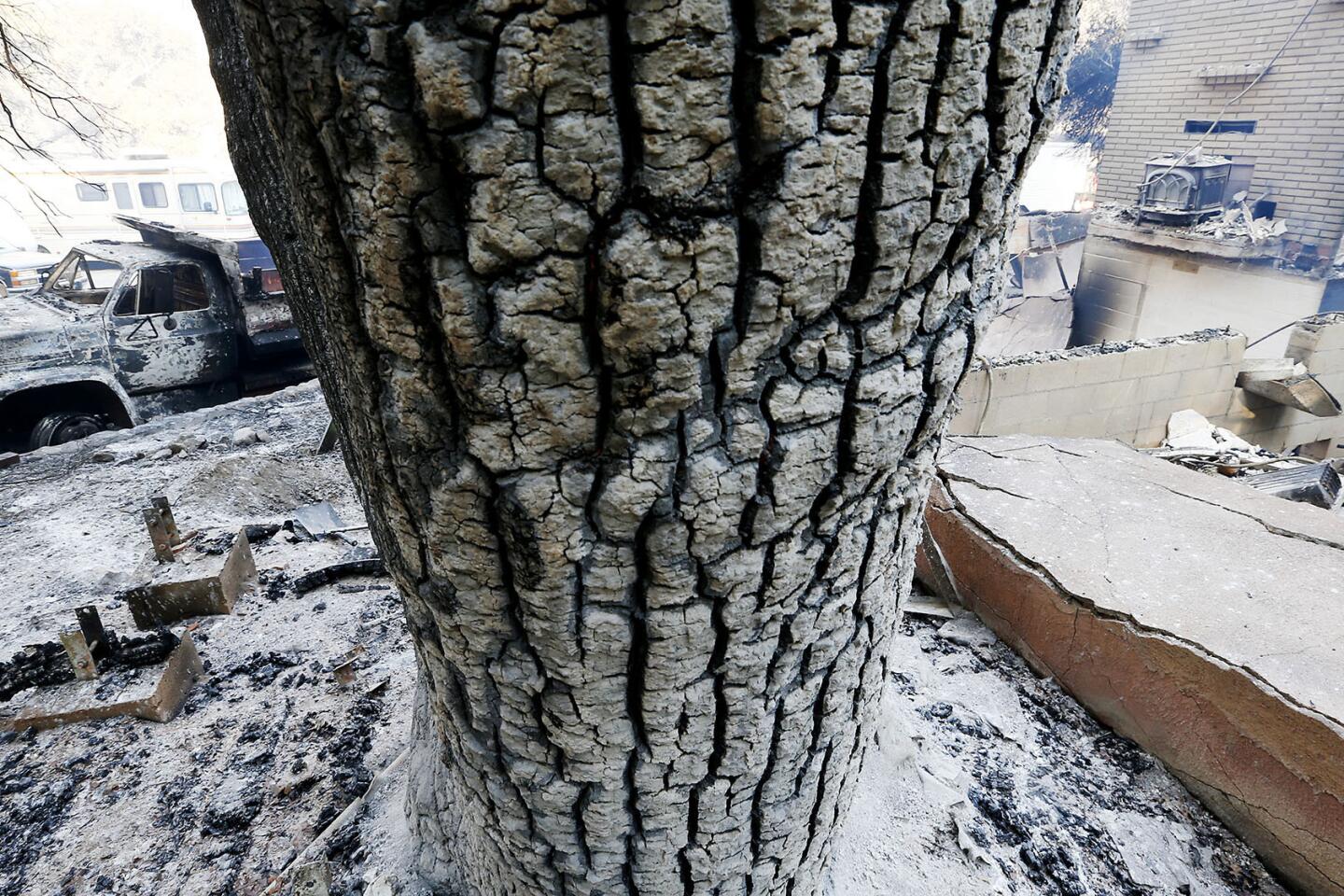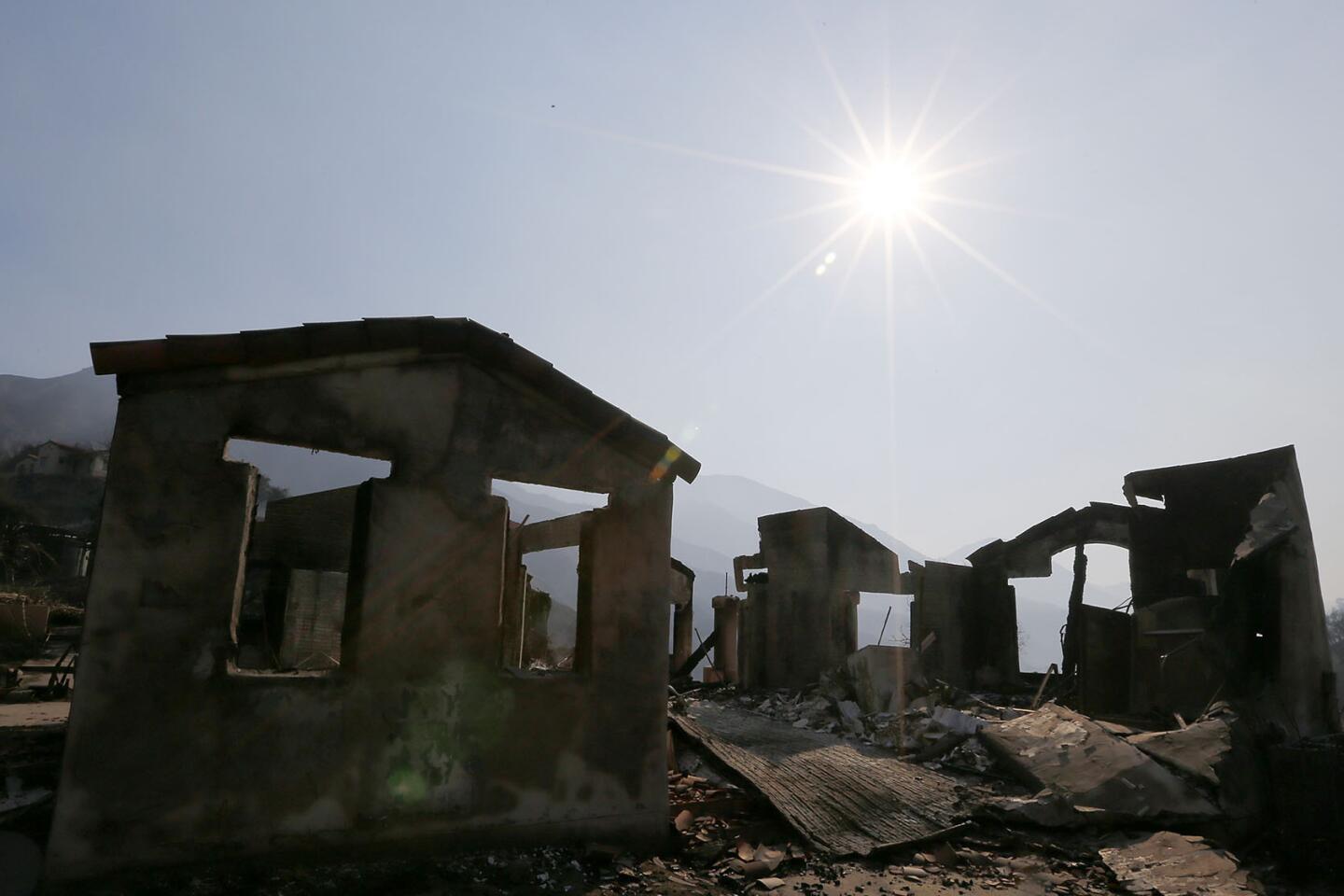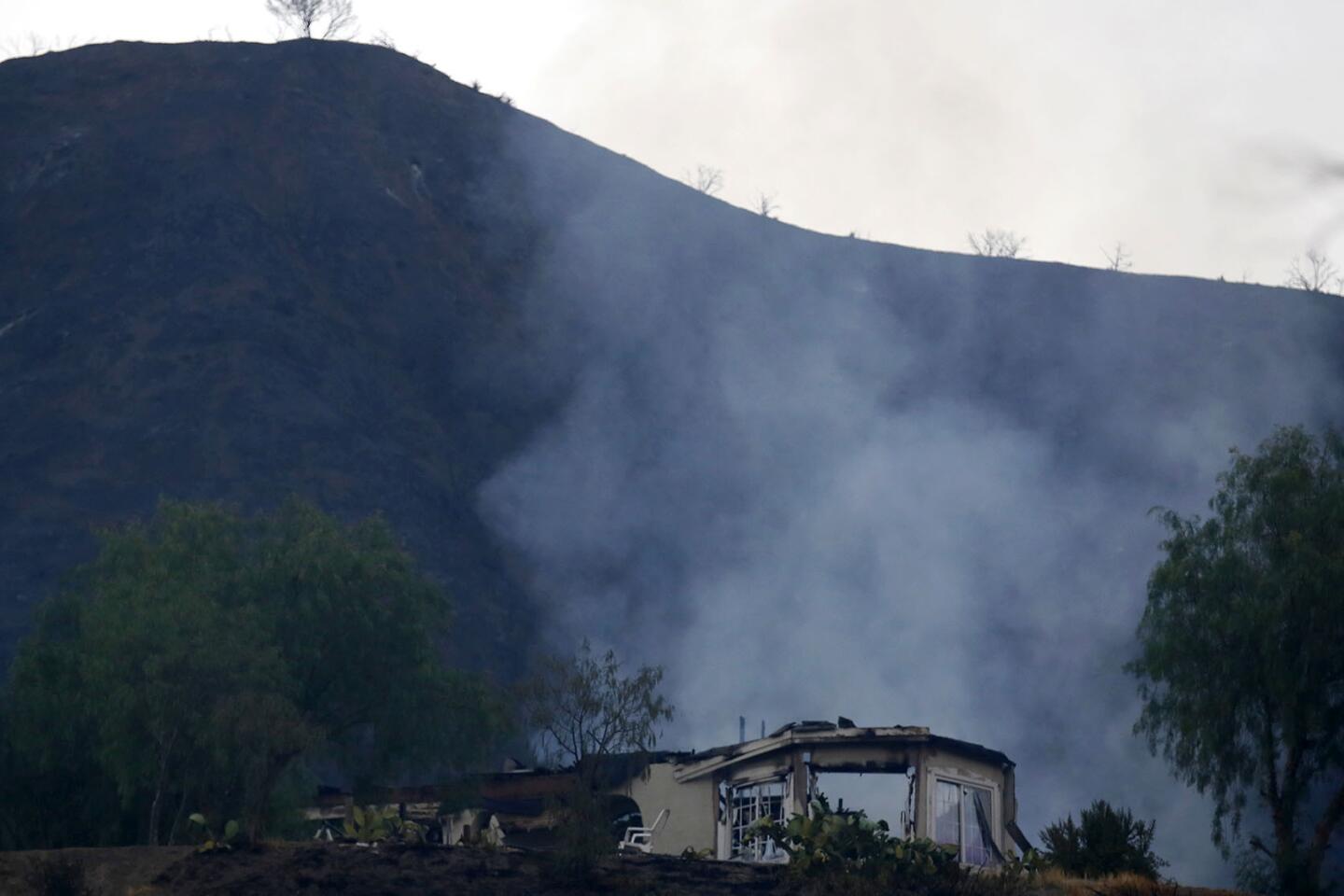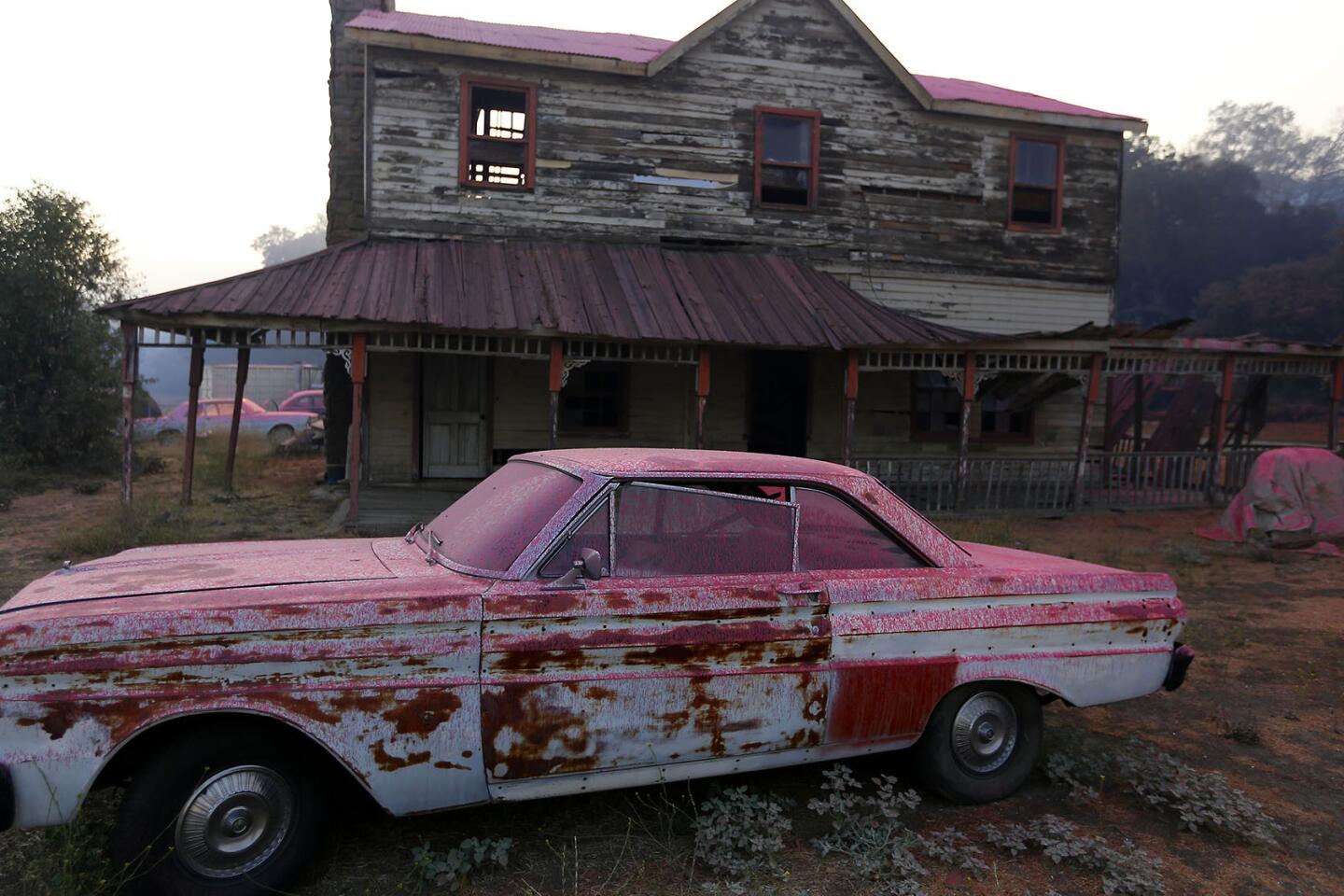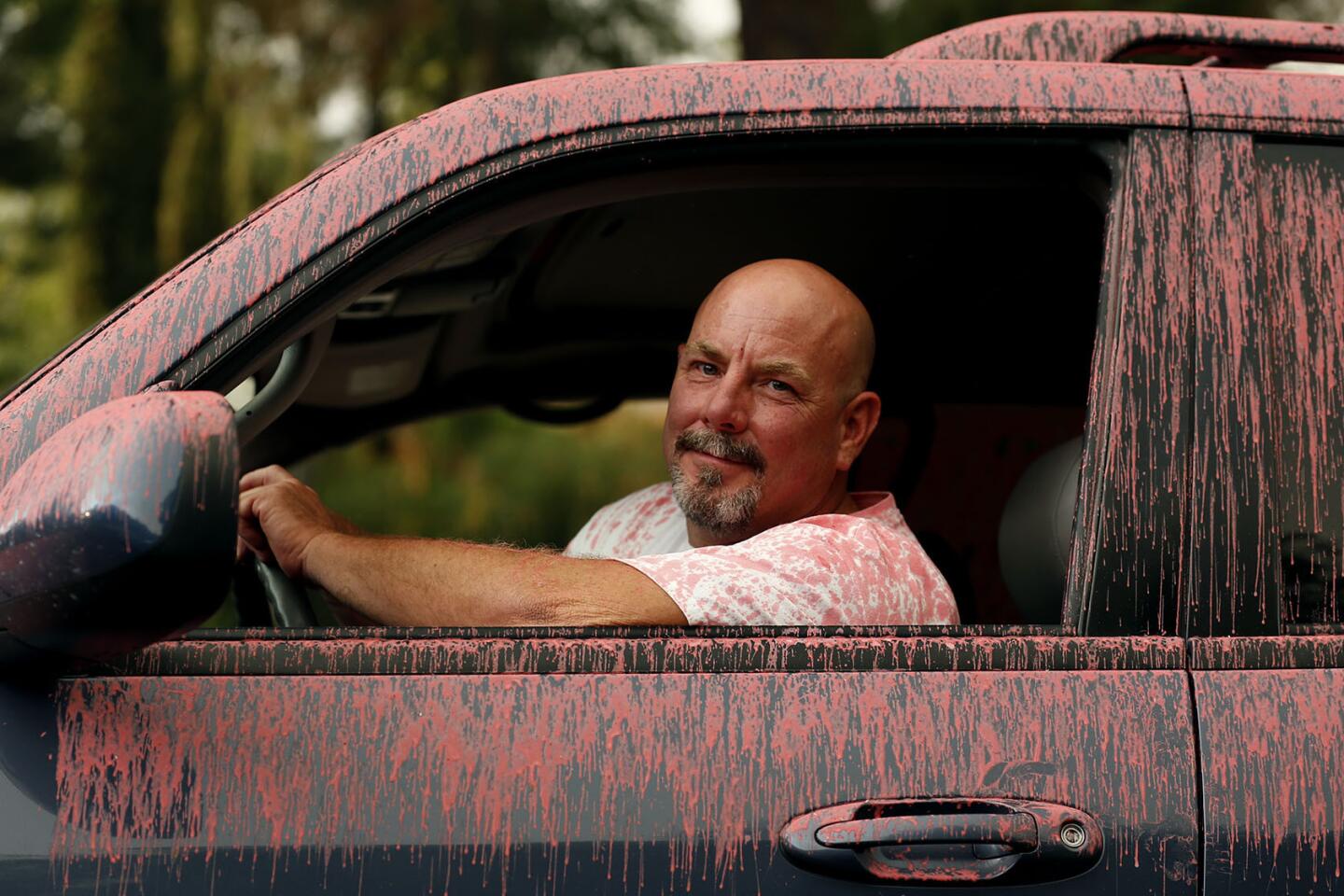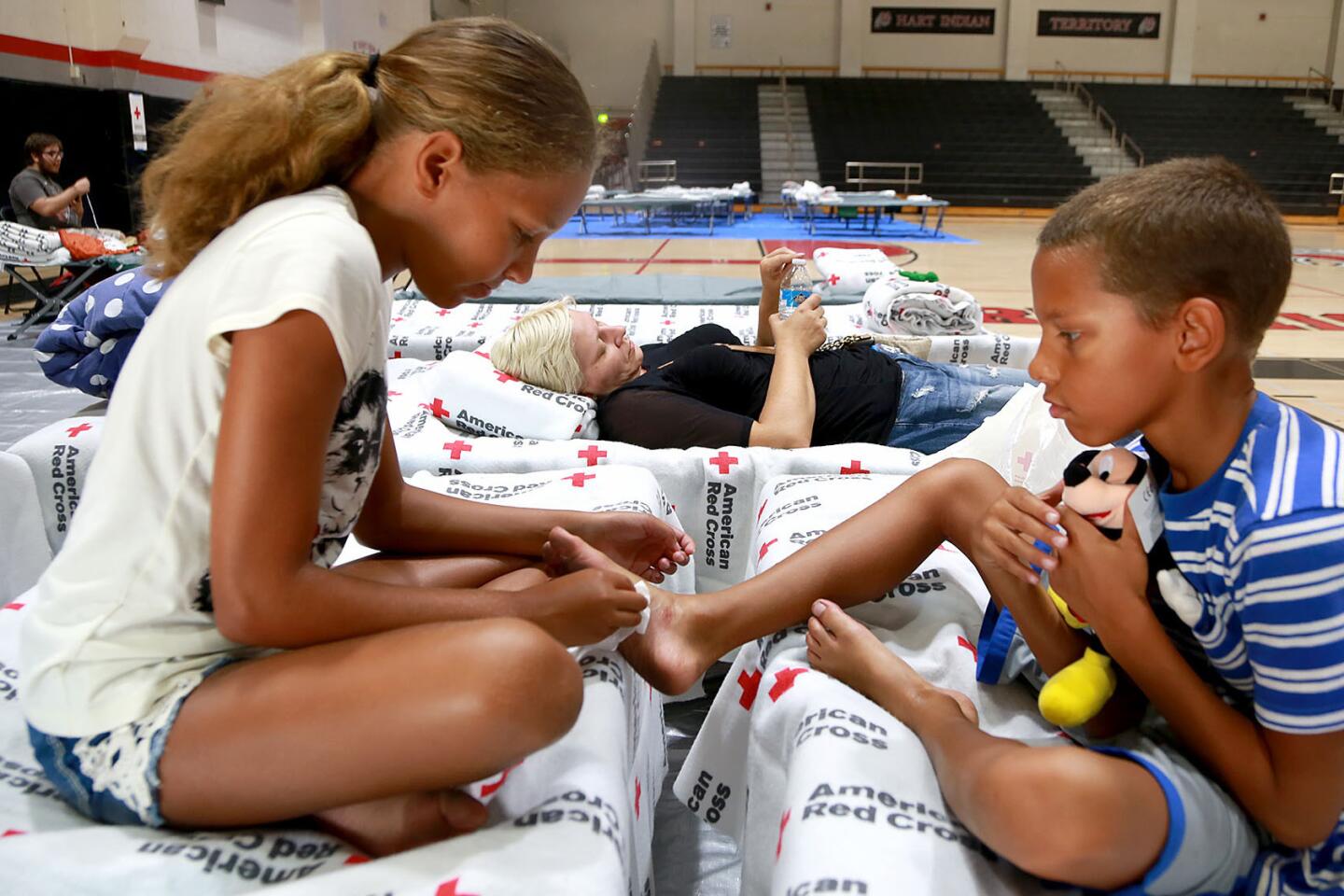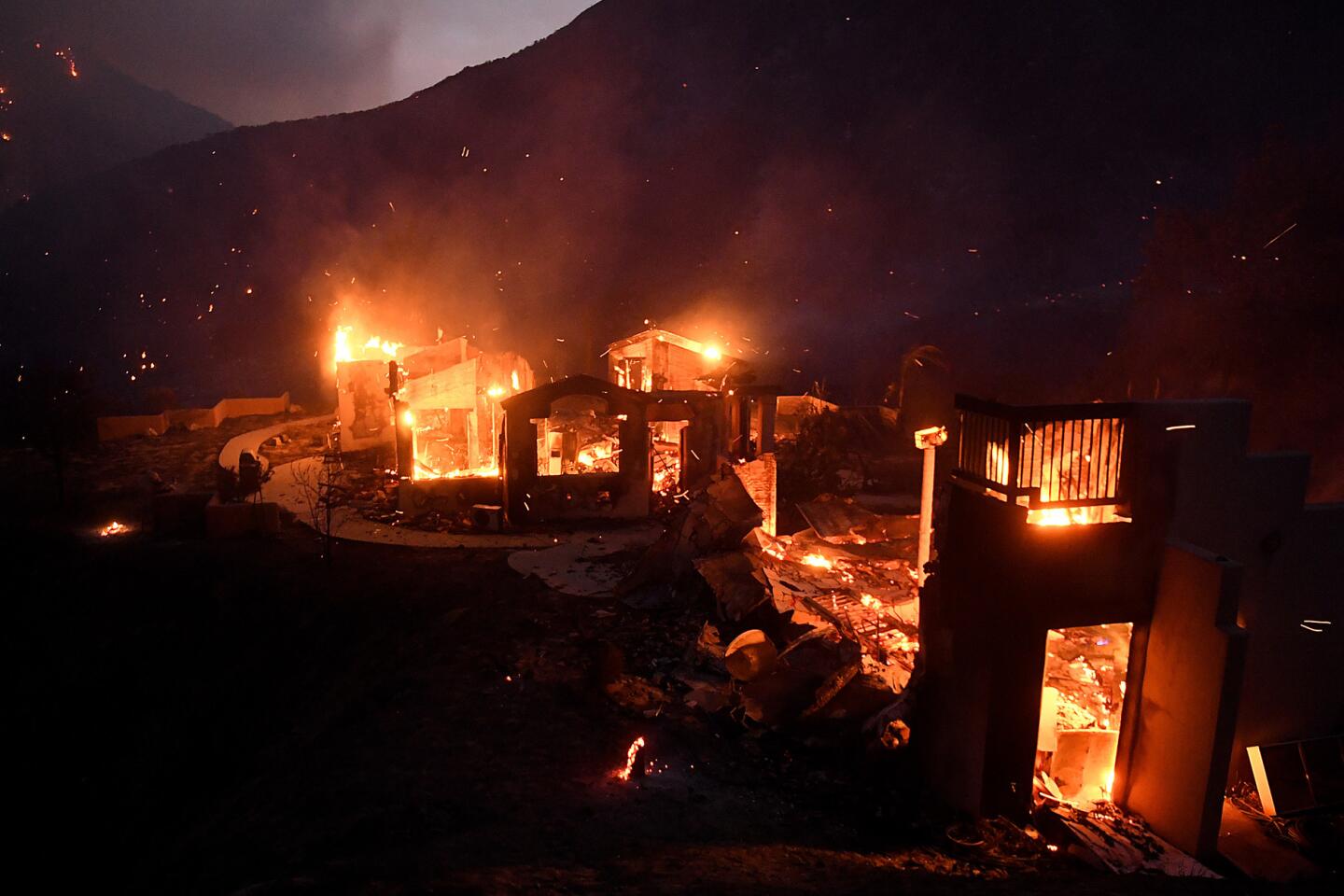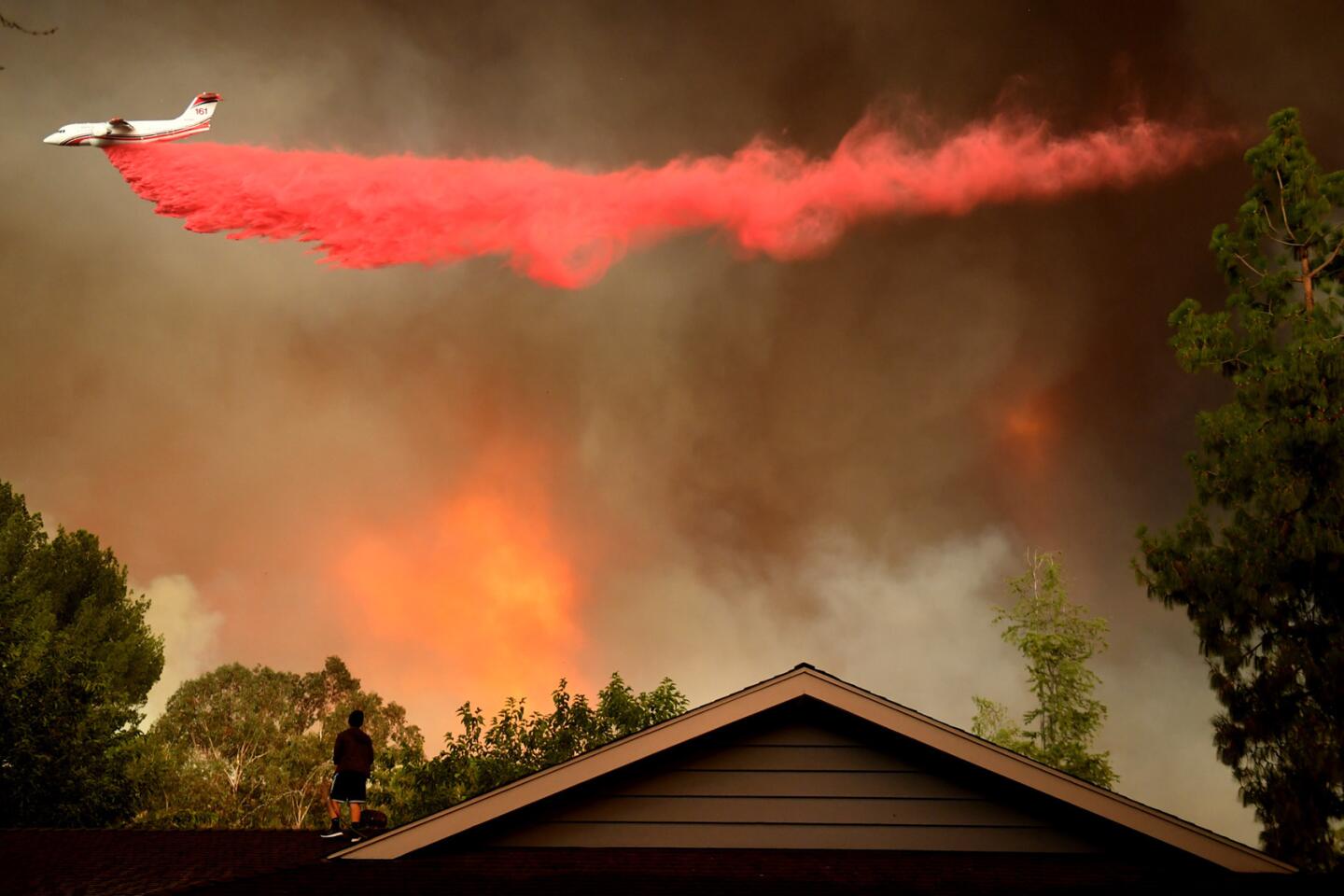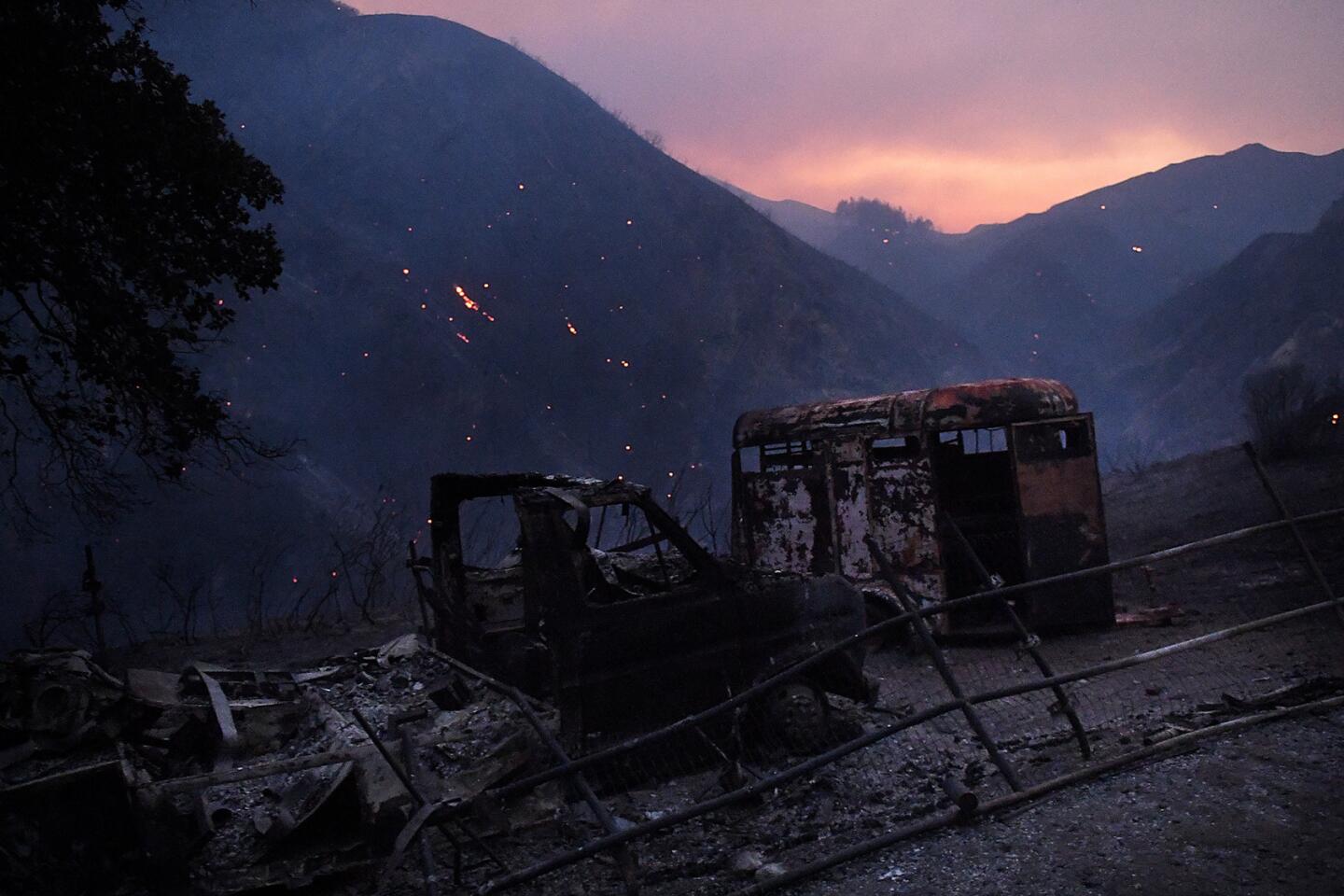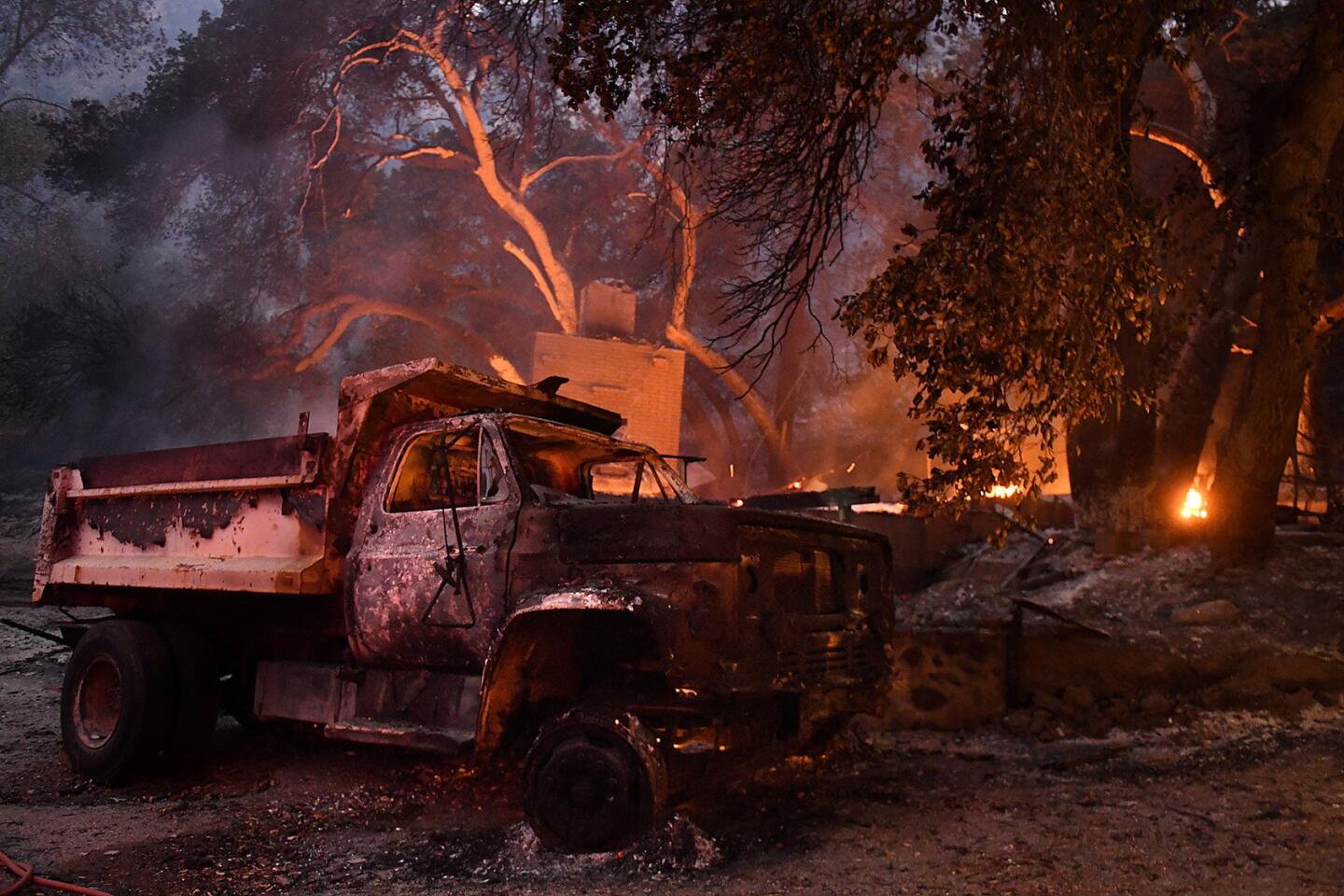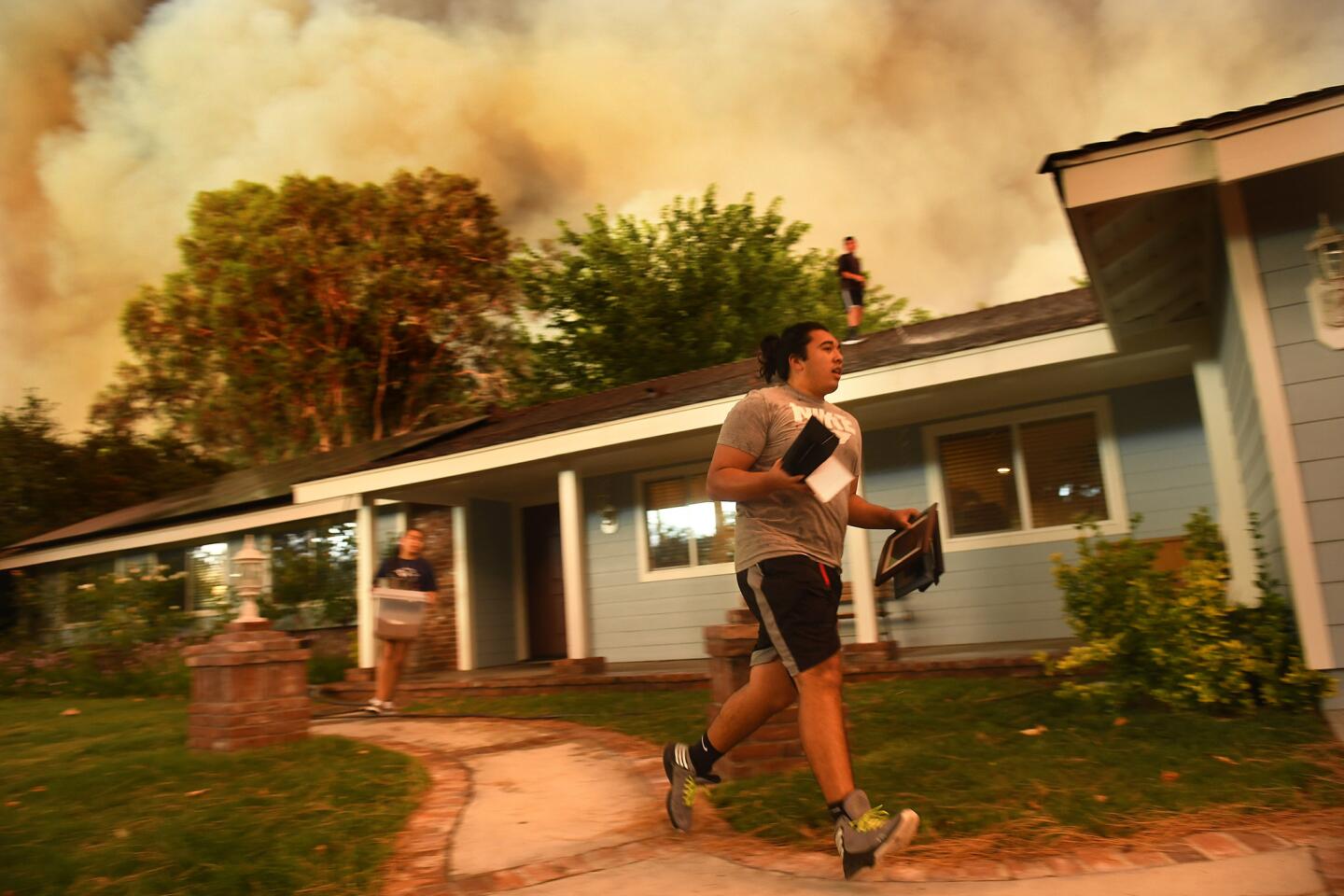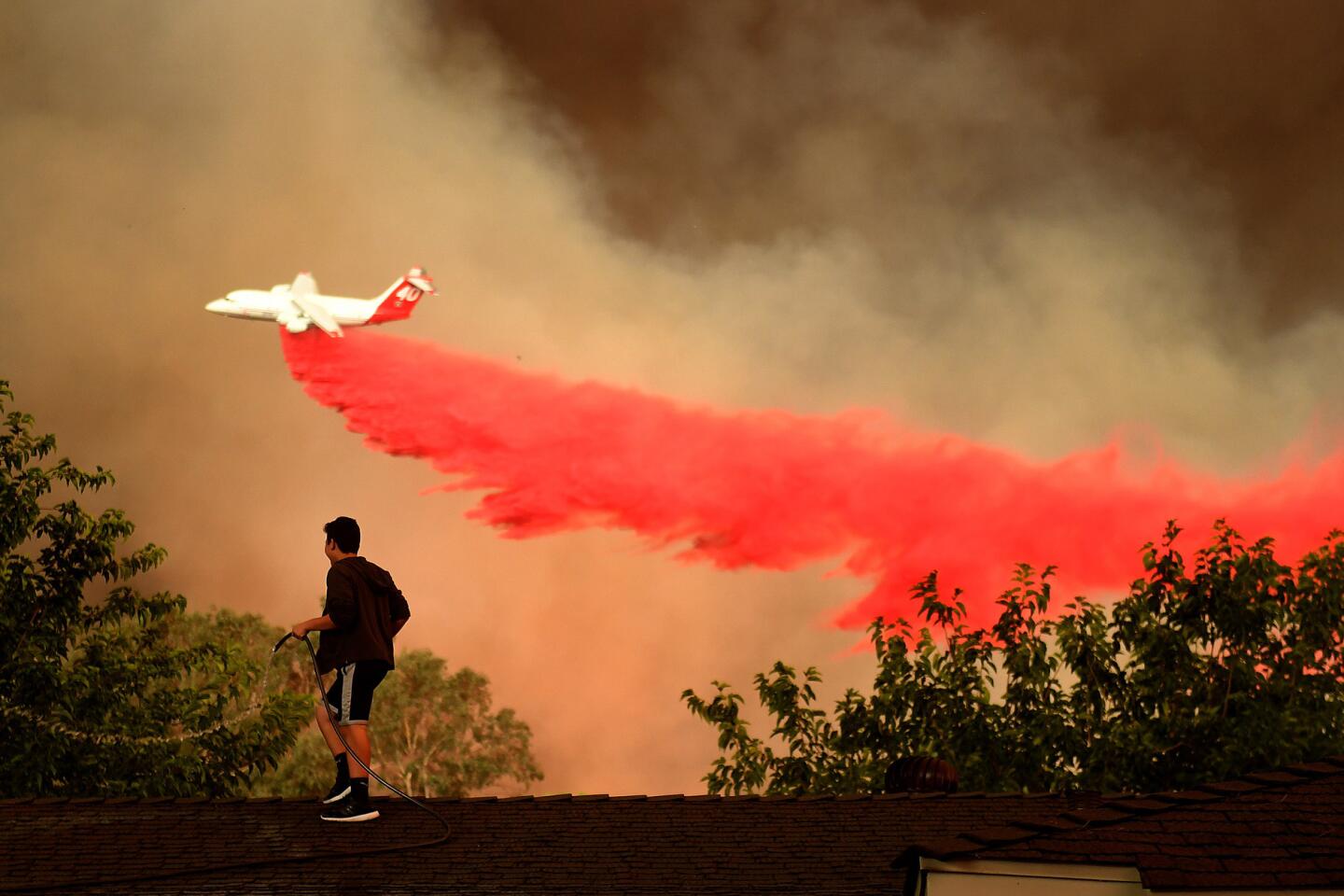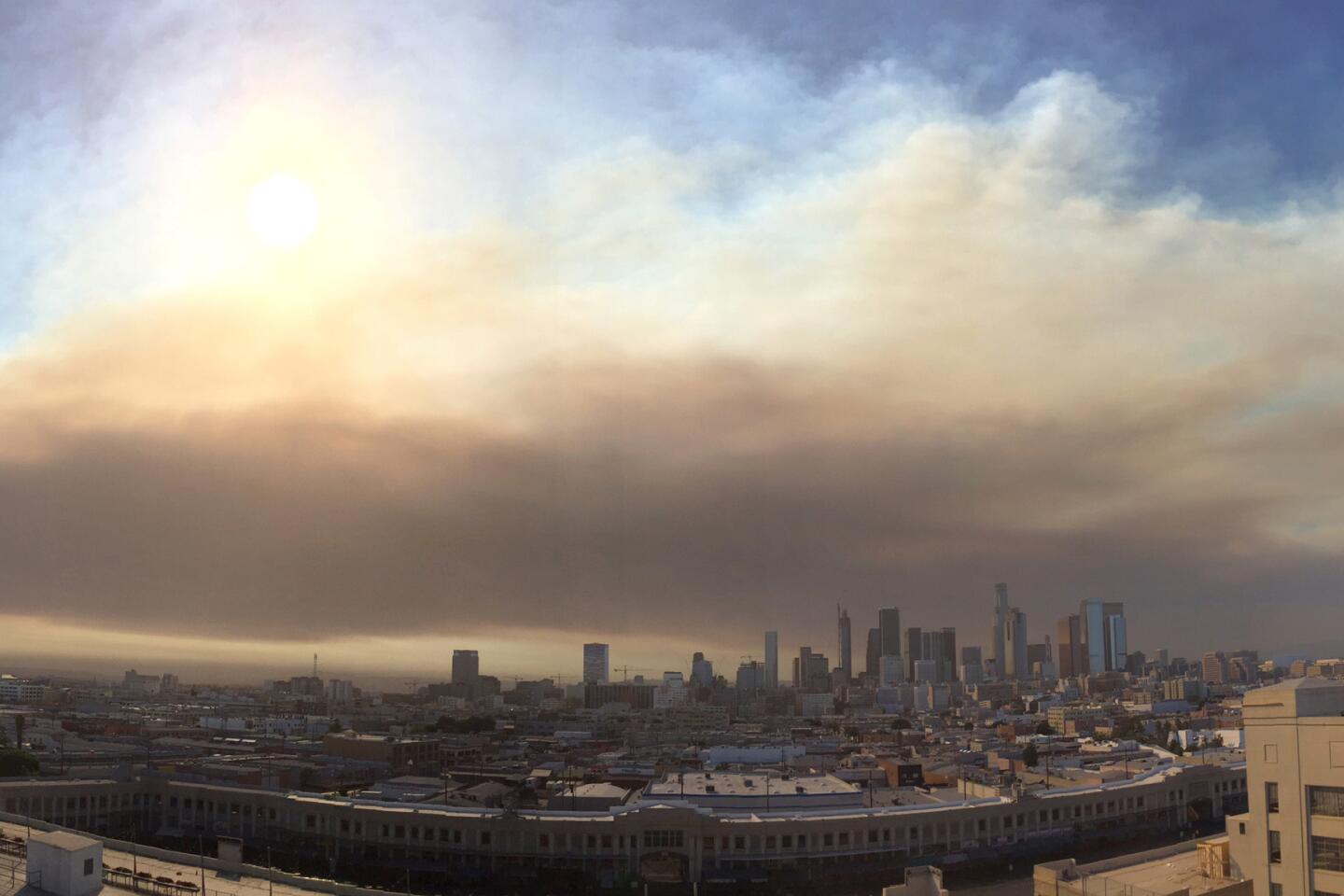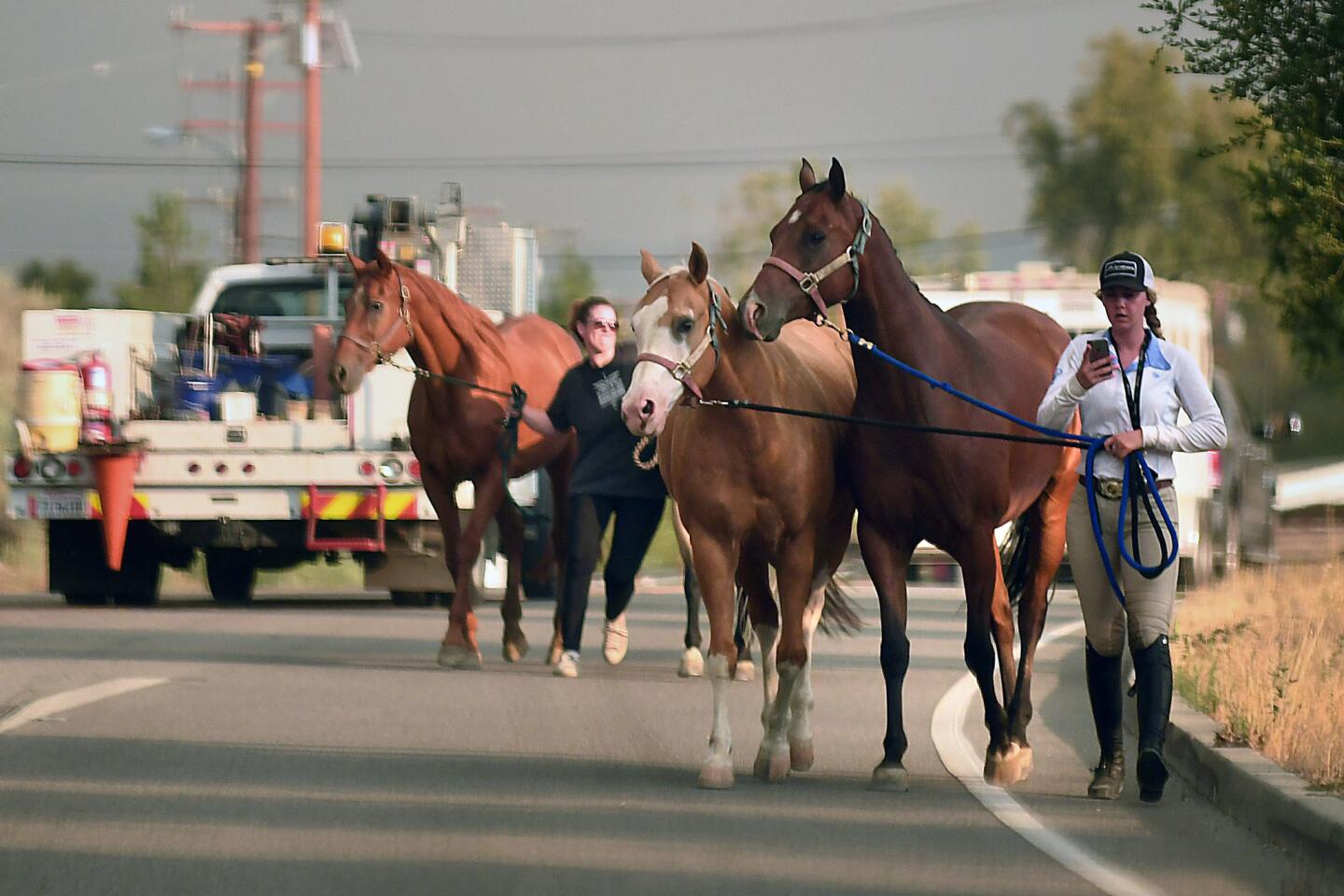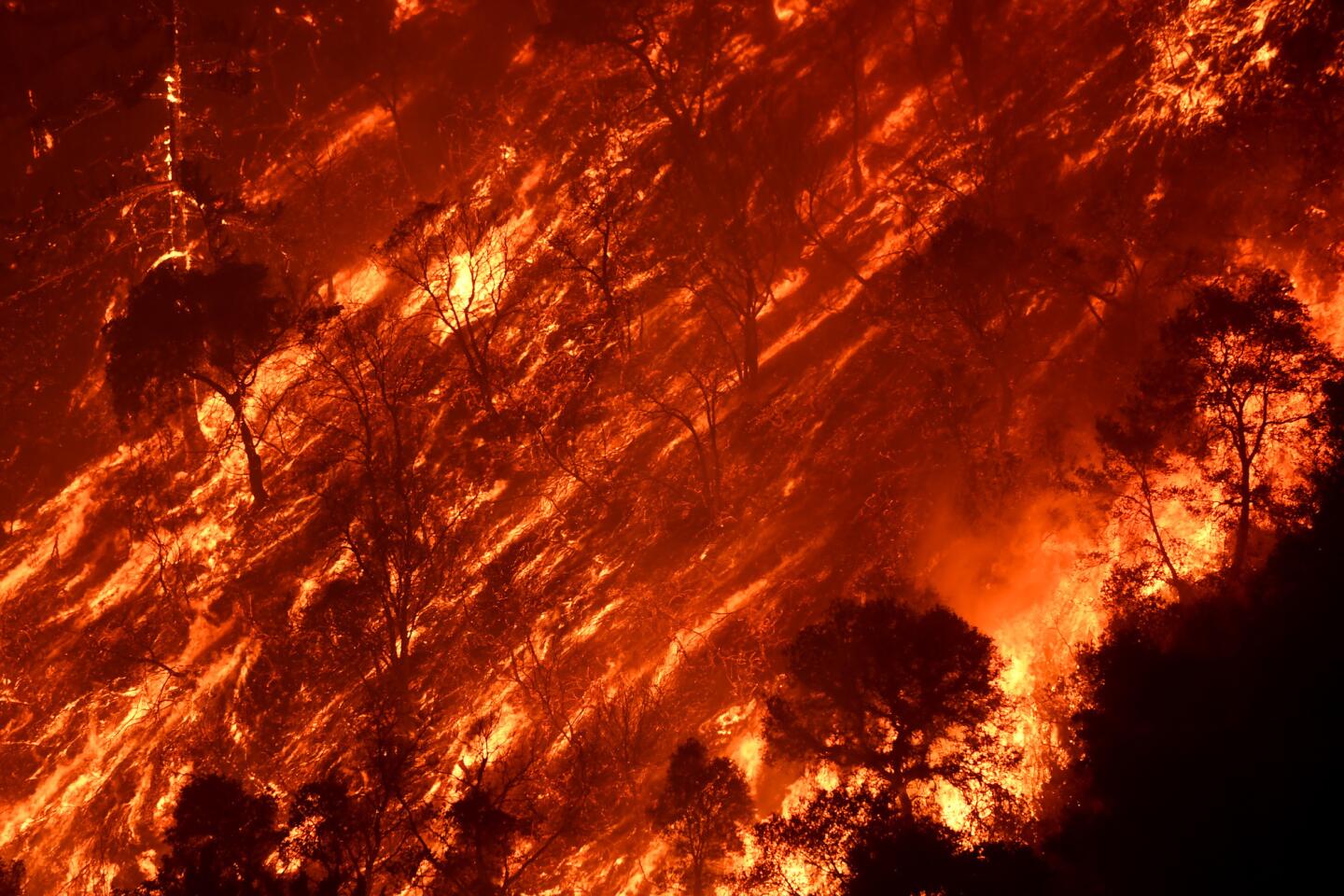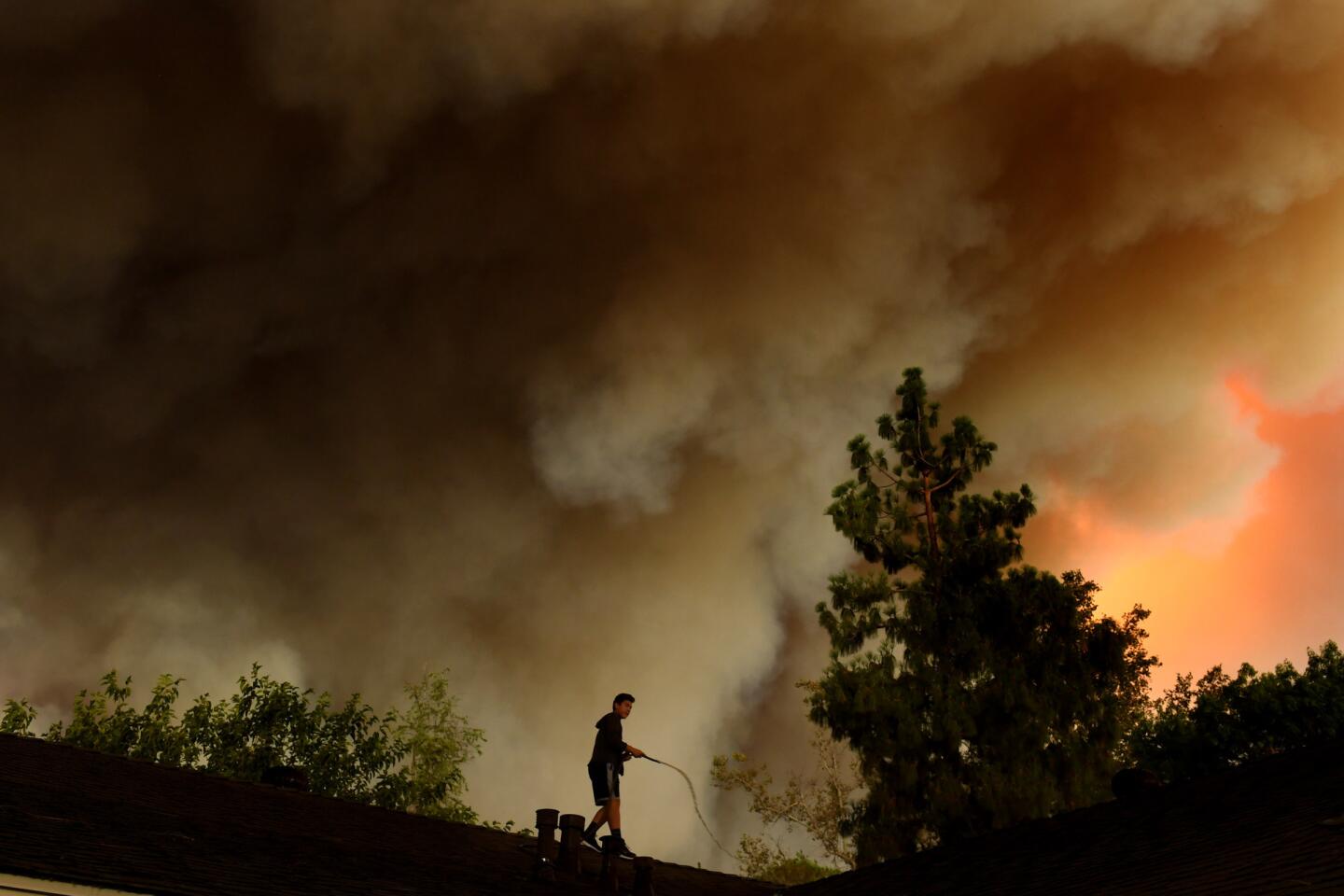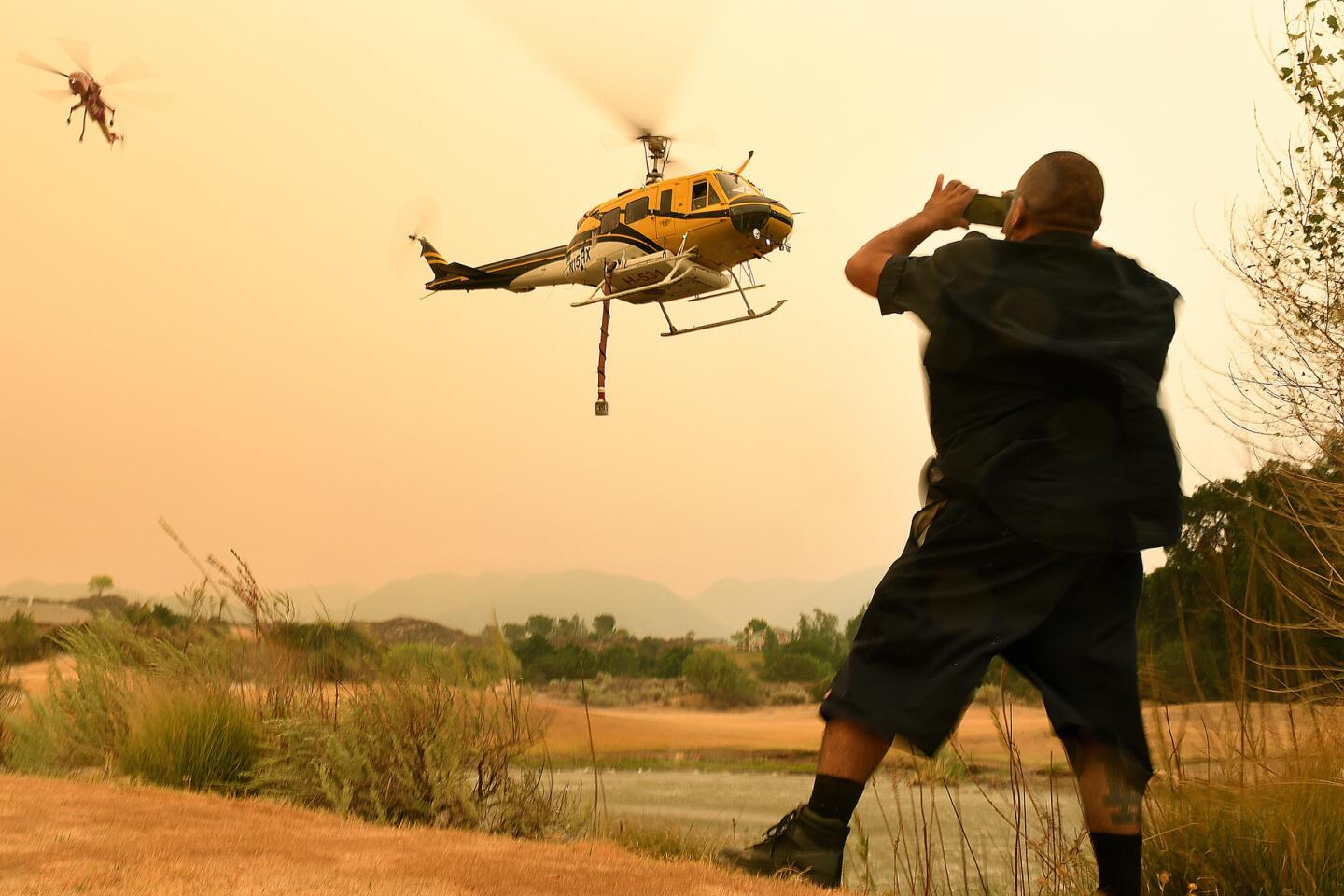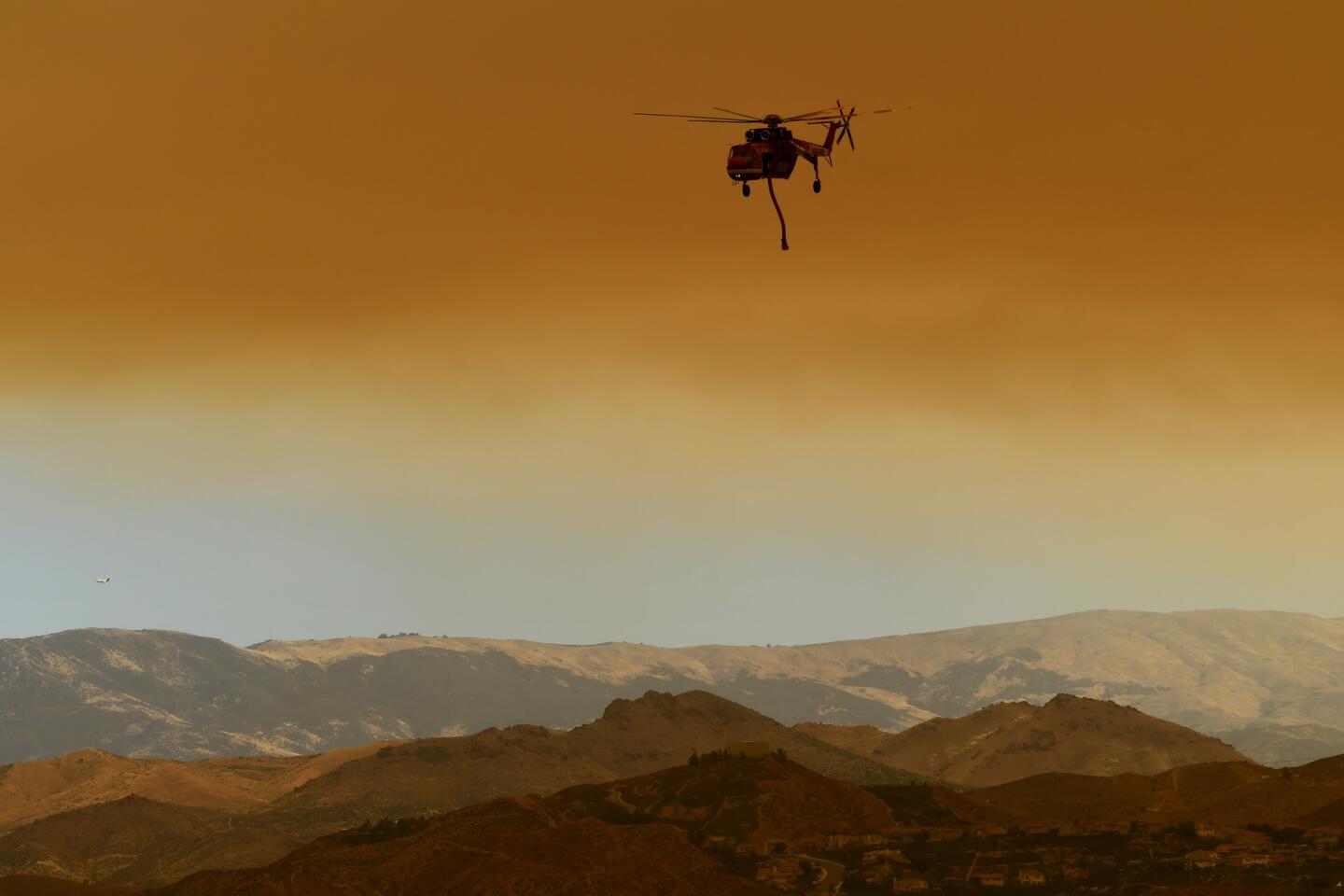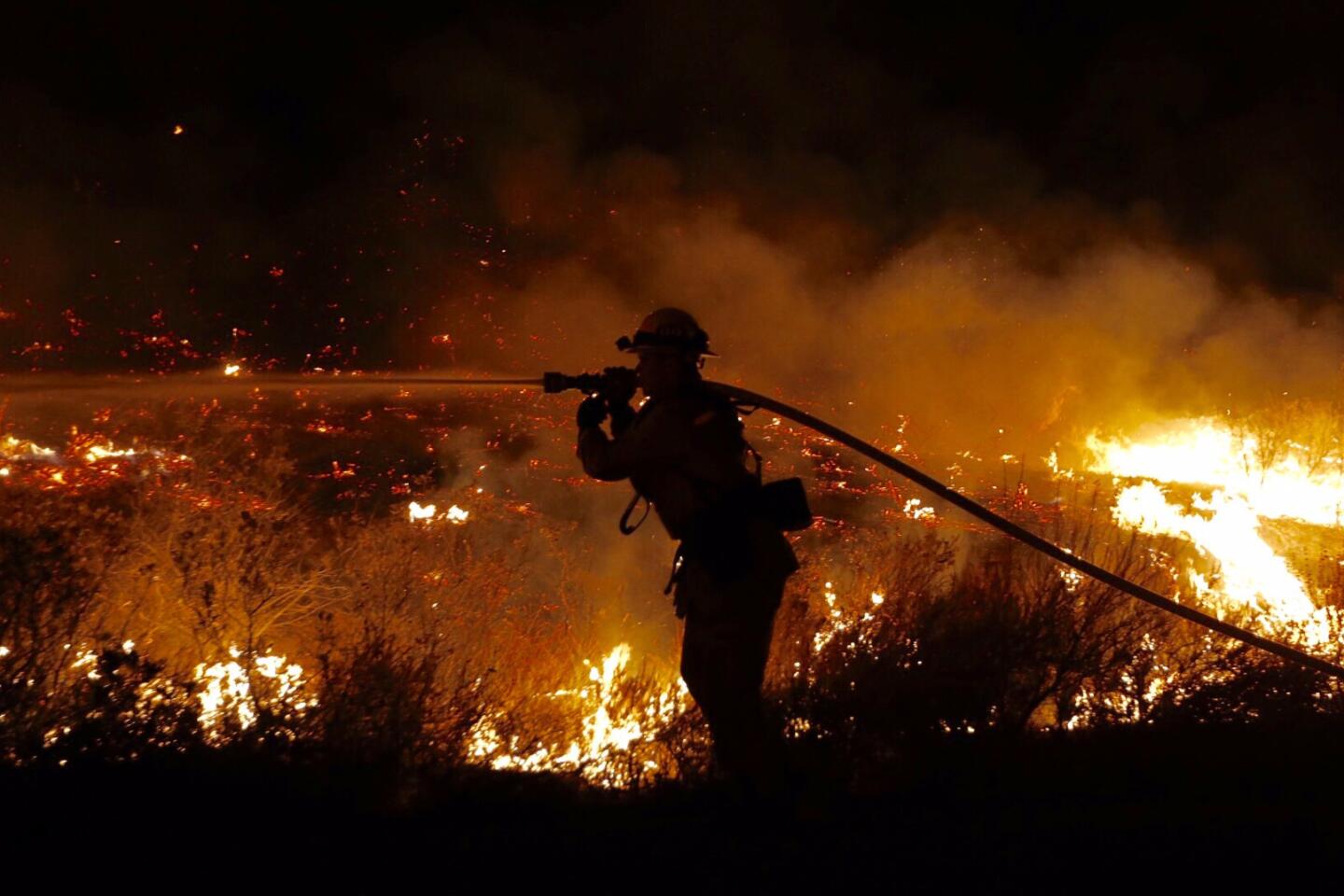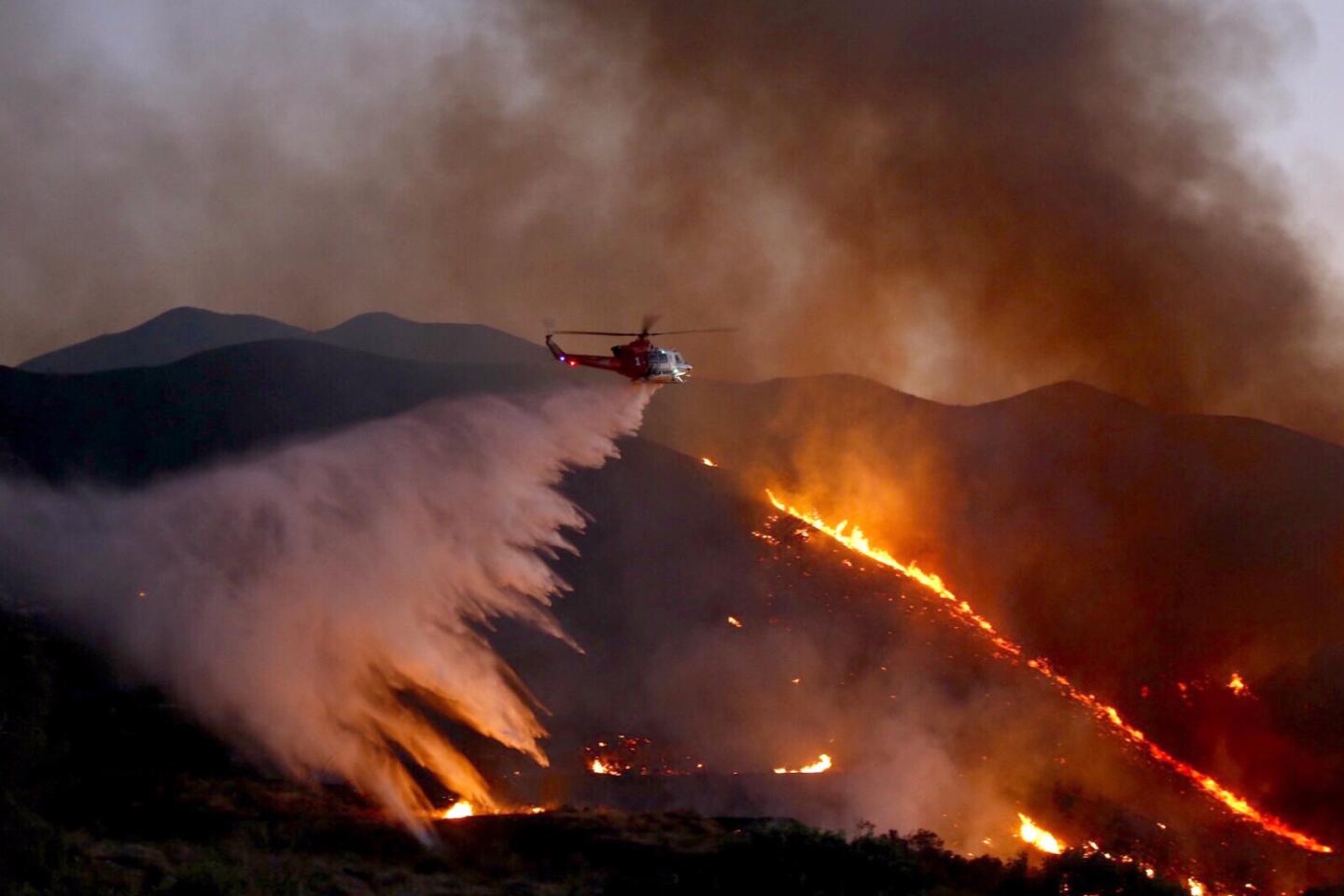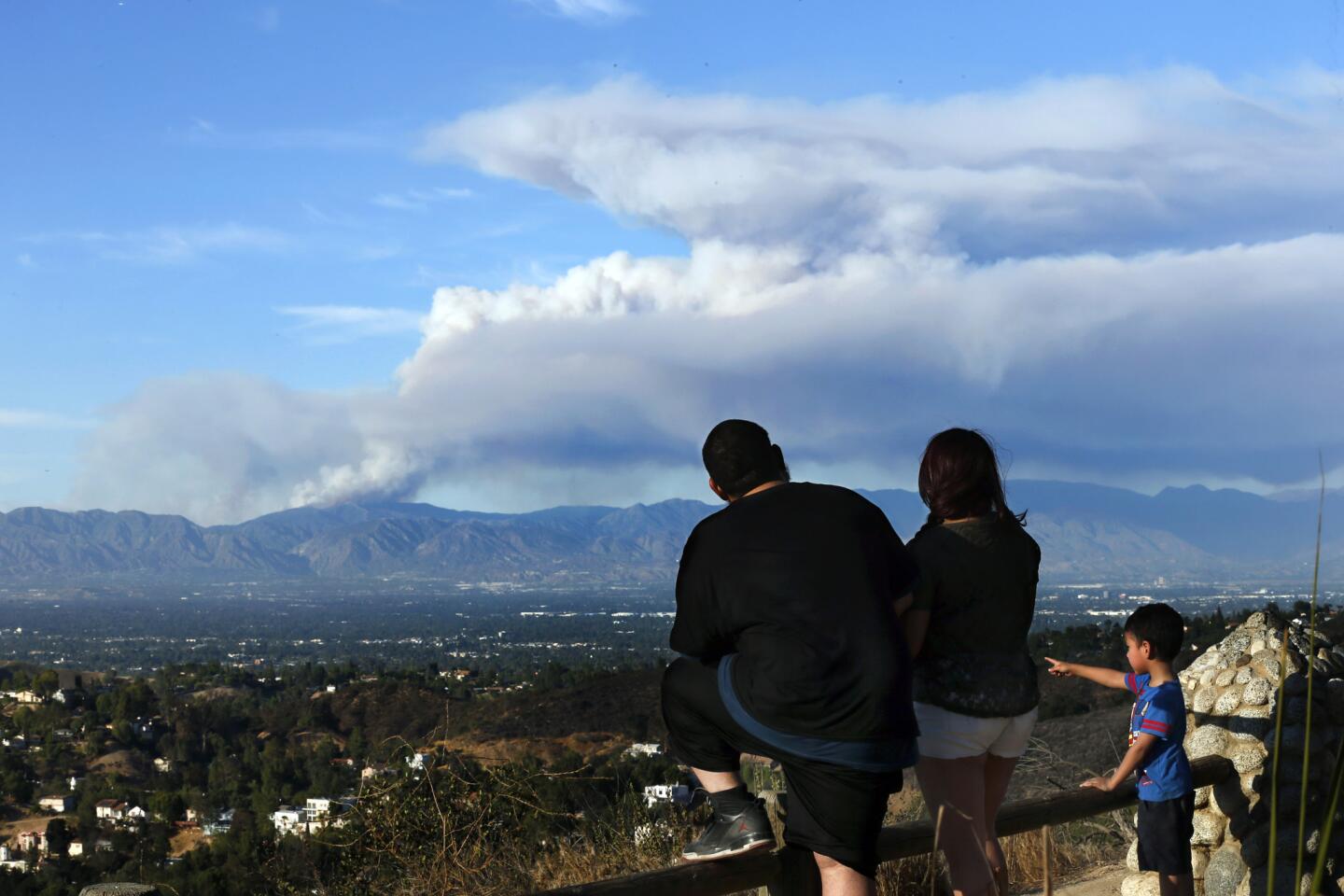‘Nothing normal’ about the Sand fire in the Santa Clarita Valley, officials say
- Share via
Before the flames of the Sand fire ripped through the Santa Clarita Valley this weekend, destroying homes and charring hillsides, officials had been on high alert.
They had every reason to be worried.
The National Weather Service had issued a red flag warning across Southern California, advising that an unrelenting heat wave, low humidity and powerful, gusty winds along the Interstate 5 corridor would create a dangerous environment for a wildfire.
Then a half-acre blaze broke out Friday afternoon next to the 14 Freeway at Soledad Canyon Road, and firefighters have struggled since to gain the upper hand as it raced through the canyons. The blaze mushroomed Saturday, scorching more than 33,000 acres by Sunday evening.
“These conditions were ripe for explosive and rapid fire growth,” said Todd Hall, a meteorologist with the National Weather Service in Oxnard.
What sparked the Sand fire, named after Sand Canyon, is under investigation. What officials do know is that after it erupted, the blaze spread southeast into the northern flanks of the Angeles National Forest, a terrain of steep arroyos and dry chaparral.
The area has seen fires in recent years, but much of the brittle brush and shrub has not burned in some 60 years, said John Tripp, a Los Angeles County deputy fire chief. The vegetation — dry from the years-long drought — fueled the fire, whose flames whipped 20 to 50 feet high and seemed to jump ahead by a quarter mile at a time, officials said.
“Five years ago, if we had a similar fire, we would have probably caught [it] at the ridge,” Los Angeles County Fire Department Chief Daryl L. Osby said during a news conference this weekend.
Firefighters had to cope with heavy winds, with gusts of up to 40 mph that pushed flames into remote pockets of the hilly region. The wind pattern that initially fed the blaze began to shift Sunday, with a sea breeze blowing toward the north for much of the afternoon, then reversing about 9 p.m. The erratic shift in winds pushed the fire northeast toward Acton, where evacuations were ordered Sunday.
The weather service forecast temperatures of 96 to 100 degrees in the Santa Clarita Valley on Monday, with winds of 10 to 20 mph in the afternoon.
Hall, the meteorologist, said the weather should improve in the next few days and aid firefighters, with higher humidity that will help tamp down the flames and contain the blaze. Later in the week could bring monsoonal moisture and thunderstorms that could bring additional moisture but frustrate firefighters if accompanied by lightning strikes.
The variables of weather have already led officials to extend evacuation orders even after they were initially canceled. Los Angeles County Sheriff’s Capt. Roosevelt Johnson made a plea for residents to be patient.
“People need to be really flexible with us,” Johnson said. “There’s nothing normal about this fire.”
For more breaking news from Southern California, follow us on Twitter: @MattHjourno and @marisagerber
ALSO
Judge questions private talks between coastal commissioners and developer’s consultants
State Bar urged to discipline lawyer accused of threatening council president
Spend a day behind the scenes at the San Diego Zoo as it turns 100
More to Read
Sign up for Essential California
The most important California stories and recommendations in your inbox every morning.
You may occasionally receive promotional content from the Los Angeles Times.
